Lot 1 Petersham Rd, Hardwick, MA
13.71 acres


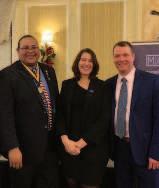
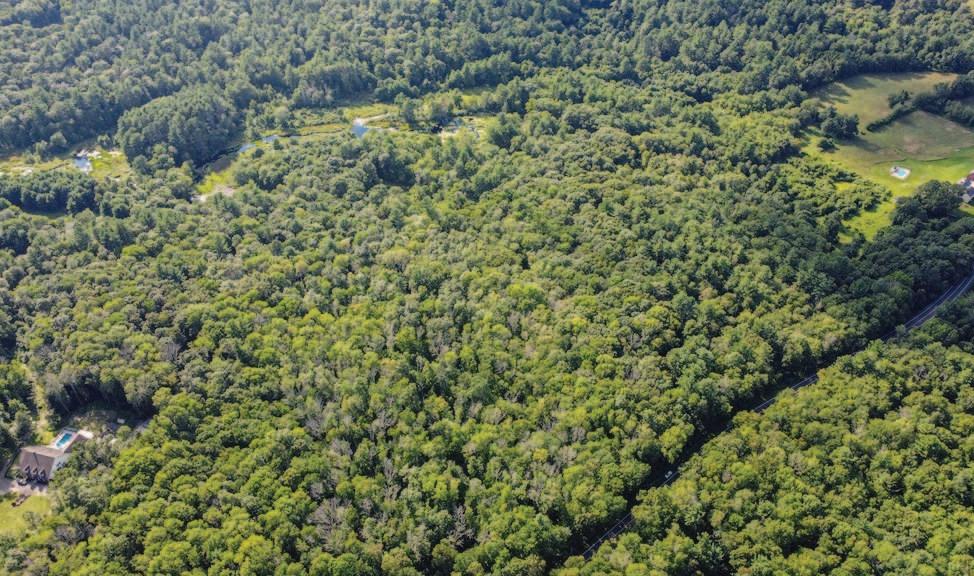
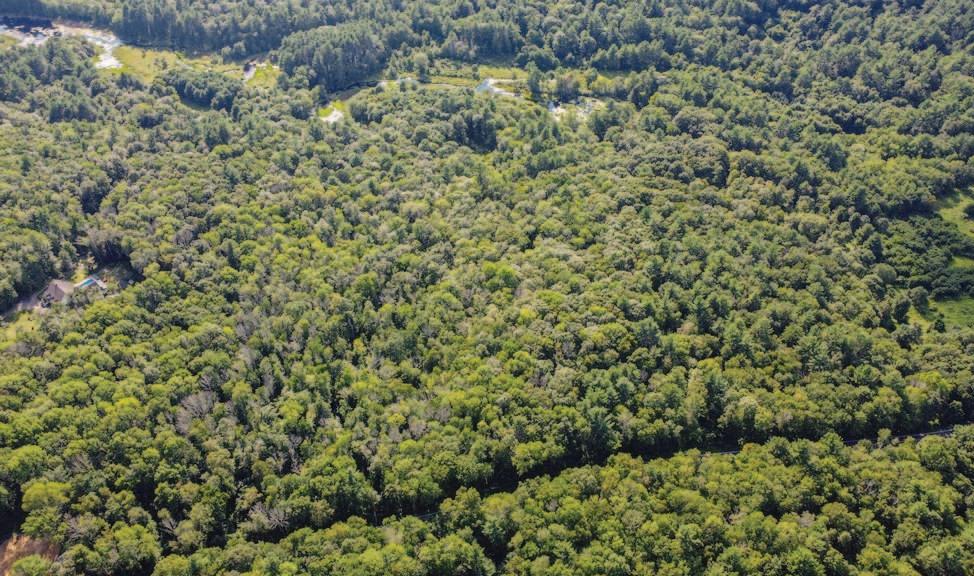
Escape the hustle and bustle of city life and embrace the tranquility that Beautiful Central Massachusetts o ers!
This is your chance to own 13+ acres of residential developable land in scenic Hardwick MA. Scan the QR code for more information.

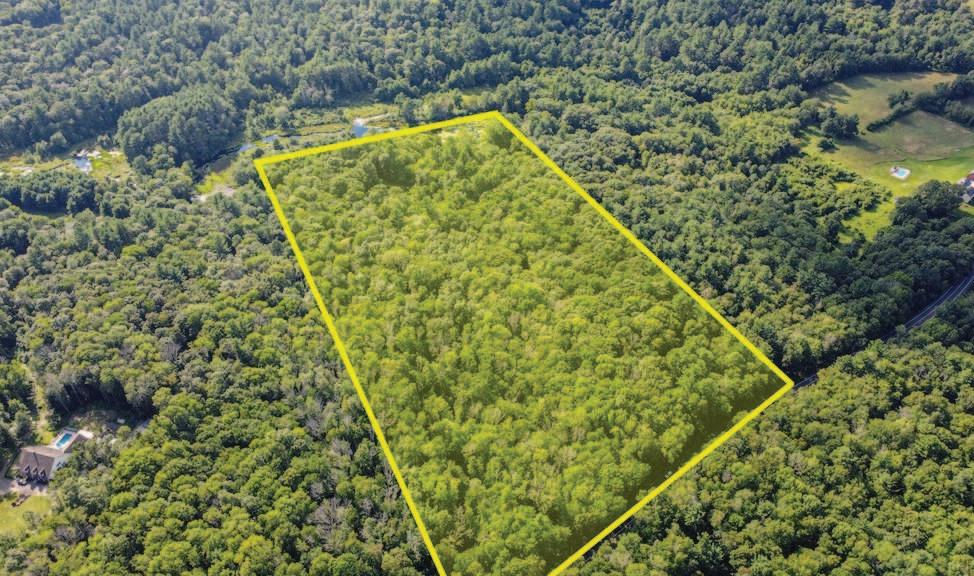
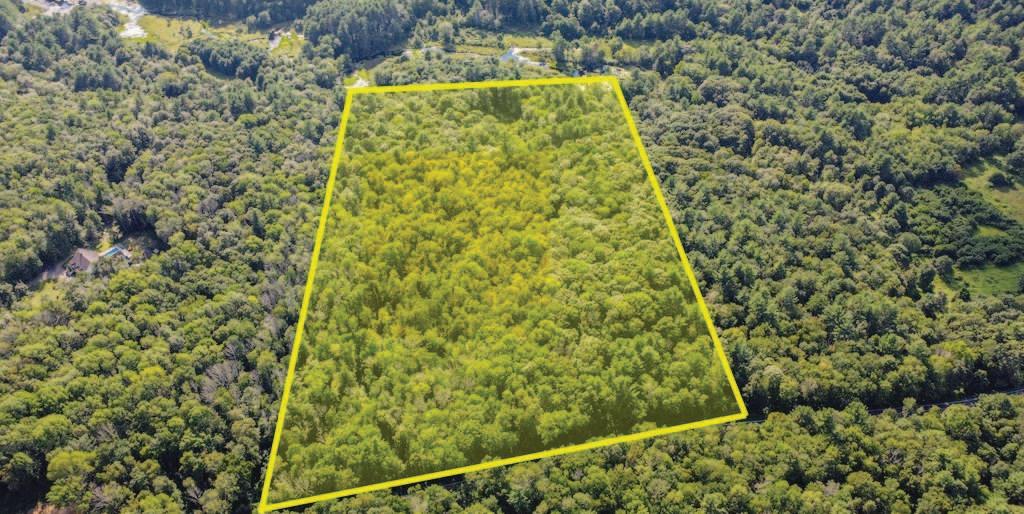
Kurt Thompson kurt@homesjustforyou.com 978-833-3569 SEE THE PRICE AND MORE PHOTOS: https://rem.ax/Hardwick The HomesJustForYou Team at RE/MAX Liberty, 23 Village Inn Rd Unit A-1, Westminster, MA
Lot is across from 1290 Petersham Road- see sign.
Remarks
Escape the hustle and bustle of city life and embrace the tranquility that Beautiful Central Massachusetts offers. This is your chance to own 13+ acres of residential developable land in scenic Hardwick MA. This gorgeous property boasts proximity to the breathtaking Quabbin reservoir and acres of conservation land. Imagine designing and building the home of your dreams without compromising on the privacy and serenity of this location. Or maybe a rustic getaway where you can reconnect with nature, unwind, and indulge in outdoor recreation like hiking, camping, fishing, boating and wildlife observation. Create lasting memories by spending quality time together in the great outdoors. Here, nature’s wonders and privacy come together to offer the perfect canvas for the lifestyle you’ve always dreamed of. 415ft of frontage, offers possibilities Buyer to perform all due diligence regarding building and if lot can be split. This is the lot you have been waiting for!!!
PropertyInformation
Total Approx. Acres: 13.71 (597,207 Sq. Ft.)
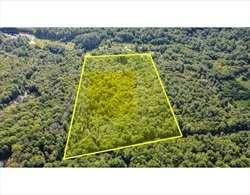
Cultivation Acres:
Home Own Assn: No
No. of Approved Lots:Pasture Acres: Assn Req: Approx. Street Frontage: 415 Ft Timber Acres: HOA Fee: Disclosures: See all documents attached at the "paper clip". Illustrated lot overlay is for example purposes only to help identify lot location and is not an accurate indication of lot lines. Buyer to perform all due diligence regarding building and if lot can be split.
Features
Area Amenities: Park, Walk/Jog Trails, Conservation Area, Public School Beach: No
Cable Available:
Electric: At Street
Gas: None
Land Description: Level, Wetlands, Wooded, Gentle Slope Road Type: Public, Paved, Publicly Maint.
Sewer Utilities: Private
Water Utilities: Private
Waterfront: No
Water View: No
Zone Usage: Single Family, Agriculture, Other (See Remarks)
OtherPropertyInfo
Adult Community: No
DEQE/DEP#:
Disclosure Declaration: No
Perc Test: No
Short Sale w/Lndr.App.Req: No
Lender Owned: No
TaxInformation
Pin #:
Assessed: $70,500
Tax: $940 Tax Year: 2023
Book: 10551 Page: 153
Cert:
Zoning Code: AR60
Map: 0150 Block: 0 Lot: 0001-B
Compensation
Sub-Agent: Not Offered Buyer Agent: 2.5%
Facilitator: 2.5%
Compensation Based On: Net Sale Price
Office/AgentInformation
Listing Office: RE/MAX Liberty (978) 786-5160
Listing Agent: Kurt Thompson (978) 833-3569
Team Member(s):HomesJustForYou Team - Leominster (978) 786-5160;Thomas Blake (508) 951-2803
Sale Office:
Sale Agent:
Listing Agreement Type: Exclusive Right to Sell, ER w/Var.Rate Comm.
Entry Only: No
Showing: Sub-Agent: Sub-Agency Relationship Not Offered
Showing: Buyer-Agent: Go Direct, Sign, Schedule with ShowingTime or Call 888-627-2775
Showing: Facilitator: Go Direct, Sign, Schedule with ShowingTime or Call 888-627-2775
Special Showing Instructions: Call ShowingTime and go.
FirmRemarks
See all documents attached at the "paper clip". MarketInformation
Listing Date: 8/4/2023 Listing Market Time: MLS# has been on for 3 day(s) Days on Market: Property has been on the market for a total of 3 day(s)Office Market Time: Office has listed this property for 3 day(s) Expiration Date: Cash Paid for Upgrades: Original Price: $125,000 Seller Concessions at Closing: Off Market Date: Sale Date:
information in this listing was gathered from third-party sources including the seller and public records. MLS Property Information Network, Inc., and its subscribers disclaim any and all representations or warranties as to the accuracy of this information. Content ©2023 MLS Property Information Network, Inc.
The
1 Petersham Road
MA 01037
MLS#73144862-New Land-Residential Lot
Hardwick,
Worcester County List Price: $125,000 Grade School: Middle School: High School:
Route 32A.
Directions: Petersham Road is
The information in this listing was gathered from third-party sources including the seller and public records. MLS Property Information Network, Inc., and its subscribers disclaim any and all representations or warranties as to the accuracy of this information. Content ©2023 MLS Property Information Network, Inc.
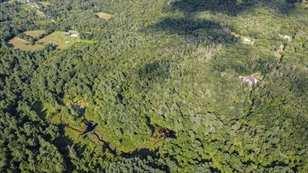
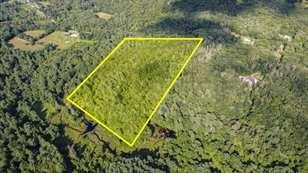

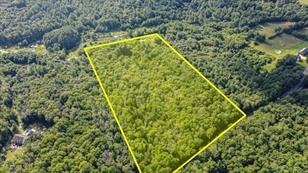

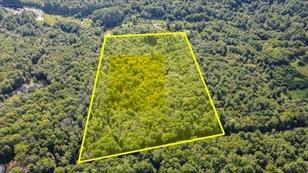
MLS # 73144862 - New Land - Residential List Price: $125,000
Lot 1 Petersham Road, Hardwick, MA 01037
The information in this listing was gathered from third-party sources including the seller and public records. MLS Property Information Network, Inc., and its subscribers disclaim any and all representations or warranties as to the accuracy of this information. Content ©2023 MLS Property Information Network, Inc.
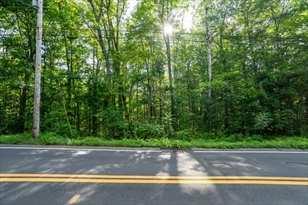
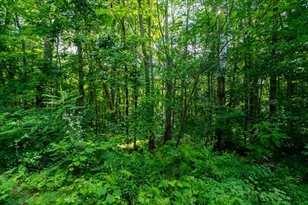
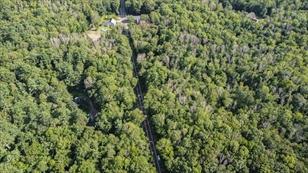

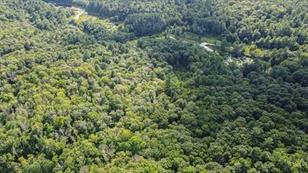

MLS # 73144862 - New Land - Residential List Price: $125,000 Lot 1 Petersham Road, Hardwick, MA 01037
The information in this listing was gathered from third-party sources including the seller and public records. MLS Property Information Network, Inc., and its subscribers disclaim any and all representations or warranties as to the accuracy of this information. Content ©2023 MLS Property Information Network, Inc.
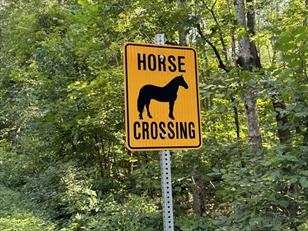
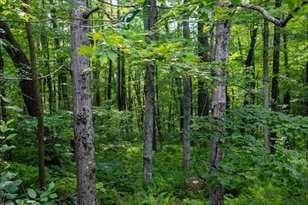

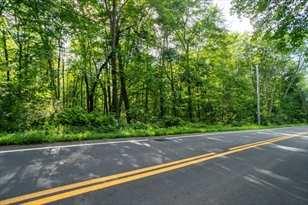
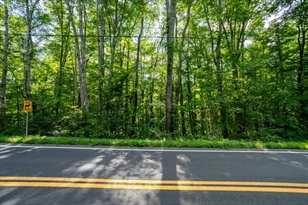
 MLS # 73144862 - New Land - Residential List Price: $125,000
Lot 1 Petersham Road, Hardwick, MA 01037
MLS # 73144862 - New Land - Residential List Price: $125,000
Lot 1 Petersham Road, Hardwick, MA 01037
The information in this listing was gathered from third-party sources including the seller and public records. MLS Property Information Network, Inc., and its subscribers disclaim any and all representations or warranties as to the accuracy of this information. Content ©2023 MLS Property Information Network, Inc.
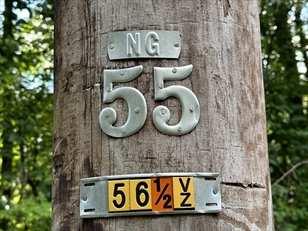

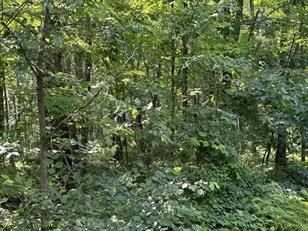


 MLS # 73144862 - New Land - Residential List Price: $125,000
Lot 1 Petersham Road, Hardwick, MA 01037
MLS # 73144862 - New Land - Residential List Price: $125,000
Lot 1 Petersham Road, Hardwick, MA 01037
The information in this listing was gathered from third-party sources including the seller and public records. MLS Property Information Network, Inc., and its subscribers disclaim any and all representations or warranties as to the accuracy of this information. Content ©2023 MLS Property Information Network, Inc.
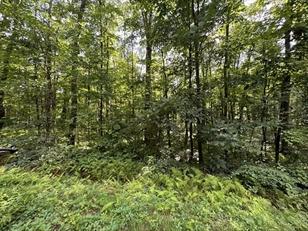

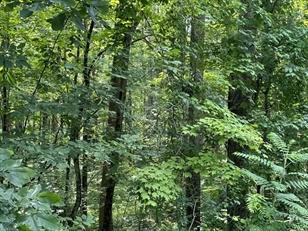

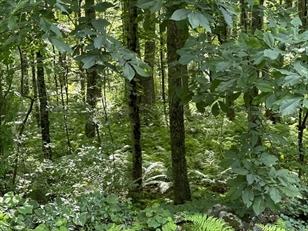
 MLS # 73144862 - New Land - Residential List Price: $125,000
Lot 1 Petersham Road, Hardwick, MA 01037
MLS # 73144862 - New Land - Residential List Price: $125,000
Lot 1 Petersham Road, Hardwick, MA 01037
The information in this listing was gathered from third-party sources including the seller and public records. MLS Property Information Network, Inc., and its subscribers disclaim any and all representations or warranties as to the accuracy of this information. Content ©2023 MLS Property Information Network, Inc.
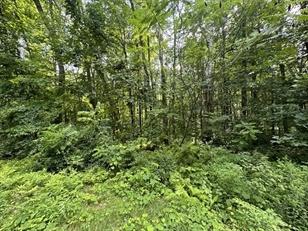
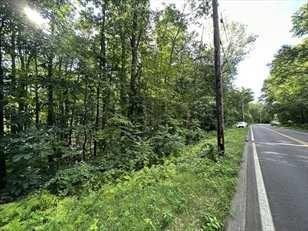


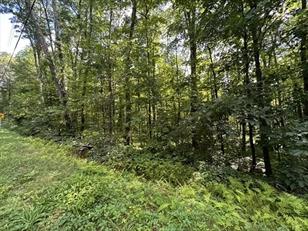
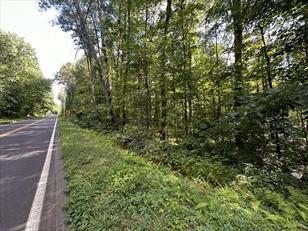 MLS # 73144862 - New Land - Residential List Price: $125,000
Lot 1 Petersham Road, Hardwick, MA 01037
MLS # 73144862 - New Land - Residential List Price: $125,000
Lot 1 Petersham Road, Hardwick, MA 01037
MLS # 73144862 - New
Lot 1 Petersham Road, Hardwick, MA 01037
Office/Agent Information
Office: RE/MAX Liberty (978) 786-5160
Agent: Kurt Thompson (978) 833-3569
Team Member(s): HomesJustForYou Team - Leominster (978) 786-5160;Thomas Blake (508) 951-2803
Land - Residential List Price: $125,000
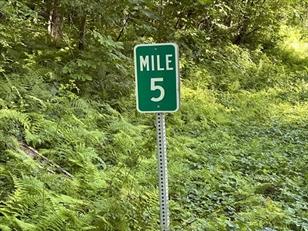
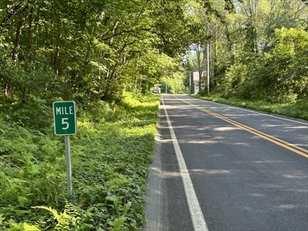

The information in this listing was gathered from third-party sources including the seller and public records. MLS Property Information Network, Inc., and its subscribers disclaim any and all representations or warranties as to the accuracy of this information. Content ©2023 MLS Property Information Network, Inc.

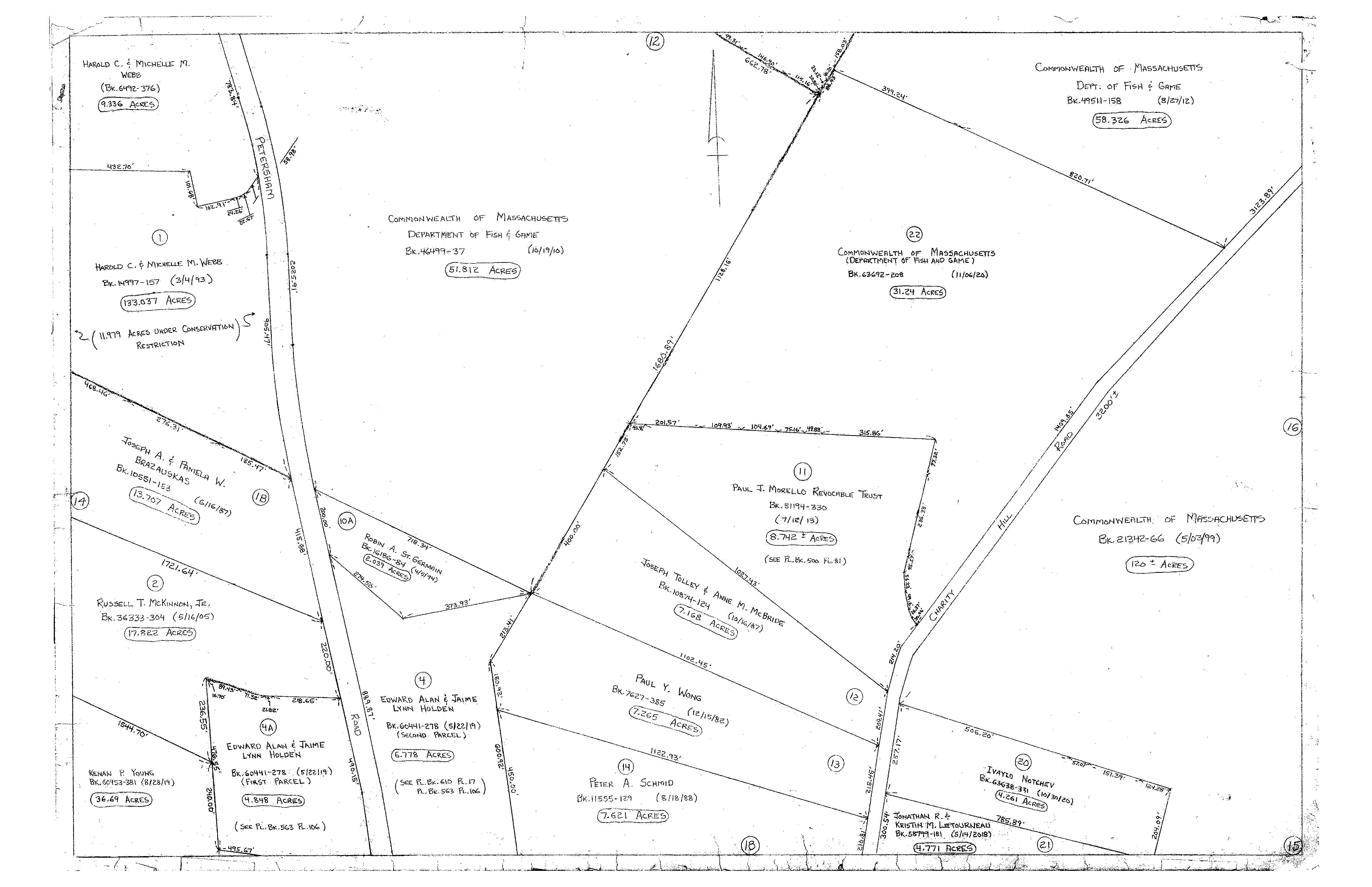
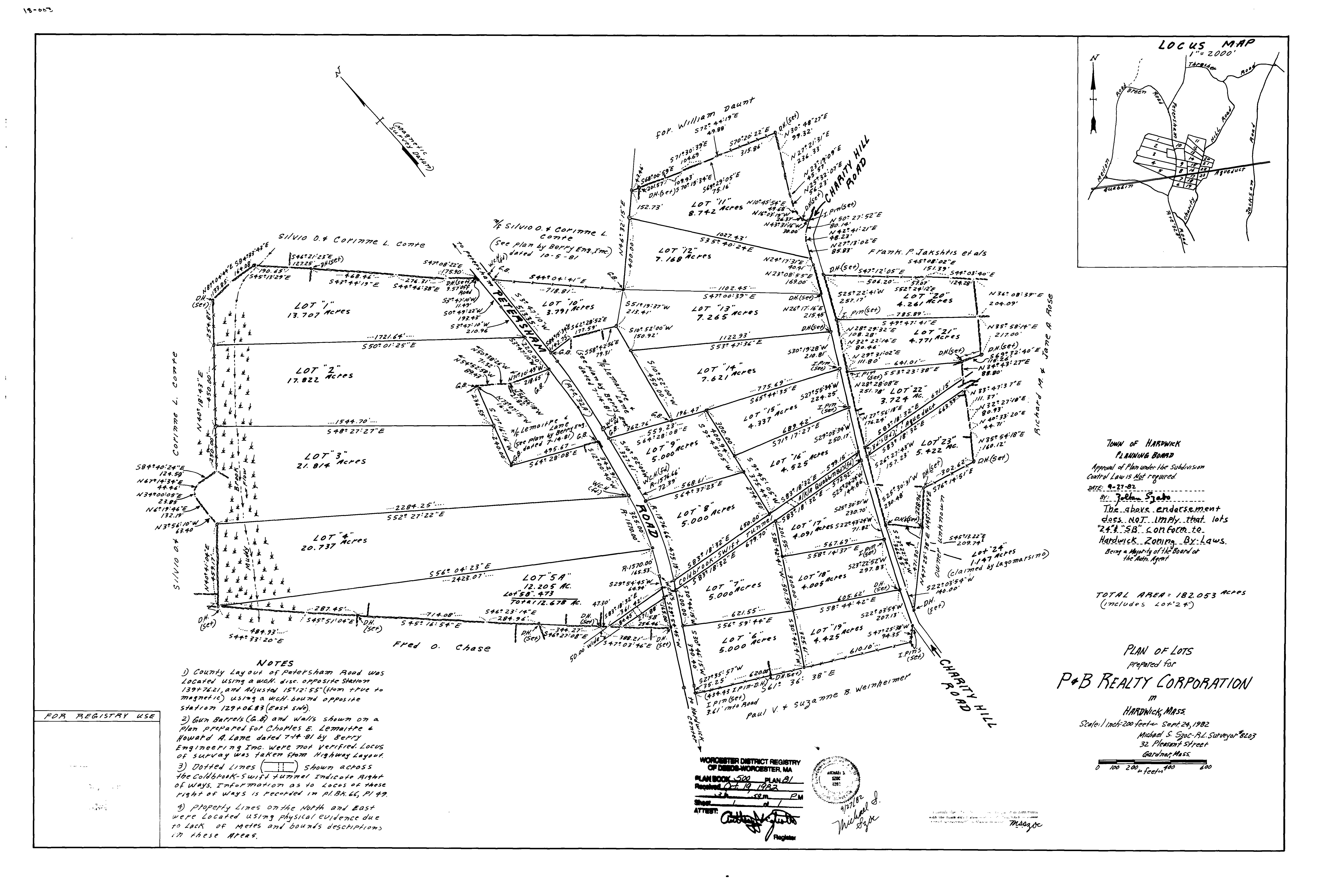
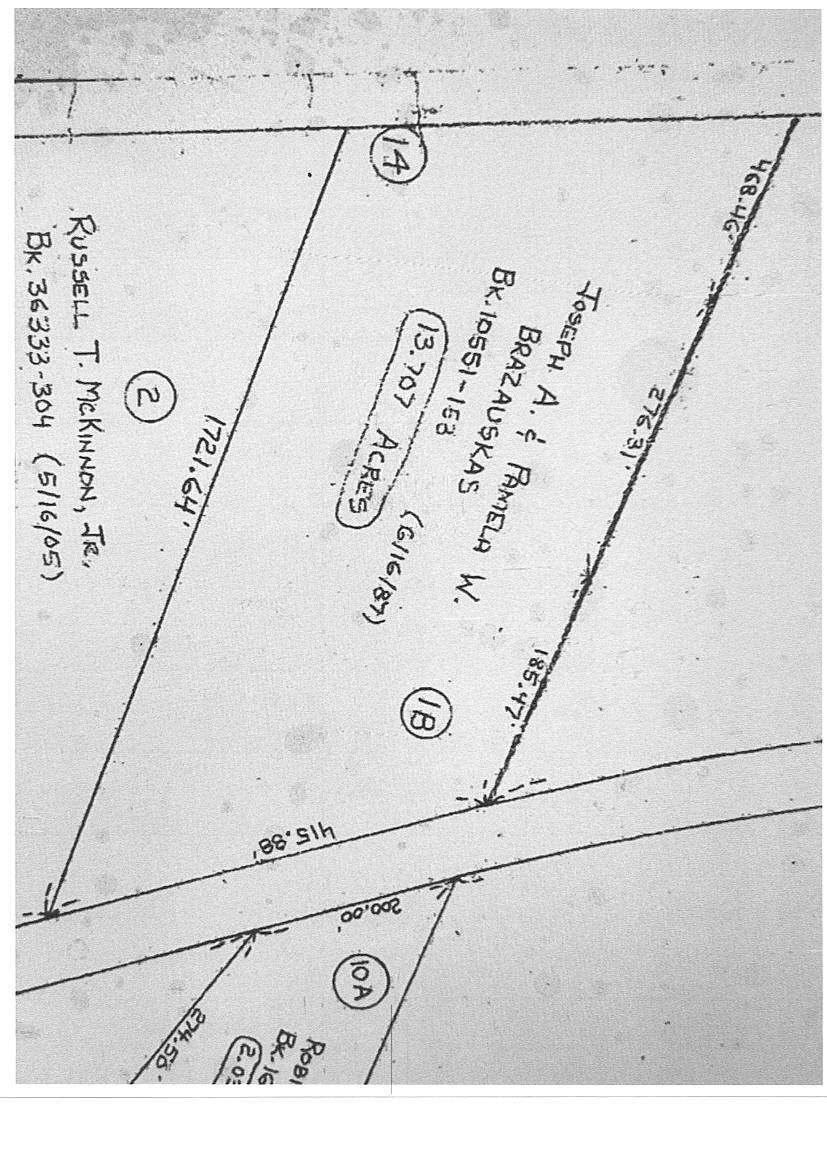

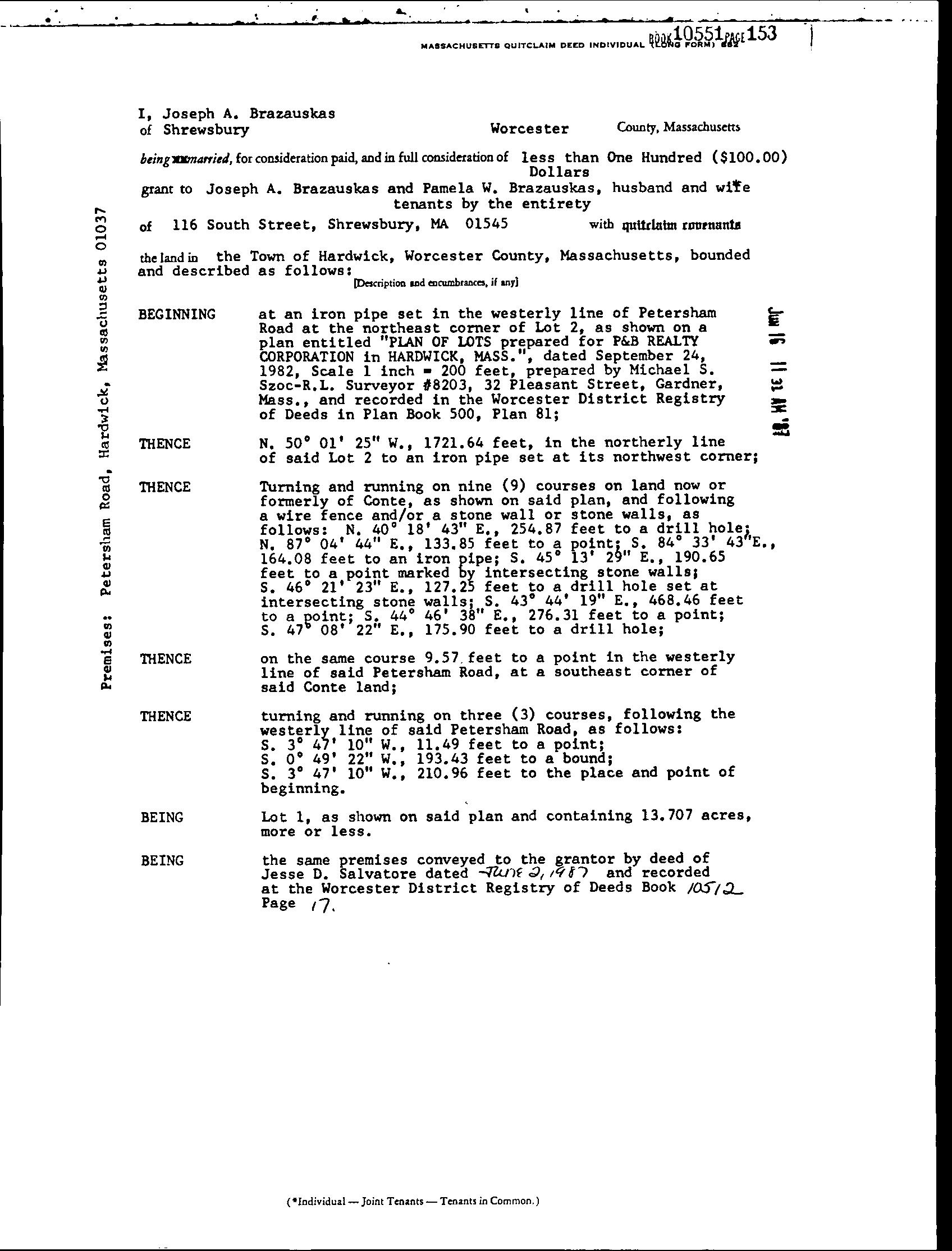
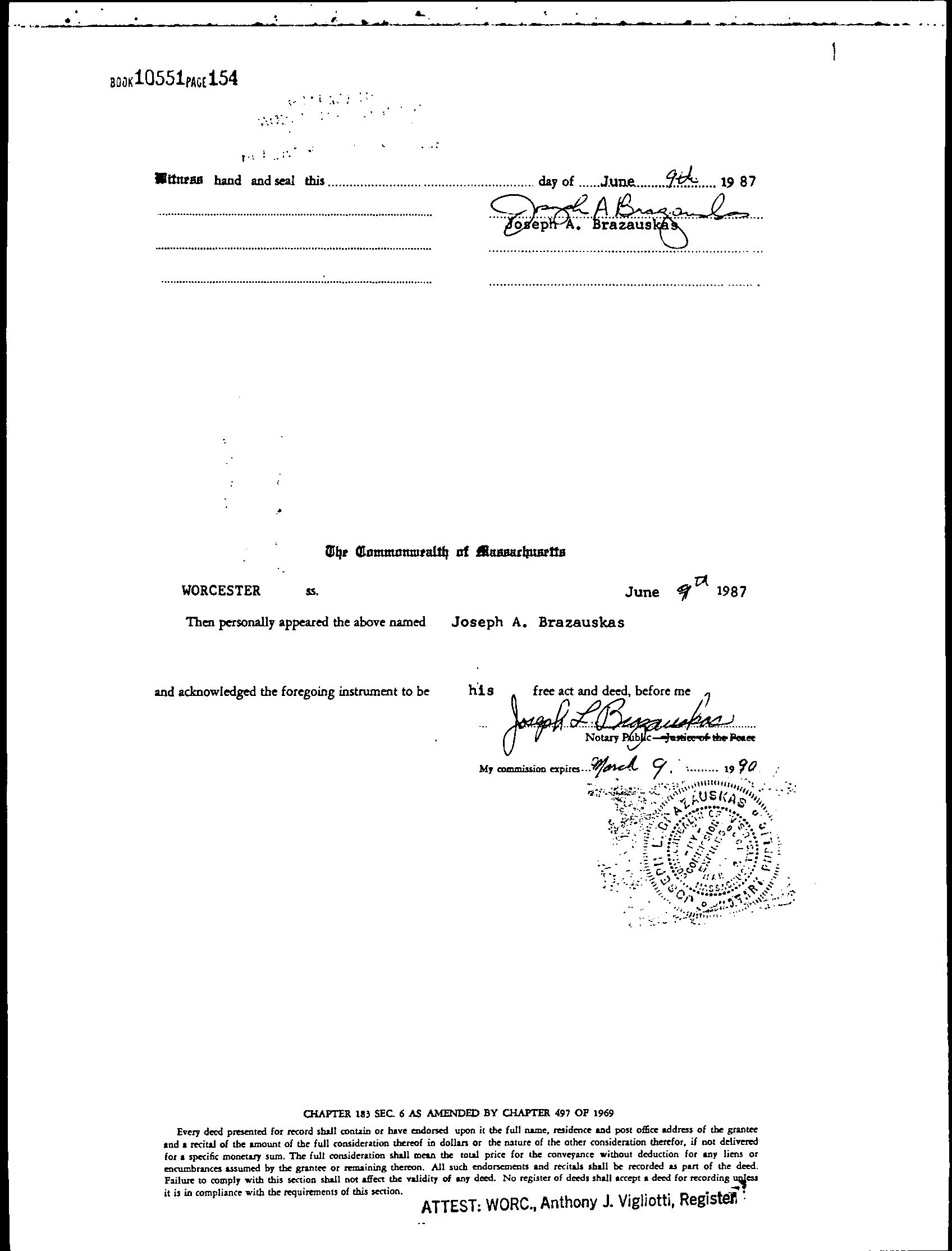
HARDWICK, MASSACHUSETTS
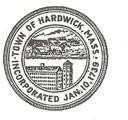
ZONING BYLAW
ADOPTED MAY 17, 2012
AMENDED JUNE 1 6 , 2018
Hardwick Zoning Bylaw i TABLE OF CONTENTS 1.0 GENERAL...............................................................................................................................................1 1.1 Authority..............................................................................................................................................1 1.2 Purpose ................................................................................................................................................1 1.3 Basic Requirements.............................................................................................................................1 1.4 Definitions...........................................................................................................................................1 1.5 Non-Conforming Properties and Uses.................................................................................................7 1.5.1 Continuation and Change .............................................................................................................7 1.5.2 Non-Conforming Uses and Structures..........................................................................................8 2.0 ESTABLISHMENT OF DISTRICTS .....................................................................................................9 2.1 Classes of Districts ..............................................................................................................................9 2.2 Intent of Districts.................................................................................................................................9 2.3 Land Intensity Regulations..................................................................................................................9 2.3.1 Basic Requirements......................................................................................................................9 2.3.2 Schedule of Land Intensity Regulations for Buildings, Structures and Uses .............................10 2.4 Incorporation of Zoning Map ............................................................................................................10 2.5 District Boundaries............................................................................................................................10 2.6 Lots in Two Districts.........................................................................................................................11 2.7 Development Regulations Applicable to Multifamily Dwellings .....................................................11 3.0 USE REGULATIONS...........................................................................................................................13 3.1 Basic Requirements...........................................................................................................................13 3.2 Schedule of Use Regulations.............................................................................................................13 4.0 SPECIAL PERMIT PROCEDURES.....................................................................................................19 4.1 Special Permits..................................................................................................................................19 4.2 Notice Requirements, Parties in Interest, Recording.........................................................................20 5.0 SITE PLAN APPROVAL.....................................................................................................................21 6.0 DEVELOPMENT REGULATIONS .....................................................................................................24 6.1 Open Space Subdivision....................................................................................................................24 6.2 Senior Residential Development .......................................................................................................30 6.3 Residential Compound ......................................................................................................................34 6.4 Adult Entertainment Establishments .................................................................................................36 6.5 Common Driveways..........................................................................................................................38 6.6 Bed and Breakfast Inns......................................................................................................................40 6.7 Accessory Apartments.......................................................................................................................40 6.8 Home Occupation..............................................................................................................................41 6.9 Self Contained Motor Homes, Trailers, Trailer Parks, and Campgrounds 42 6.10 Earth Removal.................................................................................................................................43 6.11 Wireless Communication Facilities.................................................................................................47 6.12 Outdoor Lighting.............................................................................................................................53 6.13 Mill Conversion Overlay District....................................................................................................55 6.14 Parking and Loading........................................................................................................................59 7.0 FLOOD PLAIN DISTRICT...................................................................................................................64 7.1 Purpose ..............................................................................................................................................64
ii Hardwick Zoning Bylaw 7.2 Flood Plain District............................................................................................................................64 7.3 Base Flood Elevation and Floodway Data.........................................................................................64 7.4 Notification of Watercourse Alteration .............................................................................................64 7.5 Use Regulations.................................................................................................................................65 7.6 Permitted Uses...................................................................................................................................65 8.0 SIGNS....................................................................................................................................................67 8.1 Definitions.........................................................................................................................................67 8.2 General Regulations ..........................................................................................................................67 8.3 Uses Allowed as a Matter of Right....................................................................................................67 8.4 Sign Locations...................................................................................................................................67 9.0 SOLAR ENERGY FACILITIES...........................................................................................................68 9.1 Purpose ..............................................................................................................................................68 9.2 Applicability......................................................................................................................................68 9.3 General Requirements .......................................................................................................................68 9.4 Monitoring and Maintenance.............................................................................................................69 9.5 Discontinuance, Decommissioning, Abandonment and Removal.....................................................70 10.0 MARIJUANA ESTABLISHMENTS.................................................................................................71 10.1 Purpose ...........................................................................................................................................71 10.2 Scope ..............................................................................................................................................71 10.3 Definitions ......................................................................................................................................71 10.4 Place................................................................................................................................................73 10.5 Time and Manner............................................................................................................................74 10.6 Special Permit Requirements..........................................................................................................76 10.7 Severability.....................................................................................................................................77 10.8 Abandonment or discontinuance of use..........................................................................................77 11.0 RESERVED........................................................................................................................................78 12.0 ADMINISTRATION...........................................................................................................................78 12.1 Enforcement ....................................................................................................................................78 12.2 Building or Use Permit....................................................................................................................78 12.3 Certificate of Occupancy.................................................................................................................78 12.4 Board of Appeals.............................................................................................................................78 12.5 Penalty.............................................................................................................................................72 12.6 Non-Criminal Disposition ...............................................................................................................72 12.7 Procedures to File for a Variance or an Appeal...............................................................................72 12.7.1 Variance ...................................................................................................................................72 12.7.2 Appeal ......................................................................................................................................73 12.8 Amendment .....................................................................................................................................74 12.9 Repetitive Petitions..........................................................................................................................74 12.10 Validity..........................................................................................................................................74 12.11 Regulations....................................................................................................................................74 12.12 Review Fee for Outside Consultants .............................................................................................75 Appendix 1 Zoning Amendments...............................................................................................................76
1.0 GENERAL
1.1 Authority
This Bylaw is adopted in accordance with the provisions of Massachusetts General Laws (G.L.), Chapter 40A, The Zoning Act, as amended.
1.2 Purpose
The purpose of the Zoning Bylaw is to promote and regulate the use of land, buildings and structures to the full extent of the independent constitutional powers of cities and towns and to protect the health, safety, and general welfare of Hardwick’s present and future inhabitants. The purposes include but are not limited to:
1. Minimize congestion in the streets
2. Conservehealth
3. Secure safety from fire, flood, waste disposal, and other dangers
4. Provide adequate light andair
5.Avoid undue concentration of population
6.Facilitate the adequate provision of transportation, water, water supply, drainage, sewerage, schools, parks, open space and other public requirements
7.Conserve the value of land and buildings by conservation of natural resources and preventing blight and pollution of the environment
1.3 Basic Requirements
All buildings or structures hereinafter erected, reconstructed, altered, enlarged or moved, or use of premises in the Town of Hardwick shall be in conformity with the provisions of this Bylaw. Any building, structure, or land shall not be used for any purpose or in any manner other than is permitted within the district in which such building, structure, or land is located. Any use not specifically enumerated herein shall be deemed prohibited.
1.4 Definitions
Accessory Apartment: A separate housekeeping unit, complete with its own sleeping, cooking and sanitary facilities, that is substantially contained within the structure of a single family dwelling but functions as a separate unit.
Accessory Building and Use: A building devoted exclusively to a use as an accessory to the principal use of the lot on which it is located. Accessory use: a use incidental and subordinate to and on the same lot as a principle use.
Adult Entertainment Establishment: Refer to Section 6.4 Requirements of Hardwick Zoning Bylaw.
Hardwick Zoning Bylaw 1
Assisted Living Residence: A non-institutional facility as defined by MGL Chapter 19D, providing room and board, which provides assistance with activities of daily living and personal care services for three or more non-related adults.
Assisted Living Unit: One or more rooms in an Assisted Living Residence designed for and occupied by one or two individuals.
Base Flood or One Hundred Year Flood: A flood having a one percent chance of being equaled or exceeded in any given year.
Bed And Breakfast Inn: A dwelling in which overnight accommodations of not more than five (5) rooms are provided to tourists for compensation. The only meal to be provided shall be breakfast, and it shall only be served to guests taking lodging in the facility.
Boarding or Lodging House: A building arranged or used for lodging for compensation, with or without meals, not open to transient guests, and not occupied as a single dwelling unit.
Building: A structure, whether portable or fixed, enclosed within exterior walls or firewalls, having a roof, and built, erected and framed of a combination of any materials to form a structure for the shelter of persons, animals or property. For the purpose of this definition, “roof” shall include an awning or any similar covering whether or not permanent in nature. The word “building” shall be construed, where the context requires, as though followed by the words “or part or parts thereof.”
Building and Lot Regulation: No building shall be erected except on a lot fronting on a public way or a way shown on a plan approved in accordance with Hardwick’s Subdivision Regulations and there shall be not more than one principal building on any lot, except as allowed by this Bylaw.
Club or Lodge, Private: Buildings, structures and premises used by a nonprofit social or civic organization, or by an organization catering exclusively to members and their guests for social, civic, recreational or athletic purposes. Activities are not conducted primarily for gain and there shall be no merchandising or commercial activities except as may be required generally for the membership and purposes of such organization.
Commercial Manufacturing: Fabrication, assembly, processing, finishing work or packaging that are not noxious, offensive, or hazardous by reason of excessive noise, vibration, odors, dust, debris, gas, fumes, smoke, cinders, effluent, bright lights, or refuse.
Commercial Recreational Facility, Indoor: A structure for recreational, social or amusement purposes, which may include the consumption of food and drink. Such facilities include theaters, concert halls, skating rinks, bowling alleys, health clubs, dance studios, covered sports centers, or other commercial recreation centers conducted for profit or not for profit.
Commercial Recreational Facility, Outdoor: Golf course, driving range, bathing beach, swimming pool, sports club, equestrian center (which may have stables, an outdoor or covered arena, and trails), game preserve, outdoor sports fields or stadiums, or other commercial recreation carried on in whole or in part outdoors, whether for profit or not for profit. Outdoor commercial recreation shall not include motocross, motorsports, motor vehicle racing, or similar motorized activities.
Community Center: A building used as a place of meeting, providing religious, fraternal, social or recreation programs, not operated for profit.
2 Hardwick Zoning Bylaw
Conference Center: A facility used for service organizations, business and professional conferences, and seminars limited to accommodations for conference attendees. The accommodations can include sleeping, eating and recreation. A conference center is not designed for use by the general public for overnight purposes.
Continuing Care Retirement Community: Includes combinations of independent living residence, congregate living facility, assisted living residence, and long-term care facility within a single facility or on the same tract, offering lifetime housing and a variety of health care, social, and recreationalservices.
Contractor’s Yard: Premises used by a contractor or subcontractor for outdoor storage of construction equipment and supplies, fabrication of subassemblies, and parking of wheeled or tracked equipment customarily used in the trade carried on by the contractor. Storage within an enclosed building shall not be considered a contractor’s yard. A single vehicle used by the owner on a daily basis for transportation purposes to carry out the trade shall not be classified as construction equipment, and parking such a vehicle shall not be deemed to constitute a contractor’s yard.
Curb Cut/Driveway: An open space located on the lot to be served built for access to an attached or detached garage or off-street parking or loading space. Curb cuts and driveways shall conform to the Town of Hardwick Curb Cut/Driveway General Bylaw.
Day Camp: The use of a site for provision of indoor or outdoor activities, including sports, arts and crafts, entertainment, recreation, educational activities, swimming, fishing, horseback riding, and incidental food service, not including overnight accommodations for users.
Day Care Center: Any facility as defined in 102 CMR 7.02 which is operated on a regular basis whether known as a day nursery, nursery school, kindergarten, preschool or known under any other name which receives children, not of common parentage, under seven (7) years of age, or under sixteen (16) years of age if such children have special needs, for nonresidential care during part or all of the day separate from their parent(s). A day care center provides care for more than six (6) children and must be licensed by the Office of Children under state regulations (102 CMR 7.00:). See also Family Day Care Home.
Development: Any manmade change to improved or unimproved real estate, including but not limited to building or other structures, mining, dredging, filling, grading, paving, excavation or drilling operations.
Drive-Through (or Drive-Thru) Window Service: Businesses that serve customers (who pull up in their vehicles) for food, goods, or services through any window, or other means that allow orders to be taken or fulfilled while the customers remain in their vehicles.
Driveway, Common: A driveway which provides access to more than one (1) lot, each of which has at least the minimum frontage required by this Bylaw. A common driveway may serve 2 to 6 lots if authorized under Section 6.5. A common driveway does not qualify as a street for determining frontage under this Bylaw.
Dwelling: A building, or any part thereof, and its attendant premises, containing accommodations for permanent human occupancy.
Dwelling, Multifamily: Three (3) or more dwelling units on a single lot, or in a single structure or set of contiguous structures, irrespective of ownership or tenure.
Dwelling, Single Family Detached: A building consisting of one (1) dwelling unit, occupying one (1) lot.
Hardwick Zoning Bylaw 3
Dwelling, Two Family: A detached building designed for or occupied by two families, and so arranged to include both a “double house” in which the dwelling units are side by side, separated by a party wall, or a “duplex house” in which part of one dwelling unit is over part of the other unit.
Dwelling Unit: A single unit providing complete, independent living facilities for one or more persons, including permanent provisions for living, sleeping, eating, cooking and sanitation.
Electric Generating Facilities: An electrical power generation facility that, regardless of fuel or energy source, is operated by a public utility or independent power producer and whose primary function is the provision of electricity to the electrical distribution system or transmission grid.
Family: Any number of individuals, including domestic employees, living together in a dwelling unit and living as a single non-profit housekeeping unit; provided that a group of five (5) or more persons who are not within the second degree of kinship to each other, as defined by civil law, shall not be deemed to constitute a family.
Family Day Care Home: As defined in 102 CMR 8.02 any private residence which on a regular basis, receives for temporary custody and care during part or all of the day, children under seven (7) years of age or children under sixteen (16) years of age if such children have special needs; provided however, in either case, that the total number of children under sixteen (16) in a family day care home shall not exceed six (6), including participating children living in the residence. Family day care home shall not mean a private residence used for an arrangement among neighbors or relatives, or the occasional care of children with or without compensation.
Farm Stand: A building or structure used for the retail sales of fresh fruits, vegetables, flowers, herbs or plants. A farm stand may also involve the accessory sales of other unprocessed foodstuffs, home processed food products such as jams, jellies, pickles, sauces or baked goods, and homemade handicrafts.
Flood Boundary and Floodway Map: An official map of a community issued by FEMA that depicts, based on detailed analyses, the boundaries of the 100-year and 500 year floods and the 100-year floodway.
Flood Insurance Rate Map (FIRM): An official map of a community on which FEMA has delineated both the areas of special flood hazard and the risk premium zones applicable to the community.
Flood Insurance Study: An examination, evaluation, and determination of flood hazards, and, if appropriate, corresponding water surface elevations, or an examination, evaluation and determination of flood-related erosion hazards.
Floodway: The channel of a river or other watercourse and the adjacent land areas that must be reserved in order to discharge the base flood without cumulatively increasing the water surface elevation.
Floor Area, Net: The actual occupied area not including unoccupied accessory areas such as corridors, stairways, bathrooms, attics, basements, mechanical rooms, and closets.
Frontage, Lot: The horizontal distance measured along the front lot line between the points of intersection of the side lot lines with the front lot line. The minimum required frontage shall be uninterrupted and continuous along one street. For corner lots, frontage shall be measured between one side lot line and the mid-point of the corner radius.
4 Hardwick Zoning Bylaw
General Store: A store of not more than 5,000 square feet that sells a wide variety of merchandise, such as clothing, food, or hardware, but not including gasoline sales.
Home Occupation: An accessory use which customarily is carried on entirely within a dwelling unit, is incidental and subordinate thereto, and is carried on by the occupants of the building and not in any manner changing the residential character of the building.
Hotel: Any building containing six (6) or more guest rooms which are used, rented, or hired for sleeping purposes by transient guests and with access to units primarily from interior lobbies, courts or halls. A central kitchen and dining room and accessory shops and services catering to the general public can be provided. Related ancillary uses may include conference and meeting rooms, restaurants, bars, and recreational facilities. A hotel includes extended stay facilities in which a room or suite of rooms are regularly used or available for occupancy of continuous periods of 30 days or more by persons who use the hotel as their primary residence.
Inn: A building, which contains a dwelling unit occupied by an owner or resident manager, in which up to ten (10) lodging rooms and/or meals are offered to the general public for compensation, and in which entrance to bedrooms is made through a lobby or other common room. “Inn” includes such terms as “guest house” and “tourist house”.
Kennel: One pack or collection of dogs, on a single premises, whether maintained for breeding, boarding, sale, training, hunting or other purposes and including any shop where dogs are on sale, and also including every pack or collection of more than three dogs three months old or over owned or kept by a person on a single premises regardless of the purpose for which they are maintained (per G.L. c. 140, §136A).
Lowest Floor: The lowest floor of the lowest enclosed area (including basement or cellar). An unfinished or flood resistant enclosure, usable solely for parking of vehicles, building access or storage in an area other than a basement area is not considered a building's lowest floor, provided that such enclosure is not built so as to render the structure in violation of the applicable non-elevation design requirements of NFIP Regulations 60.3.
Manufactured Home: A structure, transportable in one or more sections, which is built on a permanent chassis and is designed for use as a dwelling with or without a permanent foundation when connected to the required utilities. For floodplain management purposes the term "manufactured home" also includes park trailers, travel trailers, and other similar vehicles placed on a site for greater than 180 consecutive days. For insurance purposes, the term "manufactured home" does not include park trailers, travel trailers, and other similar vehicles.
Manufactured Home Park or Subdivision: A parcel (or contiguous parcels) of land divided into two or more manufactured home lots for rent or sale.
Mixed Use Building: Two or more uses occupying the same building. Each use must be allowed in the district by right or by special permit.
Motel: An establishment designed primarily for transient automobile travelers, offering lodging for compensation, where access to each dwelling unit or group of dwelling units is through an exterior door, and parking is provided immediately adjacent to each unit.
New Construction: For floodplain management purposes, structures for which the “start of construction” commenced on or after the effective date of a floodplain management regulation adopted by a
Hardwick Zoning Bylaw 5
community. For the purpose of determining insurance rates, New Construction means structures for which the “start of construction” commenced on or after September 16, 1981, the effective date of the an initial FIRM or after December 31, 1974, whichever is later.
Non-Conforming Use, Building, or Structure: A use of a building or structure that does not conform to a use permitted by this Bylaw but which was lawfully in existence at the time the use or structure was established. See Section 1.5.
Non-Conforming Lot: A lot that does not conform to the provisions of the Bylaw but which was lawfully in existence at the time the lot was established. See Section 1.5.
Nursing or Convalescent Home: Any building with sleeping rooms where persons are housed or lodged and furnished with meals and nursing care for hire.
Rated Nameplate Capacity: The maximum rated output of electric power production equipment. The manufacturer typically specifies this output with a “nameplate” on the equipment.
Residential Compound: A type of residential development limited to five lots that requires a Special Permit from the Planning Board pursuant to Section 6.3 of not more than five (5) single family dwellings sharing common frontage and a private access road.
Restaurant, Fast-Food: An establishment whose principal business is the sale of pre-prepared or rapidly prepared food directly to the customer in a ready to consume state for consumption either within the building or off premises and usually requires ordering food at a counter. Food items are usually served in paper, plastic or other disposable containers.
Self Storage Facility: A permanent set of structures designed as individual enclosed, self-contained storage areas that are made available to the public for the temporary keeping or storage of personal belongings and household goods. These shall be anchored to the ground via a foundation. The storage of noxious, flammable (oil, gas, propane, etc.), explosive, or other dangerous materials is prohibited.
Senior Residential Development: The development of an independent living, assisted living, supportive housing or continuing care retirement community located in detached single-family dwellings, townhousestyle dwellings or multifamily dwellings restricted to individuals or families in which residents are mainly aged 55 or older with the exception of spouses or caregivers. See Section 6.2.
Special Flood Hazard Area: An area having special flood and/or flood-related erosion hazards, and shown on a FIRM as Zone A or A1-30.
Special Permit Granting Authority (SPGA): The Planning Board designated by this Bylaw to issue special permits.
Structure: A combination of materials assembled at a fixed location to give support or shelter, such as a building, framework, retaining wall, tent, reviewing stand, platform, bin, fences over six (6) feet high, sign, flagpole, recreational tramway, mast for radio antenna, or the like. The word “structure” shall be construed, where the context requires, as though followed by the words, “or part or parts thereof.”
Structure, for Floodplain Management Purposes: A walled and roofed building, including a gas or liquid storage tank, which is principally above ground, as well as a manufactured home. Structure, for insurance coverage purposes, means a walled and roofed building, other than a gas or liquid storage tank that is principally above ground and affixed to a permanent site, as well as a manufactured home on foundation. For
6 Hardwick Zoning Bylaw
the latter purpose, the term includes a building while in the course of construction, alteration, or repair, but does not include building materials or supplies intended for use in such construction, alteration, or repair, unless such materials or supplies are within an enclosed building on the premises.
Substantial Damage: Damage of any origin sustained by a structure whereby the cost of restoring the structure to its before-damaged condition would equal or exceed 50 percent of the market value of the structure before the damage occurred.
Substantial Improvement: Any repair, reconstruction, or improvement of a structure, the cost of which equals or exceeds 50 percent of the market value of the structure either (a) before the improvement or repair is started, or (b) if the structure has been damaged and is being restored, before the damage occurred. For the purposes of this definition, “substantial improvement” is considered to occur when the first alteration of any wall, ceiling, floor, or other structural part of the building commences, whether or not that alteration affects the external dimensions of the structure.
Supportive Housing: Housing for seniors that includes assistance with activities of daily living; designed to help residents stay in one place and avoid or delay the need for institutional care.
Trucking or Freight Terminal: A building or area in which freight brought by truck is assembled and/or stored for routing or reshipment, or in which semi-trailers, including tractor and/or trailer units and other trucks, are parked or stored. The terminal may include areas for the fueling and repair of trucks associated with the terminal and similar ancillary activities.
Warehouse: A building used primarily for the storage of goods and materials, for distribution, but not for sale on the premises.
Wholesale Manufacturing: Manufacturing for wholesale businesses that are not noxious, offensive, or hazardous by reason of excessive noise, vibration, odors, dust, debris, gas, fumes, smoke, cinders, effluent, bright lights, or refuse.
Zone A: The 100-year floodplain area where the base flood elevation (BFE) has not been determined. To determine the BFE, use the best available federal, state, local, or other data.
Zone A1-30: The 100-year floodplain where the base flood elevation has been determined.
Zones B And C: Areas identified in the Hardwick Flood Insurance Study as areas of moderate or minimal flood hazard.
1.5 Non-Conforming Properties and Uses
1.5.1 Continuation and Change
1.This Zoning Bylaw shall not apply to buildings, structures or uses lawfully in existence or lawfully begun, or to a building or special permit issued before the first publication of notice of the public hearing required by G.L. c. 40A, §5 at which this Zoning Bylaw, or any part thereof, wasadopted.
2.If any non-conforming building, structure or use is changed to a conforming use, it shall not thereafterbe put in any non-conforming use.
3.Construction or operations under a Building Permit or Special Permit shall conform to any subsequent amendment of this Bylaw, unless the use or construction is commenced within a period of
Hardwick Zoning Bylaw 7
six (6) months after the issuance of the permit, and in cases involving construction, unless such construction is continued through to completion as continuously and expeditiously as is reasonable.
1.5.2 Non-Conforming Uses and Structures
1. Any non-conforming building or structure destroyed by fire, flood, lightning, wind, or otherwise, may be restored or repaired as a matter of right, provided that such repair or restoration is begun within a period of not more than two (2) years from the date of destruction or damage and the structure must be restored or rebuilt within the same footprint and height.
2. If any non-conforming building, use or structure is abandoned or not used for a period of not less than two years, such use or structure shall thereafter be used only in accordance with the terms of this bylaw for the zoning district in which such property is located. Any such non-conforming building, use, or structure shall not be eligible for a special permit under Section 1.5.2.3.
3. Alteration or Extension of Nonconforming Uses, Buildings and Structures: By special permit of the Planning Board pursuant to Section 4, pre-existing nonconforming buildings, structures or uses may be extended or altered, upon a finding by the Planning Board that such extension or alteration shall not be substantially more detrimental than the existing nonconforming use, building or structure to the neighborhood.
4. Single and Two-Family Residential Structures: The alteration, reconstruction, extension or structural change (collectively “alteration”) to a non-conforming single or two-family residential structure shall not be considered an increase in the nonconforming nature of the structure and shall be permitted as of right if the proposed alteration, with the exception of the existing nonconformity, complies with the dimensional requirements of this Bylaw. If the proposed alteration results in a new nonconformity, the alteration may be allowed upon the issuance of a special permit from the Planning Board that the alteration is not substantially more detrimental to the neighborhood than the existingnonconformity.
8 Hardwick Zoning Bylaw
4.0 SPECIAL PERMIT PROCEDURES
4.1 Special Permits
This Bylaw provides for specific uses which shall be allowed in certain districts only upon the issuance of a special permit by the Planning Board acting as the Special Permit Granting Authority. Such uses shall only be allowable by special permit and are as specified in Section 3.2 “Schedule of Use Regulations” or elsewhere in this Bylaw. Special permits may not be applied for or granted for uses not specifically described in this Bylaw.
1.Rules: The Special Permit Granting Authority (SPGA) shall adopt and from time to time amend rules, regulations and procedures relative to its issuance of special permits and shall file a copy of said rules in the office of the Town Clerk. Such rules shall prescribe a size, form, contents, style and number of copies of plans and specifications, and the procedure for submission and approval of such special permits.
2.Submission: Each application and plans for a special permit shall be filed by the applicant with the Town Clerk. A copy of the application including the date and time of filing certified by the Town Clerk shall be filed forthwith by the applicant with the SPGA. All applications shall comply with the rules adopted by the SPGA relative to the procedures for submission and approval of special permits.
3.Public Hearing: The SPGA shall open a public hearing within sixty-five (65) days from the date of filing of an application with the SPGA. The SPGA shall cause notice of such hearing to be published and sent to parties in interest as provided in Section 4.2.2 of this Bylaw and shall notify the Planning Board and the Planning Boards of adjacent cities and towns which may forward recommendations with respect to said matter for consideration of the SPGA.
4.Review Fees: The SPGA is authorized to retain a professional engineer, architect, landscape architect, attorney, or other professional consultant to advise the Board on any and all aspects of the special permit. The applicant shall pay the fee at the time of plan submission. The SPGA shall adopt a fee schedule that accurately reflects the cost of reviewing the application and shall adopt regulations regarding the use of outside consultants as allowed by G.L. c. 44, §53G. Refer to §9.12 of this Bylaw.
5.Decision: The decision of the SPGA on such application shall be made within ninety (90) days following the close of a public hearing thereon. Granting of a special permit shall require a favorable vote of four (4) members of the Planning Board. Failure of the SPGA to take final action upon an application for a special permit within said ninety (90) days following the close of the public hearing shall be deemed to be a grant of the special permit applied for. The required time limits for a public hearing and said finalaction may be extended by written agreement between the applicant and the SPGA. A copy of such agreement shall be filed with the Town Clerk.
6.Filing of Decision: The SPGA shall keep a detailed record of its proceedings, the votes of its members, and the reason for its decision, copies of all of which shall be filed with the Town Clerk within fourteen (14) day of the decision and prior to said ninety (90) days or extended time limits as agreed upon. The SPGA shall mail notice of the decision to the petitioner or appellant, to the parties in interest as defined in Section 4.2.2, and to every person present at the public hearing who requested such a notice. Each such notice shall specify that appeals, if any, shall be made pursuant to G.L. c.40A, §17 and shall be filed within twenty (20) days after the date of filing of such notice with the Town Clerk.
7.Conditions: In the issuance of a special permit, the SPGA may also impose conditions, safeguards and limitations on time or use relative to such special permit. Each special permit decision issued by the
Hardwick Zoning Bylaw 19
SPGA shall specify that the special permit either (1) is personal to the applicant and will not run with the land, or (2) runs with the land and shall be for the benefit of the applicant’s successors and assigns.
8.Lapse: Any special permit granted hereunder shall lapse at the end of two (2) years from the date of issuance, not including such time required to pursue or await the determination of an appeal, referred to in G.L. c. 40A, §9, from the grant thereof, if a substantial use thereof has not commenced, except for good cause or, in the case of permit for construction, if construction has not begun by such date except for good cause.
9.Special Permit Criteria: The SPGA may not grant a special permit unless all of the requirements of this Bylaw are met, and unless the SPGA concludes, based on the information submitted at the public hearing, that all of the criteria are met.
4.2 Notice Requirements, Parties in Interest, Recording
1.Notices: In all cases where notice of a public hearing is required under this Bylaw, notice shall be given by publication in a newspaper of general circulation in the Town, once in each of two (2) successive weeks, the first publication to be not less than fourteen (14) days before the day of the hearing, and by posting such notice in a conspicuous place in the Municipal Building for a period of not less than fourteen (14) days before the day of such hearing. In all cases where notice to individuals or specific boards or other agencies is required, notice shall be sent by mail, postage prepaid. Publications and notices required by this Bylaw shall contain the name of the petitioner, applicant or appellant, a description of the area or premises, street address, if any, or other adequate identification of the location of the area or premises, the date, time and place of the public hearing, the subject matter of the hearing, and the nature of action or relief requested, if any. No such hearing shall be held on any day on which a state or municipal election, caucus or primary is held in the Town.
2.Parties in Interest: As used in this Bylaw parties in interest shall mean the petitioner, applicant or appellant, as the case may be, abutters, owners of land directly opposite on any public or private street or way and abutters to the abutters within three hundred (300) feet of the property line, all as they appear on the most recent applicable tax list, notwithstanding that the land of any such owner is located in another city or town, the Hardwick Planning Board, and the Planning Board of every abutting city and town. The Board of Assessors shall certify to the Board of Appeals or SPGA the names and addresses of parties in interest and such certification shall be conclusive for all purposes.
3.Copy to Applicant: Upon the granting of a special permit, or any extension, modification or renewal thereof, the Board of Appeals or SPGA shall issue to the owner and to the applicant, if other than the owner, a copy of its decision, certified by the Board, containing the name and address of the owner, identifying the land affected, setting forth compliance with the statutory requirements for the issuance of such variance or special permit, and certifying that copies of the decision, and all plans referred to in the decision have been filed with the Planning Board and the Town Clerk.
4.Recording at Registry of Deeds: No special permit, or any extension, modification or renewal thereof, shall take effect until a copy of such decision, bearing the certification of the Town Clerk that twenty (20) days have elapsed and no appeal has been filed, or that if such an appeal has been filed, that it has been dismissed or denied, is recorded in the Worcester Registry of Deeds, and indexed in the grantor index under the name of the owner of record or is recorded and noted on the owner’s certificate of title. The fee for recording or registering shall be paid by the owner or applicant.
20 Hardwick Zoning Bylaw
5.0 SITE PLAN APPROVAL
5.1 Purpose
The purpose of this Section is to provide for a comprehensive review of site plans for those uses and structures that may have a significant impact on adjacent properties, the Town’s character, infrastructure, environment and quality of life. Before applying for a building permit, all projects requiring site plan review, as required by this Bylaw, shall have obtained site plan approval from the Planning Board.
5.2 Uses Requiring Site Plan Review and Approval
These site plan approval provisions shall apply to the following types of structures and uses:
1. New construction of all uses identified with the symbol “R” in Section 3.2 of this Bylaw.
2. Expansion of any existing use requiring Site Plan Review as identified with the symbol “R” in Section 3.2 requires Planning Board review.
3. For all uses identified with the symbol “SP” in Section 3.2, a site plan shall be submitted to the Special Permit Granting Authority as part of an application for a special permit.
5.3 Site Plan Review Procedure
1. Filing: An applicant for site plan approval shall file with the Town Clerk seven (7) copies of the site plan and any supporting documents.
2. Submission Requirements: Site plans shall be prepared by a registered professional engineer, architect or landscape architect at a scale of 1” = 40’ on standard 24” x 36” sheets, (or such other scale or size as the Planning Board may accept) unless this requirement is waived by the Board because of unusually simple circumstances. The site plan shall show the following information:
1. Name of the project, property boundaries, location map, date, north arrow and scale, and the name, address and telephone of the owner, applicant and registered engineer, architect or landscape architect who prepared the plan.
2. Ownership of the abutting land as indicated on the most recent Town Assessors’ records, and location of buildings thereon, within three hundred feet (300’) of the property lines.
3. The location of all existing and proposed buildings and structures within the development, including dimensions, height and floor area.
4. The zoning district of the site and the required zoning setback lines on the property.
5. The location of all existing and proposed roads, driveways, parking and loading areas, sidewalks, fences and walls; and the number of parking and loading spaces provided.
6. Service areas, exterior storage areas, waste disposal facilities, and proposed measures to screen them from public view.
7. The location, height, size, and design of all proposed signage and lighting fixtures. 8.
Proposed landscaping, including the size and type of plant material.
Hardwick Zoning Bylaw 21
9.The location of existing and proposed utility systems, including water supply, public sewer or septic system, storm drainage system, and other utilities.
10. Existing and proposed topography at two (2) foot contour intervals, including natural features, water courses, wetlands and the 100-year flood plain.
11. The location where earth removal or filling is proposed and the volume of material to be removed.
12. Elevations for all exterior facades of the proposed structure including the type and color of materials to be used.
Upon written request from the applicant, the Planning Board may waive the submission of such information, plans, studies or analyses, or parts thereof of the above requirements, as may not be necessary for the consideration of the application. The Board’s decision shall be in writing and be made part of the record.
3.Plan Review: Prior to site plan review, the applicant shall submit one copy of said application and plan to all appropriate boards, committees, and commissions (Board of Health, Conservation Commission, Building Inspector, applicable Water and Sewer Department, Highway Surveyor or their designee, Board of Selectmen, and other boards or officials as deemed necessary for their review and recommendations to be sent to the Planning Board.
4.Public Hearing: The Planning Board shall open a public hearing within forty-five days (45) days of the filing of an application. In accordance with §4.2.1 and §4.2.2 of this Bylaw, the Board shall publish a notice of the hearing in a newspaper of general circulation in Hardwick and mail a copy of the notice to the Applicant and Parties in Interest.
5.Review Fees: The Planning Board is authorized to retain a professional engineer, architect, landscape architect, attorney, or other professional consultant to advise the Board on any and all aspects of the site plan. The applicant shall pay the fee at the time of plan submission. The Planning Board shall adopt a fee schedule that accurately reflects the cost of reviewing site plans and regulations regarding the use of outside consultants as allowed by G.L. c. 44, §53G. Refer to §9.12 of this Bylaw.
6.Decision: The Planning Board shall deliver its written decision to the Building Inspector and Town Clerk within sixty (60) days of the receipt by the Planning Board of the site plan application. This time limit may be extended by written agreement between the applicant and the Board. Failure of the Planning Board to take final action within sixty (60) days, or extended time, shall be deemed to be approval of the application as submitted. The Planning Board final action shall consist of either:
1.Approval of the site plan based on a determination that the proposed project will constitute a suitable development and will not result in substantial detriment to the neighborhood or the Town.
2.Disapproval of the site plan with an explanation of the reasons for such disapproval and the elements of the proposal that are deemed by the Planning Board to be inadequate, unsuitable or detrimental to the neighborhood or the Town.
3.Approval of the site plan subject to such reasonable conditions, modifications and restrictions as the Planning Board may deem necessary to insure that the proposed project will constitute a suitable development and will not result in substantial detriment to the neighborhood or town.
22 Hardwick Zoning Bylaw
5.4 Uses Also Requiring a Special Permit
In cases where a development requires both site plan review and a special permit from the Special Permit Granting Authority, the applicant shall file a combined site plan and special permit application with the Town Clerk. Procedures for granting special permits as provided in Section 4 shall govern.
5.5 Criteria for Approval
The Planning Board shall review all proposed site plans to insure conformance with the following standards and criteria:
1. Conformance with all the provisions of the Hardwick Zoning Bylaw.
2. Provisions for convenient and safe vehicular and pedestrian movement within the site, for driveway openings that are convenient and safe in relation to the adjacent street network, and for adequate emergency vehicle access.
3. Provisions for adequate parking and loading spaces, and site design that minimizes visual intrusion of these areas from public ways.
4. Landscaping measures taken to screen the appearance of off-street parking areas from abutting properties and to create visual and noise buffers that minimize the encroachment of the proposed use on neighboring land uses.
5. Adequate provision for controlling surface water runoff to minimize impacts on neighboring properties and streets and to prevent soil erosion and sedimentation of any surface waters.
6. Measures taken to minimize contamination of ground water from sub-surface sewage disposal and operations involving the use, storage, handling, or containment of hazardous substances.
7. Protection of adjoining property or the Town from any undue disturbance caused by excessive or unreasonable noise, smoke, vapors, fumes, dust, glare, etc.
5.6 Site Plan Conditions
The Planning Board may impose conditions, safeguards and limitations on time and operations as may be appropriate for the protection of the natural environment, the neighborhood, and the Town. Such conditions shall be imposed in writing in the site plan approval decision and shall be enforced by the Building Inspector.
5.7 Modification to an Approved Site Plan
In the event a modification is requested to an approved site plan, the applicant shall submit to the Planning Board a written description of the proposed modifications and seven (7) copies of the revised plan showing such modification. Modifications will be subject to the same review procedures as the original filing.
5.8 Performance Guarantee
The Planning Board may require the posting of a bond or other similar performance guarantee acceptable to the Planning Board to ensure compliance with the plan and stated conditions of approval. The Board may suspend any permit when work is not performed as required.
Hardwick Zoning Bylaw 23
6.0 DEVELOPMENT REGULATIONS
6.1 Open Space Subdivision
In AR-60, R-40, V, GV, and C-40 districts, as an alternative to a conventional subdivision, applicants may subdivide their property in accordance with the following procedures and requirements upon approval of the Planning Board pursuant to its Subdivision Rules and Regulations and the Subdivision Control Law, G.L. c. 41, §§81K-81GG.
6.1.1 Purpose
The primary purposes of an Open Space Subdivision, hereafter OSS, are:
1.To advance the goals and policies of the Hardwick Master Plan and the Hardwick Open Space and Recreation Plan.
2. To allow for greater flexibility and creativity in the design of residential developments.
3. To facilitate the permanent protection of open space, agricultural land, and natural, historic, and scenic resources.
4. To maintain the town’s traditional character and land use pattern in which small villages contrast with open land.
5. To encourage a more economical and efficient form of development that is less sprawling, consumes less open land, does not tax community services unduly, respects a site’s physical characteristics and minimizes the total amount of disturbance on the site.
6. To protect scenic vistas from the town’s roadways and other public places.
6.1.2 Procedures
1. Pre-Application: Applicants are encouraged to meet with the Planning Board at a pre-application conference to consider general development approaches prior to the submission of a complete application.
2. Filing: Each application for an Open Space Subdivision (OSS) shall be filed with the Town Clerk in accordance with the provisions of this Section and with the Board’s Subdivision Regulations.
3. Plan Submission: Applicants shall submit two plans complying with the requirements for a Preliminary Plan as specified in the Board’s Subdivision Rules and Regulations: an Open Space Subdivision Plan and a Conventional Subdivision Plan. The Conventional Subdivision Plan shall determine the number of building lots that could reasonably be expected to be built upon in consideration of site conditions and in conformance with all applicable development requirements of the Town and state. The total number of lots or dwelling units in an OSS shall not exceed the number of lots in a Conventional Subdivision Plan as determined by the Planning Board.
6.1.3 Plan Submission
Applicants shall file with the Planning Board five copies of the following, to have been prepared by an interdisciplinary team including a registered land surveyor, a professional engineer and a registered architect or landscape architect.
24 Hardwick Zoning Bylaw
1.The Conventional Subdivision Plan and Open Space Subdivision Plan, indicating in a general manner the configuration of access, lots, building siting, reserved open space, landscaping, drainage and utilities, consistent with the drawing requirements for a Preliminary Subdivision Plan under the Subdivision Rules and Regulations.
2.Narrative and tabular materials describing the proposal, including the number and size of dwelling units; proposed project phasing; and any provisions being made to target special occupancies, such as for the elderly or for affordable housing.
3.The maps and supporting documentation as specified in Section 6.1.4 below, Design Process.
6.1.4 Design Process
Each development plan shall follow the design process outlined below. Each applicant shall submit to the Planning Board its analysis for each step to demonstrate that this design process was followed in determining the layout of proposed streets, house lots, and protected open space.
1. Site Context: The plan shall show the larger context of the site by identifying physical features, including, but not limited to stream corridors, wetlands, and land forms; transportation systems, including but limited to road and bicycle networks; and cultural assets, including, but not limited to, recreational sites, historic and archaeological resources, and surrounding land uses; and any other relevant features.
2. Understanding the Site: The plan shall show an inventory and map existing site features, identifying sensitive and noteworthy natural, scenic and cultural resources on the site, and to determine the connection of these important features to each other. These resources include, but are not limited to, wetlands, riverfront areas, floodplains, steep slopes, mature woodlands, hedgerows, unique or special wildlife habitats, historic or cultural features (such as old buildings or stone walls), unusual geologic formations and scenic views into and out of the property.
3. Designating Open Space to be Preserved: The plan shall identify the open space to be preserved on the site. Such open space should include the most sensitive and noteworthy resources of the site, and, where appropriate, areas that serve to extend neighborhood open space networks.
4. Location of Development Areas: The plan shall show the location of building sites, streets, parking areas, paths and other built features of the development. The design should include a delineation of private yards, public streets and other areas, and shared amenities, so as to depict an integrated community, with emphasis on consistency with the Town’s historical development patterns.
5. Lot Lines: The plan shall draw in the lot lines to enable a comparison of the Conventional Subdivision Plan and Open Space Subdivision Plan. The Conventional Subdivision Plan shall show lots that comply with the dimensional requirements of Section 2.3.2, Schedule of Land Intensity Regulations. The number of lots shown on that Plan and approved by the Planning Board as buildable lots shall be the maximum number of lots permitted on the Open Space Subdivision Plan. Lots in the Open Space Subdivision may have reduced dimensional requirements in accordance with Section 6.1.7 below.
6.1.5 Planning Board Decision
After reviewing the two development plans, the Planning Board shall determine if the Conventional Subdivision Plan or Open Space Subdivision Plan shall be the preferred form of development on the site.
Hardwick Zoning Bylaw 25
The applicant shall then proceed to prepare a Definitive Plan complying with the Planning Board’s Subdivision Rules and Regulations and seek approval by the Board of a subdivision.
6.1.6 Relationship to Subdivision Control Law
Nothing contained herein shall exempt a proposed subdivision from compliance with other applicable provisions of this Bylaw or the Subdivision Rules and Regulations of the Planning Board, nor shall it affect the right of the Board of Health and of the Planning Board to approve, condition or disapprove a subdivision plan in accordance with the provisions of the Subdivision Control Law or the Subdivision Rules and Regulations.
6.1.7 Dimensional Requirements
Building lots for single-family dwellings within an Open Space Subdivision shall conform to the following Dimensional Requirements:
1.Building lots may contain 12,000 square feet if connected to a public/private sewer system.
* See Notes a – d in Section 2.3.2 for an explanation of the footnotes in the table above.
6.1.8 Types of Buildings
Dwellings may consist of any combination of single-family, two-family and attached residential structures (townhouses). Attached dwellings shall not contain more than five (5) dwelling units. The number of dwelling units permitted shall not exceed that otherwise determined by the Planning Board according to the procedures of Section 6.1.4 above.
6.1.9 Open Space Requirements
1.A minimum of thirty (30%) percent of the land area in an Open Space Subdivision shall be permanently protected open space and shall be suitable for recreation, agriculture, or open space uses. The Planning Board may require at least fifty (50%) percent of the required open space to be free from wetlands as defined in the Wetlands Protection Act.
2.The location of open space provided in an Open Space Subdivision shall be consistent with the policies contained in the Town’s Master Plan and the Open Space and Recreation Plan. The following design requirements shall apply:
26 Hardwick Zoning Bylaw
Zoning Dist. Min. Lot Size Min. Lot Frontage Min. Yard Depth (Ft.) *d Max. Ht. Sq. Ft. Ft. Front *a Rear Side *b Ft. *c AR-60 20,000 100’ 25’ 25’ 20’ 35’ R-40 20,000 (1) 80’ 20’ 20’ 15’ 35’ C-40 20,000 (1) 80’ 20’ 20’ 15’ 35’ V 12,000 (1) 65’ 10’ 15’ 10’ 35’ G-V 12,000(1) 65’ 10’ 15’ 10’ 35’
1.Open space shall be planned as large, contiguous areas whenever possible. Long thin strips or narrow areas of open space (less than one hundred (100) feet wide) shall occur only when necessary for access, as vegetated buffers along wetlands or the perimeter of the site, or as connections between open space areas.
2.Open space shall be arranged to protect valuable natural and cultural environments such as stream valleys, wetland buffers, unfragmented forestland and significant trees, wildlife habitat, open fields, scenic views, trails, and archeological sites, and to avoid development in hazardous areas such as flood plains and steep slopes. The development plan shall take advantage of the natural topography of the parcel, and cuts and fills shall be minimized.
3. Open space may be in more than one parcel provided that the size, shape and location of such parcels are suitable for the designated uses. Where feasible, these parcels shall be linked by trails.
4. Where the proposed development abuts or includes a body of water or a wetland, these areas and the one hundred (100) foot buffer to such areas shall be incorporated into the open space. Where appropriate, reasonable access shall be provided to shorelines.
5. The maximum number of dwelling units compatible with good design shall abut the open space and all homeowners within the Open Space Subdivision shall have reasonable physical and visual access to the open space through internal roads, sidewalks or paths. Such access may be limited where the Planning Board finds that resource areas are vulnerable to trampling or other disturbance.
6. Open space shall be provided with adequate access, by a strip of land at least twenty (20) feet wide, suitable for a footpath, from one or more streets in the development.
7. The visual impact of new development shall be minimized from scenic and historic roads by open space parcels or buffers separating the OSS from the road. Creation of new driveway openings on existing roadways shall be minimized.
8. Where a proposed development abuts land held for conservation purposes, the development shall be configured to minimize adverse impacts to abutting conservation land. Trail connections shall be provided where appropriate.
9. All buildings, roads and driveways shall be located away from soils that are most suitable for agriculture (prime farmland soils and soils of state and local importance) to the maximum practical extent possible.
6.1.10 Allowable Uses of Protected Open Space
1. Purposes: Open space shall be used solely for recreation, conservation, agriculture, forestry or educational purposes by residents and/or the public. Where appropriate, multiple use of open space is encouraged. The Planning Board shall have the authority to approve or disapprove particular uses proposed for the open space.
2. Recreation: Where appropriate to the topography and natural features of the site, the Planning Board may require that at least ten percent (10%) of the open space or two (2) acres (whichever is less) shall be of a shape, slope, location and condition to provide an informal field for group recreation or community gardens for the residents of the subdivision.
Hardwick Zoning Bylaw 27
3.Leaching Facilities: If not connected to public sewerage, and subject to the approval of the Board of Health, or as otherwise required by law, the Planning Board may permit a portion of the open space to be used for components of sewage disposal systems serving the subdivision, where the Planning Board finds that such use will not be detrimental to the character, quality, or use of the open space, wetlands or water bodies, and enhances the site plan. The Planning Board shall require adequate legal safeguards and covenants, to be included in the deeds to the lots in the development, that such facilities shall be adequately maintained by the lot owners within the development.
4. Accessory Structures: Up to five percent (5%) of the open space may be set aside and designated to allow for the construction of structures and facilities accessory to the proposed use of the open space including parking.
5. Agriculture and Forestry Management Plan: For agriculture, horticulture, floriculture, viticulture, or forestry uses, if the land is not conveyed to the Town, the owner shall submit a management plan for the long-term use and stewardship of the land, including, as appropriate, sustainable forestry or agricultural processes. The Planning Board shall review and approve the plan in making its decision.
6.1.11 Ownership of Open Space
At the developer’s option and subject to approval by the Planning Board, all areas to be protected as open space shall be either:
1. Conveyed to the Town and accepted by it for open space use.
2. Conveyed to a non-profit organization, the principal purpose of which is the conservation or preservation of open space, with a conservation restriction as specified in Section 6.1.12. Such organization shall be approved by the Planning Board as a non-profit conservation organization.
3. Conveyed to a corporation or trust owned or to be owned by the owners of lots or residential units within the development (i.e. “homeowners association”) and placed under a conservation restriction. If such a corporation or trust is utilized, ownership thereof shall pass with conveyance of the lots or residential units. The developer is responsible for the maintenance of the open space and other facilities to be held in common until such time as the homeowners association is capable of assuming such responsibility. Thereafter, the members of the association shall share the cost of maintaining the open space. The Planning Board shall require the applicant to provide documentation that the homeowners association is an automatic (mandatory) association that has been established prior to the conveyance of any lots within the subdivision.
6.1.12 Permanent Restriction
In any case where open space is not conveyed to the Town, a permanent conservation or agricultural preservation restriction in accordance with M.G.L. c. 184, §§31-33, approved by the Planning Board and Board of Selectmen and enforceable by the Town, conforming to the standards of the Massachusetts Executive Office of Energy and Environmental Affairs, Division of Conservation Services, shall be recorded to ensure that such land shall be kept in an open or natural state and not be built upon for residential use or developed for accessory uses such as parking or roadways except as permitted by this Bylaw and approved by the Planning Board. The Restriction shall name the Conservation Commission or a qualified conservation organization as a co-holder. Restrictions shall provide for periodic inspection of the open space by the co-holder. Such restriction shall be submitted to the Planning Board prior to approval of the project and recorded at the Registry of Deeds/Land Court simultaneously with recording of the definitive subdivision plan.
28 Hardwick Zoning Bylaw
6.1.13 Maintenance of Open Space
In any case where open space is not conveyed to the Town, the Town shall be granted an easement over such land sufficient to ensure its perpetual maintenance as conservation or recreation land and to allow the Town to enter the property for the purposes of inspecting the maintenance of the property. Such easement shall provide that in the event the trust or other owner fails to maintain the open space in reasonable condition, the Town may, after notice to the lot owners and public hearing, enter upon such land to maintain it in order to prevent or abate a nuisance. The cost of such maintenance by the Town shall be assessed against the properties within the development and/or to the owner of the open space. The Town may file a lien against the lot or lots to ensure payment of such maintenance expenses.
6.1.14 Development Permitted by G.L. c. 41, §81-P, Subdivision Control Law, Approval Not Required Process
1. Intent: It is the intent of this Section to preserve the rural character of Hardwick by minimizing the strip residential pattern of uncontrolled development in Hardwick’s countryside. Under current state law, landowners have the right to subdivide their property with no municipal oversight provided each lot has the required amount of frontage and adequate access along one of the three types of ways specified in the definition of subdivision contained in the Subdivision Control Law (G.L. c. 41, §81-L). This process is accomplished through the submission of a plan under what is commonly known as an Approval Not Required (ANR) process. In order to offer a viable alternative to such strip development, this Bylaw offers incentives of reduced dimensional requirements for buildable lots and a bonus of more lots than would otherwise be permitted if built in conformance with the requirements of an Open Space Subdivision.
2. Applicability: The division of land into single family building lots pursuant to G.L. c. 41, §81-P (also known as ANR Plan) that will result in the creation of five (5) or more new buildable lots requires the submission of two plans: an ANR-Plan and an ANR-Open Space Subdivision Plan. The ANR-Plan shall conform to the dimensional requirements of the zoning district in which the land lies. A division of land into fewer than five (5) lots may be submitted as an ANR-Plan in accordance with the Subdivision Rules and Regulations. Or, at the owner’s option, the owner may seek approval of an ANR-Open Space Subdivision to take advantage of the flexibility of this alternative.
3. Pre-Application: Applicants are encouraged to meet with the Planning Board at a pre-application conference to consider general development approaches prior to the submission of a complete application.
4. Application: Applicants are required to fill out Form A. Applicants for an ANR-Open Space Subdivision Plan must waive in writing the 21 day plan review processing time.
5. Lot Calculation: The ANR-Plan shall determine the number of building lots that could reasonably be expected to be built upon in consideration of site conditions and in conformance with all applicable development requirements of the Town and state. The number of lots shown on the plan shall be used for determining the number of lots that may be authorized in the ANR-Open Space Subdivision.
6. Bonus Lots for ANR-Open Space Subdivision: As an incentive to encourage the use of the ANROpen Space Subdivision approach that will help to protect open space and retain roadside rural character, the Planning Board may authorize an increase in the number of lots above that which is otherwise possible, as determined by the Planning Board’s review of the ANR-Plan. The bonus shall be one additional lot for each five lots shown on the ANR- Plan. For example, an ANR-Plan showing five lots is entitled to one additional lot in an ANR-Open Space Subdivision; a ten-lot ANR-Plan is entitled to two additional lots, etc.
Hardwick Zoning Bylaw 29
7. Open Space Design: Lots in an ANR-Open Space Subdivision shall conform to the dimensional requirements of Section 6.1.7, and the plan shall be prepared in accordance with Section 6.1.4, Design Process. The Planning Board may reduce the minimum open space requirement in Section 6.1.9.1 from 30% to 25% if necessary for proper lot arrangement while still offering the neighborhood or Town the benefits of an Open Space Subdivision. Other provisions of Section 6.1.9, Open Space Requirements, shall apply.
8. Decision: The Planning Board may approve an ANR-Open Space Subdivision Plan and bonus lot(s) if the plan is superior to an ANR-Plan in preserving natural resources, permanently protecting open space, minimizing the impact of residential roadside development on Town character, and lessening the impact of development on the surrounding neighborhood.
6.2 Senior Residential Development
6.2.1 Purpose
The purposes of this Senior Residential Development (SRD) are to provide alternative housing for a maturing population; to provide a type of housing which reduces residents’ burdens of property maintenance and which reduces demands on municipal services; and to promote flexibility in land use planning in order to improve site layouts, protection of natural features and environmental values and utilization of land in harmony with neighboring properties.
6.2.2 Application
An SRD may be allowed by special permit of the Planning Board in the AR-60, R-40, V, C-40, and G-V districts. The application shall comply with procedures for site plan review, Section 5.0, and special permits contained elsewhere in this Bylaw.
6.2.3 Age Restrictions
1.Each SRD applicant shall submit to the Planning Board private deed restrictions that will ensure each dwelling unit is used as a residence mainly for a person, or persons at least one of whom will be 55 years of age or older. Such restrictions shall be consistent with the Federal Housing for Older Persons Act of 1995, regulations promulgated by the U.S. Department of Housing and Urban Development (HUD), the Laws of the Commonwealth of Massachusetts and regulations of the Executive Office of Elder Affairs (Elder Affairs) and the Department of Housing and Community Development (DHCD).
2. The deed restriction shall be approved by the Planning Board and recorded at the Registry of Deeds. The Special Permit including the age restriction shall run with the land and shall be enforceable by any owners of dwelling units in the SRD and/or the Planning Board. In the event of the death of the qualifying owner or occupant of a unit, or foreclosure or other involuntary transfer of a unit in the SRD, a two-year exemption shall be allowed for the transfer of the unit to another eligiblehousehold.
6.2.4 Density Standards
1. The SRD shall be located on a parcel having at least ten (10) acres and two hundred (200) feet of frontage.
2. The dwelling unit density in any SRD shall not exceed four (4) units per acre, except where affordable units are provided under Section 6.2.6 where the Planning Board may allow up to six (6) units per acre. In calculating density, all land in the development parcel not reasonably suited for residential development shall be excluded, and all land used for access and egress, parking, or dedicated to open space shall be included. Land not reasonably suited for residential development shall include wetlands, land within the 100-year flood plain, slopes greater than fifteen percent (15%),
30 Hardwick Zoning Bylaw
and land subject to the River Protection Act or Watershed Protection Act. The Planning Board may require a lesser density if difficult soil conditions or other development constraints warrant a lower overall density.
3.A buffer zone of fifty feet (50') shall be provided between any dwelling unit or paved area and the exterior property line of the lot.
4.Buildings shall be located in a close proximity to facilitate pedestrian access and to preserve open space. No more than fifty percent (50%) of the tract shall consist of buildings, parking areas or other impervious surfaces.
5.No building constructed in an SRD shall be such that the distance from the ground to the eves shall exceed 40 feet.
6.2.5 Building and Dwelling Unit Requirements
1.Independent units shall be in structures containing no more than eight (8) dwelling units. Assisted living, supportive housing, or continuing care retirement units may be provided in buildings of a scale compatible with the neighborhood and the particular site on which the development will occur.
2. No dwelling unit shall contain more than two (2) bedrooms.
3. SRD communities may have accessory uses for the use and convenience of residents and staff, such as snack bars, gift shops, laundry services and banking facilities. No accessory use other than a restaurant shall occupy more than one thousand (1,000) square feet of floor area. Structures for the use of residents and their guests may be permitted, including clubhouses, swimming pools, tennis courts, cabanas, and storage and maintenance structures.
6.2.6 Incentive for Affordable Units
If an SRD is built under a public housing program, or if the developer elects to take advantage of the affordable housing incentive (increased dwelling unit density for providing affordable units) as may be allowed under Section 6.2.4.2, the following will be required:
1. A minimum of twenty percent (20%) of the total units shall be affordable. Such units shall be affordable to households whose annual incomes do not exceed eighty percent (80%) of the area median income (AMI) adjusted for family size, as determined by HUD for the Town’s metropolitan statistical area. Affordable units shall be dispersed throughout the SRD and shall be indistinguishable from market rate units. As an alternative, 10% of the units may be affordable to households earning up to 60% of the AMI.
2. Ownership units shall have use restrictions recorded at the Worcester Registry of Deeds at the time of initial sale that limit the future sale of the units to households earning no more than eighty percent (80%), or sixty percent (60%) as the case may be, of the AMI adjusted for family size.
3. For rental units, monthly rents payable by a household exclusive of utilities shall not exceed 30% of the monthly income based on household size. For ownership units, initial purchase prices and resale prices shall be established so that households are not required to spend more than 30% of their income for annual debt service on a mortgage (at 30year fixed-interest rates at the time of initial sale), taxes, insurance, and condominium or homeowners fees with no more than a five percent (5%) down payment, including any required entrance deposit.
Hardwick Zoning Bylaw 31
6.2.7 Common Land
In an SRD, at least thirty (30%) percent of the total tract area shall be set aside as Common Land for the use of the SRD residents or the general public. The following additional requirements shall apply:
1.The Planning Board may require that at least fifty percent (50%) of the Common Land shall not contain wetlands, as defined in the Wetlands Protection Act, G.L. c. 131, §40, or the 100-year flood plains.
2.Common Land shall be planned as large, contiguous parcels whenever possible. Strips or narrow parcels of Common Land shall be permitted only when necessary for access, or to buffer the SRD from adjacent properties in accordance with Section 6.2.4.3 above.
3.Access at least forty (40) feet wide shall be provided to each parcel of Common Land from one or more streets in the development and shall be contiguous across proposed rights of way. Each point of entry shall be clearly marked through appropriate signage that will identify ownership, what activities are permitted, and whether access is permitted to the general public. Where appropriate, trail markers shall be installed to guide users and to insure that private property rights are respected.
4.The Common Land shall be dedicated and used for conservation, recreation, park purposes, outdoor education, agriculture, horticulture or forestry, or any combination of such uses. No other uses shall be allowed in the Common Land except as follows:
1. A portion of the Common Land may be used for construction of leaching areas associated with septic disposal systems serving the SRD.
2. A portion of the Common Land may be used for walkways, bicycle paths and emergency access or egress to SRD, if the Planning Board determines that such use will enhance the specific purpose of the SRD and promote better overall site planning, and if the Board finds that adequate assurances and covenants exist to ensure proper maintenance of such facilities by the owner of the Common Land.
3. A portion of the Common Land may be used for utility and drainage facilities serving the SRD, and may be subject to easements for the maintenance and repair of such facilities.
5. The Common Land shall remain unbuilt upon, provided that a maximum of five (5%) percent of such land may be subject to pavement and structures accessory to the dedicated use or uses of the Common Land.
6. The proposed use of the Common Land shall be specified on a land use plan and appropriate dedications and restrictions shall be a part of the deed of the Common Land.
7. The Planning Board shall have authority to approve or disapprove particular uses proposed for the Common Land in order to enhance the specific purposes of the SRD.
8. In any case where the Common Land is not conveyed to the Town, a permanent conservation or agricultural preservation restriction in accordance with M.G.L c.184, §§31-33, approved by the Planning Board and Board of Selectmen and enforceable by the Town, conforming to the standards of the Massachusetts Executive Office of Energy and Environmental Affairs, Division of Conservation Services, shall be recorded to ensure that such land shall be kept in an open or natural state and not be built upon for residential use or developed for accessory uses such as parking or roadways except as permitted by this Bylaw and approved by the Planning Board. The Restriction shall name the
32 Hardwick Zoning Bylaw
Conservation Commission or a qualified conservation organization as a co-holder. Restrictions shall provide for periodic inspection of the open space by the Town. Such restriction shall be submitted to the Planning Board prior to approval of the project and recorded at the Registry of Deeds/Land Court simultaneously with recording of the special permit.
6.2.8 Maintenance
In every SRD there shall be a management organization or association of all owners of the dwelling units that shall be responsible for the maintenance and repair of common elements and facilities owned by and serving the residents, and the Town of Hardwick shall not be responsible therefor.
6.2.9 Security
Before the start of construction, the developer shall submit a bond, deposit of money, or negotiable securities, in an amount determined by the Planning Board, to secure performance of the construction of ways and streets, utilities, drainage and landscape improvements shown on the plan. The choice regarding the type of security shall be the Planning Board’s. The security shall be in accordance with the provisions of the Rules and Regulations Governing the Subdivision of Land.
6.2.10 Development Standards
The following development standards shall apply to applications for a special permit for SRD to ensure that the SRD fits within the intent of this Bylaw and the community character of Hardwick.
1.Roads and driveways shall remain private ways and shall comply with the Planning Board’s Subdivision Rules and Regulations. The minimum roadway width shall be not less than twenty (20) feet from curb to curb. No building permit shall be issued until such time as the developer submits a bond, covenant, deposit of money or negotiable securities with the Planning Board to guarantee the completion of the roadways in accordance with the Planning Board requirements.
2.Two (2) parking spaces shall be provided for each dwelling unit (with the exception of one bedroom units, which shall require one parking space per unit), in reasonable proximity to the dwelling, or in garages. Assisted living facilities shall provide one (1) parking space for each living unit. Additional parking in proximity to any clubhouse or other facility serving residents in common, or guest parking, shall be provided in off street parking areas, provided that no single accessory parking area shall contain more than twenty parking spaces, and all such areas shall be adequately landscaped.
3.Sidewalks shall be provided within the development on at least one side of the street or drive that provides access to the units.
4.All facilities for utility services, drainage, lighting, landscaping, and signage shall be in accordance with applicable provisions of the Zoning Bylaw and the Subdivision Rules and Regulations. Such provisions may be waived or modified by the Board to meet site conditions and designrequirements.
5. Exterior building walls shall reflect a single-family residential style, to the greatest degree possible.
6. An SRD may have one (1) ground sign at each principal access to the development from a public way, indicating the name and address of the SRD. Such sign shall not exceed sixteen (16) square feet in area or four (4) feet in height. Directional signs guiding visitors to principal buildings and major uses of the SRD may be installed at internal street intersections. Such signs shall not exceed twelve (12) square feet in area and their number, location and design shall be subject to Planning Board approval.
Hardwick Zoning Bylaw 33
6.2.11 Special Permit Granting Authority Action
The Planning Board shall not grant a Special Permit for an SRD unless it finds that:
1. The SRD complies with the purposes stated in this Section.
2.The SRD is proposed in an appropriate location and is designed so that it does not significantly alter the character of the neighborhood in comparison to single family development.
3.The SRD will not be detrimental to neighboring properties due to the effects of lighting, noise, sewage disposal, refuse materials, or other nuisances.
4.The SRD will not cause undue traffic congestion in the immediate area.
5.The Common Land within the SRD provides an amenity to the residents of the development, protects significant natural resources, preserves scenic views, connects with existing or proposed open space lands or trail systems, and serves to minimize the impacts of the SRD on the surrounding neighborhood.
6.3 Residential Compound
6.3.1
Purpose
The purpose of this Section is to provide an option for limited residential development within large tracts of land in a manner that minimizes Town maintenance responsibility and cost, while preserving the rural character of the Town. A residential compound minimizes construction costs through lower road standards, reduces the impact of new development on abutting properties, and helps to preserve open space and natural resources.
6.3.2 Applicability
A residential compound is allowed in AR-60, R-40, G-V, and V districts by special permit of the Planning Board. A residential compound shall consist of not more than five (5) single-family dwellings sharing common frontage and a private access road.
6.3.3 Development Standards:
A Residential Compound shall comply with the following standards.
1.Density: The Residential Compound tract shall contain at least four (4) acres per dwelling unit. Land, that at the time of submission of an application under this Section is subject to a perpetual restriction of the type described in G.L. c.184, §§31-33 or any restriction similar thereto, shall not be included in the minimum tract size.
2.Frontage: A Residential Compound may be permitted on one or more lots in one ownership, having a minimum frontage of one hundred fifty feet (150’) on a public way or a private way that has been approved and constructed in accordance with the Board’s Subdivision Rules and Regulations.
3. Dimensional Requirements: There is no minimum lot frontage requirement in a Residential Compound, but no structure other than a fence may be erected within thirty (30) feet of any lot line. Building lots within a Residential Compound shall be at least one-half the minimum lot size for the district in which it is located.
34 Hardwick Zoning Bylaw
4.Access: Each building lot in the Residential Compound shall have adequate and legally enforceable rights of access to a public street, or a private way that has been approved and constructed in accordance with the Board’s Subdivision Rules and Regulations via a common driveway.
5.Open Space: Any land within the Residential Compound not designated as a building lot shall be designated as permanent open space. Such land may be used only for conservation, outdoor recreational facilities of a noncommercial nature, agriculture, preservation of scenic or historic structures, and structures accessory to any of the above uses (including swimming pools, tennis courts, stables, greenhouses). In all cases where the open space is not conveyed to the Town, a permanent conservation or agricultural preservation restriction in accordance with G.L. c.184, §§3133 enforceable by the Town shall be recorded in respect of such land. Such restrictions shall be in such form and substance as the Board shall prescribe and may contain such additional restrictions on development and use as the Board may deem appropriate.
6.3.4 Limitation on Further Development
No such tract for which a special permit has been issued under this Section may be further subdivided and a notation to this effect shall be shown on the plan and recorded at the Registry of Deeds.
6.3.5 Other Restrictions
The approved plan of the Residential Compound shall contain statements indicating the following: that the land lies within an approved Residential Compound; that development of the land is permitted only in accordance with the land uses indicated thereon; that the Town will not be requested to accept or maintain the common driveway, drainage facilities, or any other improvements within the compound. Further, all deed restrictions with respect to ownership, use, and maintenance of permanent open space shall be referenced on, and recorded with, the plan.
6.3.6 Procedure for Approval
1. Pre-Application: Applicants are encouraged to meet with the Planning Board at a pre-application conference to consider general development approaches prior to the submission of a complete application.
2. Special Permit Requirements: Any person seeking a Special Permit for a Residential Compound shall submit an application in writing to the Town Clerk that complies with the requirements for Special Permits of Section 4 of this Bylaw. The following additional information shall be submitted to the Planning Board:
1. Plans meeting to the extent applicable the requirements set forth for a preliminary plan in the Board’s Subdivision Rules and Regulations, including proposed locations of all structures.
2. The details of all entrances and exits to and from the public street.
3. A filing fee as required by the Planning Board to cover costs of processing and engineering review. If the Board determines that unusual circumstances necessitate expert technical review that exceeds the filing fee, the additional cost of such review shall be paid by the applicant. Refer to §9.12 of this Bylaw.
Hardwick Zoning Bylaw 35
6.3.7 Common Driveway Covenants/Easements
Roadways in Residential Compounds may be constructed as Common Driveways in accordance with Section 6.5 of this Bylaw, and shall be built according to the Design and Construction Standards for Common Driveways as set forth in Section 15 of the Town of Hardwick Curb Cut/Driveway Bylaw.
6.3.8 Criteria for Approval
A Special Permit shall be issued under this Section only if the Planning Board finds that the Residential Compound is in harmony with the general purpose and intent of this Section and that it is designed in such a manner to make it sufficiently advantageous to the Town to depart from the requirements of this Bylaw otherwise applicable to the residential district(s) in which the Residential Compound is located. If a Special Permit is granted, the Planning Board shall impose as a condition of approval that copies of all recorded instruments be filed with the Planning Board prior to the issuance of any building permit.
6.3.9 Approval
Upon receipt of a Special Permit from the Planning Board, the applicant shall file a definitive plan with the Town Clerk for approval of a subdivision and comply with the Common Driveway provisions of the Board’s Subdivision Rules and Regulations and the Town of Hardwick Curb Cut/Driveway Bylaw. The Board may waive regulations consistent with its approval of the Special Permit. With the permission of the Board, the applicant may file the Special Permit and subdivision applications concurrently, and the Board may hold a combined hearing and act on both requests simultaneously. In acting on the application, the procedures and time periods for issuing Special Permits shall govern.
6.4 Adult Entertainment Establishments
6.4.1 Purpose
The purpose of this Section is to serve the compelling public interest of preventing the concentration of adult entertainment establishments because of their adverse impacts on the business climate and quality of life of the Town and on the property values of near-by residential and commercial properties, and in response to studies demonstrating their effect on generating crime and blight. Similarly, it is not the intent of this Bylaw to restrict or deny access by adults to adult entertainment establishments or to sexually oriented matter or materials that are protected by the Constitution of the United States or of the Commonwealth of Massachusetts, nor to restrict or deny rights that distributors or exhibitors of such matter or materials may have to sell, rent, distribute or exhibit such matter or materials.
6.4.2 Definitions
Adult Bookstore: An establishment having as a substantial or significant portion of its stock in trade, books, magazines and other matter which are distinguished or characterized by their emphasis depicting, describing or relating to sexual conduct or sexual excitement as defined in G.L. c. 272, §31.
Adult Motion Picture Theater: An enclosed building used for presenting material distinguished by an emphasis on matter depicting, describing, or relating to sexual conduct or sexual excitement as defined in G.L. c. 272, §31.
Adult Paraphernalia Store: An establishment having as a substantial or significant portion of its stock, devices, objects, tools, or toys which are distinguished or characterized by their association with sexual activity, including sexual conduct or sexual excitement as defined in G.L. c. 272, §31.
36 Hardwick Zoning Bylaw
Adult Video Store: An establishment having as a substantial or significant portion of its stock in trade, videos, movies, or other film material which are distinguished or characterized by their emphasis depicting, describing, or relating to sexual conduct or sexual excitement as defined in G.L. c. 272,§31.
Establishment Which Displays Live Nudity for its Patrons: Any establishment which provides live entertainment for its patrons, which includes the display of nudity, as that term is defined in G.L. c. 272, §31.
6.4.3 Special Permit for Adult Uses
No special permit may be granted for any Adult Bookstore, Adult Motion Picture Theater, Adult Paraphernalia Store, Adult Video Store, or Establishment Which Displays Live Nudity for its Patrons, unless the following conditions are satisfied:
1. No Adult Bookstore, Adult Motion Picture Theater, Adult Paraphernalia Store, Adult Video Store, or Establishment Which Displays Live Nudity for its Patrons may be located less than:
1. One thousand (1,000) feet from a school, library, church or other religious use, child care facility, park, playground, or recreational areas where large numbers of minors regularly travel or congregate.
2. Seven hundred fifty (750) feet of the nearest residential use.
3. Five hundred (500) feet from another adult entertainment establishment.
2. Distance shall be measured between the closest points of the lot lines of the uses or zoning district boundaries.
3. No special permit shall be issued to any person convicted of violating the provisions of G.L. c.119, §63 or G.L. c. 272, §28.
4. No adult entertainment use shall be allowed to display for advertisement or other purposes any signs, placards or other like materials to the general public on the exterior of the building or on the interior where the same may be seen through the glass or other like transparent material any sexually explicit figures or words as defined in G.L. c. 272, §31.
5. The Planning Board, acting as Special Permit Granting Authority, may impose reasonable conditions, safeguards and limitations on time or use of any special permit granted. The Board shall require that any such special permit granted shall be personal to the applicant, shall not run with the land and shall expire upon the sale, transfer or assignment of the business or license or upon sale or transfer of the property.
6.4.4 Submittal Requirements
In addition to the submittal requirements for Site Plan Approval as detailed in Section 5, special permit applications for approval under this Section shall contain the following additional information:
1. Name and address of the legal owners of the establishment and the property, as well as the manager of the proposed establishment.
2. Proposed security precautions detailing how the property will be policed to avoid unruly and/or illegal activities from taking place.
Hardwick Zoning Bylaw 37
3.The external and internal physical layout of the premises, including measures to protect adjacent or neighboring properties against noise, glare, unsightliness or other objectionable features.
4.Full description of the intended nature of the business.
6.5 Common Driveways
6.5.1 Purpose
The purpose of this Bylaw is to promote public safety, avoid the alteration of the physical appearance of the land through cuts and fills, reduce the number of curb cuts on public ways, minimize the alteration of wetland resource areas, and retain physical characteristics of the landscape, including rock outcrops, stone walls, significant trees, and other natural vegetation. All common driveways shall be constructed in a manner ensuring reasonable and safe access for all vehicles including emergency, fire and police vehicles.
6.5.2 Applicability
The Planning Board may permit a common driveway serving two (2) or three (3) lots upon approval of a Common Driveway Site Plan. The Planning Board may permit a common driveway serving four (4) to six (6) lots upon approval of a Special Permit and Common Driveway Site Plan. Common Driveways shall not be used to satisfy frontage requirements of the Hardwick Zoning Bylaw. The frontage shall otherwise be suitable to provide safe and adequate vehicular access from the street to the principal use on the lot. Common driveways shall not be considered private ways and shall not be further extended.
6.5.3 Submission Requirements
1.For common driveways serving two (2) or three (3) lots, the applicant shall submit to the Planning Board eight (8) copies of a common driveway site plan, prepared by a Registered Land Surveyor or Professional Engineer, and one copy to the Town Clerk. The date of the Planning Board meeting shall be the submission date. The Board shall send a copy of the plan to the Highway Surveyor, Building Inspector, Fire Chief, Police Chief, Conservation Commission, and Board of Health. These officials shall have thirty (30) days to submit comments to the Planning Board. The Planning Board shall deliver its written decision to the Town Clerk within sixty (60) days of the submission of the application. This time limit may be extended by written agreement between the applicant and the Board.
2.For common driveway special permits, the applicant shall submit the common driveway site plan and follow the procedures for issuance of special permits provided in this Zoning Bylaw:
3.The following are submission requirements for 6.5.3.1 and 6.5.3.2.
1. The plan shall show all existing structures, waterways, wetlands and flood hazard areas, the dimensions of existing and proposed lots, drainage calculations, existing and proposed streets and easements, profiles of the proposed centerline of the common driveway, names of abutters, proposed sign, and major features of the land, including rock outcrops, stone walls, significant trees, and other natural vegetation.
2. The Planning Board is authorized to retain a professional engineer or other professional consultant to advise the Board on all aspects of the site plan. The applicant shall pay the fee at the time of plan submission. The Planning Board shall adopt a fee schedule that accurately reflects the cost of reviewing common driveway site plans and the use of outside consultants. Refer to §9.12 of this Bylaw.
38 Hardwick Zoning Bylaw
3. The Planning Board shall not approve a common driveway site plan until it has first obtained from the applicant a covenant or agreement as defined in §6.5.6 that the common driveway shall not become a public way, unless it is both redesigned and improved in accordance with the Planning Board’s Subdivision Regulations. This covenant shall also stipulate that the individual lot owners served by the common driveway shall be responsible for plowing and maintaining the driveway without cost to the Town. The covenant or agreement shall run with the land, shall hold the Town harmless for any damages due to the repair, use, or maintenance of the common driveway, shall be recorded at the Registry of Deeds, and shall be attached to the deed to every lot served by the common driveway.
6.5.4 Design and Construction Standards
Common driveways shall be built according to the design and construction standards set forth in the Town of Hardwick Curb Cut/Driveway Bylaw and the Board’s Subdivision Rules and Regulations.
6.5.5 Inspection Requirements
During construction, the applicant shall arrange for four (4) inspections from the Highway Surveyor or his designee at completion of each stage. The Planning Board shall establish a fee to cover the Town’s inspection costs. The applicant shall submit certified as-built plans to the Highway Surveyor and obtain the approval of the Building Inspector prior to the issuance of an occupancy permit.
6.5.6 Common Driveway Covenants/Easements
The applicant shall submit documents to the Planning Board, demonstrating through easements, restrictive covenants or other appropriate legal devices, that the maintenance, repair, snow removal and liability of the common driveway shall remain perpetually the responsibility of the private parties or their successors-in-interest. Said documents shall be recorded at the Registry of Deeds, and a copy of the recorded documents shall be provided to the Planning Board prior to issuance of a building permit for any structure to be served by the common driveway. At a minimum, the Covenants/Agreement shall contain provisions for:
1. The right to use in common the driveway for all purposes for which private driveways are customarily used, including the right to install, maintain, and repair drains, culverts and underground utilities in, along, under and across the driveway.
2. The obligation of repair, maintenance and snow removal so as to cause the driveway (including the drains and culverts) to be repaired and maintained and snow to be removed in such a manner as to insure continuous year-round access to each lot by fire, police, ambulance/rescue and other vehicles. In appropriate cases, the maintenance agreement might provide for the clearing of brush and foliage that obstructs vision.
3. The right of each and every owner of the lots served by a common driveway to enforce the obligations to repair and maintain the common driveway so as to provide to all lots safe and convenient access by fire, police, ambulance/rescue, moving, construction and maintenance vehicles.
4. A clear expression of construction specifications so that the initial condition and intended maintained condition of the common driveway are understood by all present and future owners of the lotsserved.
5. A clear expression that the Town of Hardwick, under no circumstances, shall now or in the future be held liable for construction, reconstruction, repairs or snow removal on private common driveways.
Hardwick Zoning Bylaw 39
6.6 Bed and Breakfast Inns
Bed and Breakfast Inns shall be permitted by special permit of the Planning Board, and shall comply with the following conditions:
1.Bed and breakfast inns are permitted as an accessory use to a single-family dwelling. The dwelling shall be the primary residence of the owner or manager.
2.There shall be no separate cooking facilities; however, breakfast may be provided to bed and breakfast lodgers.
3.Rooms used for sleeping shall be part of the existing residential structure or existing accessory building thereto (such as a barn or carriage house) and shall not have been newly constructed for rental purposes.
4.The premises shall retain the appearance of a single-family residence. If an accessory building is converted to a bed and breakfast inn, it shall retain its previous appearance from the street.
5.Parking shall be provided at the rate of one space per guest room in addition to that required for the principal residential use.
6.The applicant shall submit a plan showing the location, wording, dimensions, and construction materials of any proposed signs. The Board may waive applicable sign provisions of this Bylaw if necessary to provide adequate notice to tourists of the use and location of the facility.
6.7 Accessory Apartments
6.7.1 Purpose
The purpose of permitting Accessory Apartments is to:
1.Provide homeowners with a means of obtaining rental income, companionship, security and services and thereby enable them to stay more comfortably in homes and neighborhoods they might otherwise be forced to leave.
2.Add rental units to the housing stock, to meet the needs of smaller households.
3.Make housing units available to moderate-income households who might otherwise have difficulty finding homes within the town.
4.Protect stability, property values, and the single-family residential character of a neighborhood by ensuring that accessory apartments are installed only in owner-occupied houses, and under such additional conditions as may be appropriate to further the purposes of this Bylaw.
6.7.2 Applicability
One accessory apartment may be permitted within a single-family dwelling upon site plan approval by the Planning Board in AR-60, R-40, V, G-V, and C-40 districts:
6.7.3 Design Standards
1. The owner(s) of the dwelling in which the accessory apartment is located shall occupy one of the dwelling units except for bona fide, temporary absences. The owner’s dwelling unit shall not be rented during any such temporary absence.
40 Hardwick Zoning Bylaw
2.The design of the accessory apartment shall be such that the appearance of the building remains that of a one-family residence. Any new entrances or additions shall be located on the side or rear of the building and shall not increase the floor area of the dwelling by more than ten percent (10%). Additions shall not be permitted on any lot not conforming to the minimum lot size or yard setback requirements of the district where the building is located, nor shall any zoning violations be created by any additions.
3.The accessory apartment shall be clearly secondary in nature to the principal dwelling, and it shall not exceed six hundred (600) square feet in area.
4.The one accessory apartment permitted per dwelling may be created in an attached or detached garage existing on the date of adoption of this Bylaw.
5.If the lot is not connected to public sewer, prior to obtaining a building permit, the Board of Health shall certify that the septic system is in compliance with Title 5 of the State Environmental Code and the Board of Health’s regulations.
6.There shall be no more than one (1) bedroom in an accessory apartment.
7.There shall be at least three (3), but no more than five (5), off-street parking spaces available for use by the owner(s) and tenant(s).
8.The Planning Board may impose appropriate conditions in order to protect the public health and safety and preserve the single-family character of the neighborhood. The Board may allow deviation from the above standards where necessary to install features that facilitate use by disabled persons.
6.8 Home Occupation
6.8.1 Purpose
1.This Bylaw is designed to help promote small businesses and to establish guidelines for the accessory use of portions of a residence for that business while balancing the needs of other residences in the area. The essential component of a home occupation is that it does not detract from the character of the existing land use.
2.Home occupations that meet the following criteria are required to complete a home occupation application as part of site plan review by the Planning Board. However, home occupation applications do not require a public hearing or notice to parties in interest, and there is no fee for this application.
6.8.2 Limitations
The following limitations apply to all classes of home occupations as defined for the purposes of this chapter.
1.The business is situated in the applicant’s dwelling.
2.The maximum space allowed for a home business shall not exceed the lesser of 15% of the dwelling or 300 square feet.
3.There is no major structural change to the exterior, nor any other external evidence of such home business, other than one accessory, non-flashing sign that must conform to Hardwick’s Sign Bylaw Section 8.0.
Hardwick Zoning Bylaw 41
4.No more than one person other than the owner may be employed on the premises.
5. No more than four (4) clients shall be scheduled in any one hour and not more than 8 in any one day, and only between the hours of 8:00 a.m. and 6:00 p.m.
6. There shall be a sufficient parking area on the lot to accommodate expected peak parking by the resident family, employees, and clients.
7. No produce or stock in trade shall be sold at retail except insofar as incidental to the home occupation (e.g. teaching supplies), or as specifically permitted in connection with agricultural uses, or home retail occupations.
6.8.3 Special Permit Required
Home occupations that do not meet the above criteria shall apply for a Special Permit per Section 4.0.
6.9 Self Contained Motor Homes, Trailers, Trailer Parks, and Campgrounds
6.9.1 Definitions
1.Campgrounds: Any place of camp character, as the term is commonly understood, used wholly or in part for recreational camping or group activity purposes or for accommodations for overnight or longer periods and which accommodates for profit or under philanthropic or charitable auspices, three or more family or camping groups, using tents, mobile camping units, expandable trailer camping units, and such other devices as may be developed for the camping trade. The term campground does not include a children’s day camp or a trailer park.
1. No campgrounds may be located in any Zoning District in the Town of Hardwick except by a special permit granted by the Special Permit Granting Authority and with the approval from the Board of Health. The provisions of G.L. c. 140, §32A shall also apply. §6.9.2.1 of this Bylaw shall not apply to any trailer in a campground having a permit hereunder.
2. Any campground so permitted must meet the minimum standards set for this purpose by the Commonwealth of Massachusetts Department of Public Health, under the Sanitary Code Article VIII, adopted by the Massachusetts Department of Public Health on May 14, 1963 and as later amended.
Construction Trailer: A temporary trailer to be used only for office and storage during construction.
Self Contained Motor Homes: A self contained motor home shall mean any vehicle having its own motor power which is so designed and constructed as to permit the use and occupancy for human habitation independent of external accessories such as gas, electricity, or water.
Trailer: A trailer shall mean any vehicle or object on wheels and having no motor power of its own but which is drawn by or used in connection with a motor vehicle and which is so designed and constructed or reconstructed or added to by means of such accessories as to permit use and occupancy thereof for human habitation.
6.9.2 Use of Trailer or Self Contained Motor Home
1. No person shall park, store, or occupy a trailer or self-contained motor home for living or business use except that the owner of land may permit occupancy of said land using a single trailer or self contained motor home for living purposes for a period not to extend fourteen (14) days at a time or
42 Hardwick Zoning Bylaw
thirty (30) days in a calendar year. Continuous usage for more than thirty (30) days will require a special permit in accordance with Section 4.0 of this Bylaw to be obtained from the Planning Board after approval by the Board of Health before such land may be occupied. The Special Permit shall be issued to the owner of the land and shall not be transferable.
2.No trailer or self contained motor home for which a Special Permit to place same on a lot has been obtained shall be occupied until a Certificate of Occupancy has been issued by the Building Inspector. The Building Inspector shall, within (2) two weeks of the filing of an application for a Certificate of Occupancy, make a site inspection to certify that the provisions of this Bylaw have been complied with.
3.The temporary trailer or self contained motor home shall be removed from the lot or tract of land within thirty (30) days from the issuance of the Occupancy Permit.
6.9.3 Temporary Manufactured Home When Residence Destroyed
This Bylaw shall not prohibit the owner and occupier of a residence which has been destroyed by fire or other natural holocaust from placing a mobile home on the site of such residence and residing in such home for a period not to exceed twelve months while the residence is being rebuilt. Any such mobile home shall be subject to the provisions of the state sanitary code.
6.9.4 Travel Trailers
This Bylaw shall not apply to travel trailers or camping trailers stored or parked on a lot, said trailers which are not intended for occupancy as a residence, overnight accommodations, or business purposes on its location; provided, however, that such travel trailer or camping trailer is either enclosed in a building situated on the lot, or if there is no building, is set back at least ten (10) feet from the sideline of any public way adjoining said lot.
6.9.5
Penalty
This Bylaw shall be enforced by the Building Inspector. Any person violating any provision of this bylaw shall be fined not more than fifty ($50.00) dollars for each offense. Each day that such violation continues shall constitute a separate offense.
6.10 Earth Removal
6.10.1
General
No person, firm, or corporation shall excavate in any one (1) year more than one hundred (100) cubic yards of earth from any district in the Town of Hardwick without first obtaining a special permit from the Planning Board as provided in the following Sections.
1.Special permits shall be granted under this Bylaw in accordance with the procedures for notice, hearings, decisions, and appeals set forth in G.L. c. 40A, §§ 9, 11, and 17. Any special permit granted hereunder shall expire one (1) year from the date of issue if substantial use has not commenced within that time.
2. The term “earth” as used in this Bylaw shall include soil, sod, loam, peat, humus, clay, sand, gravel, or other minerals or materials.
3. No special permit shall be granted for a period of more than one (1) year. The Special Permit Granting Authority may grant a one year extension of the special permit beyond the initial period, but
Hardwick Zoning Bylaw 43
no extension shall be granted unless the applicant has conformed to all requirements of the original special permit.
1.Sixty (60) days prior to the expiration of the one-year period, the owner or operator of the earth removal operation shall contact the Planning Board and request an inspection by the Board’s engineering consultant. The consultant shall arrange a field visit to review the work authorized by the special permit in order to determine if any violations of the permit conditions have occurred or if there are conditions that do not meet the criteria in §6.10.5. The consultant shall submit a report to the Board documenting its findings and proposed recommendations to correct violations or mitigate any conditions that do not meet the criteria in §6.10.5. The applicant shall pay for all expenses incurred in the Board’s review prior to the issuance by the Board of the renewal of the special permit. At the time of renewal, the applicant shall provide evidence that the surety bond required pursuant to Section 6.10.6 to secure performance of the terms of the special permit is in effect for the time period subject to the renewal.
2.Each renewal of the special permit for another one-year extension period shall require a favorable vote of four members of the Planning Board. At the applicant’s expense, the Board shall advertise for a public hearing and notify parties in interest as set forth in Section 4.2 of this Bylaw.
4.The Planning Board may issue reasonable conditions for each new or renewed permit.
6.10.2 Exemptions
A special permit shall not be required under this Bylaw for the followingconditions.
1.Excavations required for the construction of structures for which all permits have been issued, nor for the installation of walks, driveways, septic systems, swimming pools, or other accessory uses to such buildings and expansions thereto, provided the quantity of material removed shall not exceed that displaced by the portion of the buildings or accessory use plus 25%.
2.Excavation in the course of normal and customary agriculture, horticulture, and floriculture of land. 3. Excavation in normal use of a cemetery.
4. Excavation for municipal purposes.
6.10.2.1 Excavations in Existence
Excavations in existence for gravel removal, which have ceased for one year or more, will require a special permit to resume operation.
6.10.3 Special Permit Applications
All applications for a special permit to authorize earth removal shall be filed with the Town Clerk, who shall forthwith transmit a copy to the Planning Board. Each application shall include the following specific information and supporting documentation.
1.The location of the proposed excavation.
2.The name and address of the property owner. 3. The name and address of the applicant.
44 Hardwick Zoning Bylaw
4.A site plan as prescribed below.
5.A filing fee in the amount established by the Planning Board and a plan review fee determined by detailed engineering estimates of ten cents ($.10) per cubic yard of materials that will be excavated and removed by the applicant.
6.Renewal of the special permit shall require payment of a fee established by the Planning Board.
6.10.4
Site Plan Requirements
All applications for a special permit to authorize earth removal shall be accompanied by a site plan prepared by a registered professional engineer licensed in Massachusetts, which shall show the following:
1.All property where earth is to be removed, showing all lot lines and improvements and names of abutters
2.The elevation of abutting land at the lot lines
3.All adjacent roads, public or private, their elevations and established grades 4.
Natural features, including:
1. All wetlands on the locus and their respective elevations 2. 100 year flood plain boundaries, if within the site locus.
3. Water table elevations as determined by test pits and soil borings
4. Soiltypes
5. Existing and proposed contours at two foot (2’) intervals
6. Proposed contours and plans for site restoration and stabilization after excavation completion. The site plan shall be drawn to a scale of one inch equals forty feet (1” = 40’). All profiles on the site plan shall be drawn to a scale of one inch equals eight feet (1” = 8’).
7. Any excavation below road grade shall require a 100-foot set back beyond the established road taking. The excavation shall be graded to a 3-to-1 slope.
6.10.5 General Requirements
In order to grant a special permit, the Planning Board must find that the requested earth removal may be accomplished by the following:
1. Without unreasonable danger to health, safety, and general welfare of the inhabitants of the Town of Hardwick.
2. Without unreasonable detriment to the neighborhood.
3. Without unreasonable adverse effect on natural resources, including but not limited to the recharge of the water table or condition of the surface water.
Hardwick Zoning Bylaw 45
6.10.6 Surety Bond
1.Before approval of any plan, the Planning Board shall require of the applicant a surety bond or a deposit on money (which may take the form of an assignment of a savings account assented to by the depository bank) of not less than $4,000.00 per acre in order to ensure the fulfillment of the requirements of this Bylaw and of the particular conditions, if any, imposed by the Board in granting the special permit.
2.If the Planning Board finds that extraordinary conditions require additional security, a bond sum in excess of $4,000.00 may be required. In establishing such a sum, the Board shall specifically enumerate the special conditions which it deems to require such an additional sum as the Board may set. Said bond or other security shall be held by the Treasurer of the Town of Hardwick until the engineer has filed with the Board an “as built” plan and has also certified that site restoration has been completed in compliance with the special permit and site plans. Supervisory expenses and any additional expenses incurred by the Town of Hardwick as a result of any violation of this Bylaw by an applicant and deemed necessary by the Board to monitor the applicant’s performance shall be paid by the applicant.
6.10.7 Specifications
All work shall be done in accordance with the following specifications.
1.All trees shall be cut, not bulldozed. All trees, brush, and stumps shall be disposed of in accordance with any federal, state, and local law and regulation.
2.All loam shall be scraped and stockpiled for use in later landscaping.
3. Earth shall be removed to contours set forth in the approved site plan. Boulders shall be buried to a depth that will provide a six-foot (6’) cover at finished grade. Ledge shall not be left exposed.
4. The excavation area shall not exceed a total of four (4) acres at one time. Natural vegetation shall be left and maintained on undisturbed land for screening and noise reduction purposes.
5. Restoration shall be carried on simultaneously with excavation so that when any four (4) acres of the operation have been excavated, at least two (2) acres shall be restored before work commences (including building haul roads) on the contiguous four (4) acres. Final restoration work shall be completed within sixty (60) days after expiration or withdrawal of a special permit or upon cessation of operation whichever occurs first. In appropriate cases, the Planning Board may waive these requirements in whole or in part to meet any special requirements of site work and may allow regrading at the end of the operations.
6. All topsoil and subsoil stripped from the operation areas shall be stock piled and used in restoring the area.
7. The finished leveling and grading shall be indicated on the plans submitted to the Planning Board for approval. In no event shall any grade be below the grade of any abutting and established way open to the public or private use unless the Board, upon the advice of a professional civil engineer, determines that such a change in grade below the existing grade is advantageous to the neighborhood traffic system and will not adversely affect the way or abutting property.
8. No excavation not intended for approved building purposes, nor any other activity or building, shall be within one hundred feet (100’) of a stream, pond, wetland (as defined in G.L. c. 131, §40), the
46 Hardwick Zoning Bylaw
100-year flood plain, or any water body, except where a Town agency has specifically ordered such excavation as part of a compensatory storage3 plan.
9.No areas shall be excavated so as to cause accumulation of free-standing water unless the Conservation Commission shall permit creation of a pond in an area not used for drinking water. Permanent drainage shall be provided in accordance with U.S.D.A. Conservation Guidelines.
10. No excavation shall be made at less than ten (10’) feet above the annual high water table, as established from test pits and soil borings. Observation wells shall be monitored to establish this elevation. The information shall be shown on the plans submitted to the Planning Board for approval and on a permanent monument erected upon the property.
11. No slope shall be steeper than 3:1; 4:1 is preferred for property at the original natural drainage points, so that the total discharge at peak flow and the area of drainage to any one point is not increased.
6.10.8 Additional Conditions
The Planning Board may approve an application subject to any reasonable conditions deemed necessary in the light of special situations involved. Special situations may include, but are not limited to, the proximity of residential uses or commercial uses that might be adversely affected by dust, noise, drainage matters, and the elevations of abutting streets and property.
6.10.9 Penalties
Every violation of the Bylaw shall be subject to a fine of one hundred ($100.00) dollars and each day on which a violation occurs and shall constitute a separate violation. This Bylaw shall be enforced by the Building Inspector.
6.11 Wireless Communication Facilities
6.11.1 Purpose
The purpose of this Section is to establish a Bylaw that regulates Wireless Communication Facilities such that these services may be provided with minimal harm to the public health, safety, and general welfare. This Bylaw has been created to:
1. Protect the general public from hazards associated with Wireless Communication Facilities
2. Minimize visual impacts from Wireless CommunicationFacilities
3.Prevent adverse impact on local property values
4.Comply with the letter and the spirit of the Telecommunications Act of 1996. 5. This Section does not apply to satellite dishes and antennas for residential use.
6.11.2 Definitions
Antenna: The surface from which wireless radio signals are sent and received by a personal wireless facility.
3 See 310 CMR 10.57(4)(a)1.
Hardwick Zoning Bylaw 47
Camouflaged: Personal wireless facility that is disguised, hidden, part of an existing or proposed structure or placed within an existing or proposed structure is considered camouflaged.
Carrier: A company that provides wireless services.
Co-Location: The use of a single mount on the ground by more than one carrier (vertical co-location) and/or several mounts on an existing building or structure by more than one carrier.
Elevation: The measurement of height above sea level.
Equipment Shelter: An enclosed structure, cabinet, shed or box at the base of the mount within which are housed batteries and electrical equipment.
Fall Zone: A 360-degree radius on the ground equal to 120% of the height of a facility from ground level at the base of the facility. The fall zone is the area within which there is a potential hazard from falling debris (such as ice) or collapsing material. Therefore, no roads, habitable dwellings, business or institutional uses, or public recreation facilities shall be located within the fall zone.
Functional Equivalent Services: Cellular, personal communication services (PCS), enhanced specialized mobile radio, specialized mobile radio and paging.
Monopole: The type of mount that is self-supporting with a single shaft of wood, steel or concrete and a platform (or racks) for panel antennas arrayed at the top.
Mount: The structure or surface upon which antennas are mounted, including the following four types of mounts.
Roof-Mounted Mounted on the roof of a building
Side-Mounted Mounted on the side of a building
Ground-Mounted Mounted on the ground
Structure-Mounted Mounted on a surface other than a building
Omni Directional (Whip) Antenna: A thin rod that beams and receives a signal in all directions.
Panel Antenna: A flat surface antenna usually developed in multiples.
Separation: The distance between one carrier’s array of antennas and another carrier’s array.
Radio Frequency (RF) Engineer: An engineer specializing in electrical or microwave engineering, especially the study of radio frequency.
Radio Frequency Radiation (RFR): The emission from wireless communication facilities.
Security Barrier: A locked impenetrable wall or fence that completely seals an area from unauthorized entry or trespass. This area shall include the base of the structure, all equipment shelters and outreach of all antennas and panels so as to prevent falling ice, etc., from harming someone below.
Wireless Communication Facility: Any and all materials, equipment storage structures, monopoles, towers, satellite dishes, and/or antennas intended for transmitting or receiving telecommunications services, equivalent to personal wireless service facility as defined by the Telecommunications Act.
48 Hardwick Zoning Bylaw
6.11.3 Use Regulations
Wireless communications facilities may be placed, constructed and modified as set forth below. Wireless communications facilities must first have had its site plan approved, and where applicable, have been issued a special permit granted by the Planning Board.
1.It is recommended that wireless communications facilities be sited in or on existing structures such as church steeples, municipal buildings, water tanks, and similar structures.
2. In the AR-60 zoning district, all wireless communication facilities (including their towers) on any parcel of land must be set back from the center line of public and private roads 350’ or more and are subject to height restrictions of 180’ or less as defined. Minimum side and rear yard setbacks are waived for wireless communication facilities. When a tower is to be located on a parcel which abuts intersecting roads, the setback regulations apply to both roads.
3. It is recommended in the AR-60 zoning district on any given parcel of land where a wireless facility and its tower is located that there is enough of a tree canopy composed of leaves or needles to provide more than 50% shade (absence of direct sunlight) on the ground during the summer daylight hours in the zone between the centerline of the road and a 350’ setback, even if the wireless facility is located at a greater setback on that parcel of land.
4. In any parcel of land in the AR-60 zoning district where wireless communications facilities (including their towers) are located, all the setbacks from public and private roads of said facilities shall be measured by the shortest lines between proposed wireless communication facilities to the nearest centerline of public or private roads.
1. On any parcel of land where a wireless communication facility may be located in the AR-60 zoning district within a 350’ to 800’ setback from the center line of a public or private road, the maximum height of a tower is determined by a linear scale between the maximum heights allowed at those two respective setbacks (350’ and 800’). For example, a wireless communications facility tower with a setback of 600’ could be no higher that 130’ above the average grade found on the facility’s parcel of land that is parallel to the centerline of a public or private road at a 600’ setback. The Planning Board may grant a waiver of this section if it finds that such relief will be less detrimental to the neighborhood.
2. The height of the tower located in any allowed zoning district shall be no higher than 180’ at or beyond the maximum setback of 800’. Any tower design calling for a height taller than 180’ must be reviewed by the Planning Board for necessity.
5. Whenever feasible, wireless communication facilities shall be located on existing structures including but not limited to buildings, water towers, existing telecommunication facilities, utility poles and towers, and related structures provided that such installation preserves the character and integrity of those structures regardless of existing setback requirements of those structures. In particular, applicants are urged to consider use of existing utility structures as sites for one or more wireless communications facilities. The applicant shall have the burden of proving that there are no feasible existing structures upon which to locate.
1. Co-Location: Licensed carriers shall share wireless communications facilities and sites where feasible and appropriate, thereby reducing the number of stand-alone facilities. All applicants for a special permit for a wireless communication facility shall demonstrate a good faith effort to colocate with other carriers. Such good faith effort includes:
Hardwick Zoning Bylaw 49
1.A survey of all existing structures that may be feasible sites for locating wireless communication facilities.
2.Contact with all other licensed carriers for commercial mobile radio services operating in the county.
3.Sharing information necessary to determine if co-location is feasible under the design configuration most accommodating to co-location.
4.If a proposed co-location qualifies as an “eligible facilities request” under the Telecommunications Act, the co-location may be approved subject to site plan review.
6.In order to ensure public safety, the minimum distance from the base of any ground mounted facility to any road, habitable dwelling, business or institutional use or public recreational areas shall be 120% of the height of the facility inclusive of appurtenance devices. This fall zone shall not be violated after the completion of the tower or monopole. A security barrier shall be erected to enclose the base of the structure and all equipment shelters to prevent vandalism and promote safety from falling objects or ice.
1. In no case shall any wireless communication facility be located any closer than one (1) mile to any other such facility.
6.11.4 Use Regulations
Facilities should be painted or otherwise screened or camouflaged to minimize their visibility to abutters, adjacent streets and residential neighborhoods. Wireless communication facilities equipment and structures visible against the sky or other background shall be colored to minimize visibility against such background. A different color scheme shall be used to blend the facility with the landscape below and above the tree or building line; existing on-site vegetation shall be preserved to the maximum extent practicable.
1. Antennas or dishes located on any structure shall not extend ten (10) feet above the structure. Such attachments shall be colored, molded and/or installed to blend into the structure and/or landscape.
2. Equipment shelters for wireless communication facilities shall be designed consistent with one of the following design standards.
1. The shelter shall be located in an underground vault. 2. The shelter shall not exceed one (1) story in height.
3. The security barrier shall be surrounded by an effective year-round landscape buffer, equal to the height of the barrier.
4. Lighting shall be limited to minimal security lighting and that required by the Federal Aviation Administration (FAA) only.
5. Advertising signage shall be prohibited on the facility. Warning sign(s), size and location, must be approved by the Planning Board.
50 Hardwick Zoning Bylaw
6.11.5 Safety Standards
1.All equipment proposed for a wireless communication facility shall be authorized per the FCC guidelines for evaluating the environmental effects of radio frequency radiation.
2. No hazardous wastes shall be discharged on the site of any wireless communication facility. If any hazardous materials are to be used on site, there shall be provisions for full containment of such materials. An enclosed containment area shall be provided to contain at least 110% of the volume of the hazardous materials stored or used on the site at the carrier’s expense.
3. Ground mounted equipment for wireless communications facilities shall not generate noise in excess of 50 dB at the property line. All routine equipment testing shall be conducted between the hours of 10:00 AM to 3:00 PM on weekdays only. If there is a question as to the noise levels being generated, the Town may hire an acoustical engineer to verify noise levels at the carrier’s expense.
6.11.6 Procedure
1. In addition to the usual procedures and information required to file for a special permit under §4.0 or for Site Plan Review under §5.0, as may be applicable, of this Bylaw, the following shall also be required
1. A report prepared by one or more registered professional engineers who specialize in radio frequency engineering certifying that the proposed wireless communication equipment shall be installed, erected, maintained and used in compliance with all applicable Federal, State, and Local regulations, including, but not limited to: the radio frequency emission regulations set forth in the 1996 Federal Communications Act, applicable regulations administered by the Federal Aviation Administration (FAA), Federal Communications Commission (FCC), Massachusetts Aeronautics Commission and the Massachusetts Department of Public Health.
2. A description of the facility and the technical and other reasons for the location, height and design, including reasons for not co-locating on other existing facilities or structures.
3. A description of the capacity of the facility, including the number and type of panels, antennas, transmitters, and/or receivers that it can accommodate and the type(s) of functional equivalent services that are being used at the facility.
4.Evidence that the new tower or monopole meet the current structural standards for steel antenna towers and antenna support structure published by the Electrical Association/Telecommunications Industry Association.
5. A locus plan at a scale of 1”=200’ which shall show all property lines, the exact location of the proposed facility, streets, landscape features, and all buildings within 500’ of the facility shall be submitted.
6. A color photograph or rendition of the facility with its antenna and/or panels at the proposed site. 7.
A view test to be conducted utilizing balloons or other means to document the extent of visual impact. The Planning Board and Zoning Board of Appeals are to be notified at least 72 hours prior to the test date. Photographs of the results of the view test showing the impact of the proposed facility on abutting streets, adjacent property owners and residential neighborhoods shall be submitted.
Hardwick Zoning Bylaw 51
8. The Planning Board may require the applicant to pay reasonable fees for review of the applicant’s proposal by a professional or radio frequency engineer or other professional.
6.11.7 Monitoring and Maintenance
1. After the wireless communication facility is operational, the applicant shall submit within 90 days of beginning operations, and at annual intervals from the date of issuance of the special permit, existing measurements of RFR from the wireless communication facility. Such measurements shall be signed and certified by an RF engineer, stating that RFR measurements are accurate and meet FCC guidelines.
2. The applicant shall maintain the wireless communication facility in good condition. Such maintenance shall include, but not be limited to, painting, structural integrity of the mount and any security barrier, and maintenance of the buffer area and landscaping.
6.11.8 Modifications
1. A modification of a wireless communication facility shall require site plan review in the following circumstances, so long as the modification does not substantially change the physical dimensions of the existing facility.
1. Co-location of new transmission equipment; or. 2. Removal of transmission equipment ; or
3. Replacement of transmission equipment.
2. Other modifications shall require a new special permit and the procedures applicable to special permits shall apply.
6.11.9 Discontinuance and Abandonment
1. A special permit will not be issued until the applicant has issued to the Town Treasurer evidence of a bond in an amount sufficient to cover the cost of removal of the facility in its entirety as set forth below.
2. This bond shall be renewed annually and evidence of renewal shall be submitted to the Planning Board. The value of the bond shall be reviewed every two (2) years and adjusted in value, as estimated costs for demolition are determined. The bond shall remain in force until the facility has been removed and the property on which it stood returned to a condition as described below.
3. At such time that the licensed carrier plans to abandon or discontinue operation of the wireless facility, such carrier will notify the Planning Board by certified U.S. mail of the proposed discontinuance or abandonment of operation at the facility. Discontinuance of operation at the facility for a period of three (3) months shall deem the facility to be abandoned. Upon abandonment, the carrier shall physically remove the wireless communication facility within ninety (90) days from the date of abandonment.
4. “Physically remove” shall include, but not be limited to:
1. Removal of antennas, panels, mounts, tower/monopole, equipment shelters, security barriers, and foundation to a depth of two (2) feet below grade from the subject property.
52 Hardwick Zoning Bylaw
2.Proper disposal of the waste materials from the site in accordance with local and state solid waste disposal regulations.
3.Restoration at the site of the facility to its natural condition.
4.In the event the carrier does not remove the facility, the Town will physically remove the facility, the cost for removal to be charged to the bond.
6.11.10 Exceptions
Amateur radio towers used in accordance with the terms of any amateur radio license issued by the Federal Communications Commission shall be exempt from the provisions of Section 6.11 of this Bylaw, provided that the tower is not used or licensed for any commercial purpose.
6.11.11 Severability
In the event that one or more of the provisions of this Bylaw are deemed invalid by a court of competent jurisdiction, then all remaining provisions shall remain in full force and effect.
6.12 Outdoor Lighting
1.Purpose
The purpose of this Section is to create standards for outdoor lighting so that its use does not unreasonably interfere with the use and enjoyment of property within the Town. It is the intent of this Section to minimize light pollution, glare, and light trespass, improve nighttime public safety and security, reduce energy use of outdoor lighting, and preserve the night sky as a natural resource for people’s enjoyment of looking at the stars.
2.Definitions
Direct Light: Light emitted directly from the lamp, off of the reflector or reflector diffuser or through the refractor or diffuser lens of a luminaire.
Fixture: The assembly that houses the lamp or lamps and can include all or some of the following parts: a housing, a mounting bracket or pole socket, a lamp holder, a ballast, a reflector or mirror, or a refractor or lens.
Flood or Spot Light: Any light fixture or lamp that incorporates a reflector or a refractor to concentrate the light output into a directed beam in a particular direction.
Full Cutoff Luminaire: An outdoor light fixture shielded in such a manner that all light emitted by the fixture, either directly from the lamp or indirectly from the fixture is projected below the horizontal plane.
Glare: Light emitting from a luminaire with an intensity great enough to reduce a viewer’s ability to see, and in extreme cases, causing momentary blindness.
Height of Luminaire: The vertical distance from the ground directly below the centerline of the luminaire to the lowest direct light emitting part of the luminaire.
Lamp: The component of a luminaire that produces the actual light.
Light Trespass: The shining of light produced by a luminaire beyond the boundaries of the property on which is it located.
Hardwick Zoning Bylaw 53
Lumen: A unit of luminous flux. One (1) footcandle is one (1) lumen per square foot. For the purposes of this Bylaw the lumen output values shall be the initial lumen output ratings of a lamp.
Luminaire: A complete lighting system including a lamp or lamps and a fixture.
Outdoor Lighting: The illumination of an outside area or object by any man-made device located outdoors that produces light by any means.
Temporary Outdoor Lighting: The specific illumination of an outside area or object by any man-made device located outdoors that produces light by any means for a period of less than seven (7) days with at least one-hundred-eighty (180) days passing before the device is used again.
3.Lighting Plan
All applications for Site Plan Review and Special Permit shall include a proposed lighting plan that meets functional security needs of the proposed land use without adversely affecting adjacent properties or the neighborhood. The plan shall show existing and proposed exterior lighting, the location, mounting height and orientation of luminaires, and sufficient technical information from the manufacturer of the lamps and fixtures to determine their type and resulting illumination levels.
4.Design Standards
1. Any light used to illuminate signs, parking areas or for any other purposes must be arranged to reflect light away from adjacent residential properties and away from the vision of passing motorists.
2. Each outdoor luminaire shall be a full cutoff luminaire, and the use of decorative luminaires with full cutoff optics is desired. The design of light standards and fixtures shall be consistent with the style and character of architecture existing or proposed on the site.
3. The development shall eliminate glare onto adjacent properties through the use of lighting shields, earthen berms, or retention of existing natural vegetation. All outdoor lighting fixtures, including display lighting, shall be turned off after close-of-business, unless needed for safety or security, provided the average illumination on the ground is not greater than 0.5 footcandles.
4. Maximum on-site lighting levels shall not exceed 8 footcandles, except for loading and unloading platforms where the maximum lighting level shall not exceed 20 footcandles.
5. Light spillover onto adjacent premises shall not exceed 0.5 footcandles in residential districts or 1.0 footcandles in nonresidential districts.
6. The maximum height of the luminaire shall not exceed twenty feet (20’) feet in parking areas or twelve feet (12’) for sidewalks and paths.
7. Where wall-pack type luminaries/lighting fixtures are utilized for outdoor lighting fixtures, the fixture shall be equipped with a prismatic lens to reduce glare. Wall-pack lighting shall be designed to a maximum cutoff of seventy (70) degrees from vertical. The location of the wallpack on the structure shall not exceed 20 feet in height.
5. Exceptions
1. Hazard Warning: All hazard warning luminaires required by government regulatory agencies are exempt from the requirements of this Bylaw except that all luminaires used must be shown to be
54 Hardwick Zoning Bylaw
as close as possible to the federally-required minimum lumen output requirement for the specific task.
2.Nonconforming Temporary Outdoor Lighting: Non-conforming temporary outdoor lighting may be permitted for a period of up to seven (7) days upon issuance of a temporary lighting permit by the Building Inspector.
3.Outdoor Recreational Facilities: Illumination of outdoor recreational facilities (public or private), shall not occur after 11:00 P.M., except to conclude a scheduled event that was in progress before 11:00 P.M.
6.13 Mill Conversion Overlay District
6.13.1
Purpose
The purpose of the Mill Conversion Overlay District (MCOD) is to encourage the preservation of Hardwick’s historic mills that may no longer be suitable for industrial purposes by affording an opportunity to convert these historic properties to other productive uses. This Section is intended to offer regulatory flexibility to encourage the adaptive reuse of abandoned, vacant or underutilized mill buildings into vibrant mixed-use centers with a variety of uses encouraged, including residential, commercial, institutional, and artistic uses and community facilities.
6.13.2 Overlay District
The MCOD is hereby established and shall be construed as an overlay district. Within the MCOD all regulations of the underlying district(s) shall continue to be in full force and effect, except where these regulations provide an alternative to such requirements. The boundaries of the MCOD are shown on the Hardwick Zoning Map. The Mill Conversion Overlay District shall consist of the following properties (identified by street address and assessor’s map and lot number):
ADDRESS
MAP - LOT #
94 Main Street..............................055.0-0019.0
268 Main Street.............................060.0-0001.0
0 Bridge Street, 0 Main Street....... 058.0-0001.A, 058.0-0001.B
0 Main Street.................................060.0-0002.0
36 Mill Street ...............................119.0-0015.0
266 Main Street.............................058.0-0001.0
6.13.3 Uses Permitted
1.Within the MCOD, the Planning Board may issue a special permit for the conversion of an existing mill, or portion thereof, to a mixed-use facility. The following uses may be permitted as part of a Mill Conversion Project (MCP) to implement the principal residential component and to promote a lively mix of compatible uses.
1.Multifamily Residential
2. Commercial uses, including retail sales, restaurants (excluding fast food restaurants), banks, financial services, theaters, health/fitness clubs, and medical services
3.Personal service establishments
4.Business and professional offices and conference facilities
5.Artist studio/residence, art gallery, and similar artistic and cultural endeavors
Hardwick Zoning Bylaw 55
6.Institutional uses, including museums, educational uses, charitable or philanthropic institutions, municipal uses, and child care facilities
7.Parks and playgrounds
2. Uses prohibited within an MCOD include:
1. Adult entertainment uses as defined by G.L. c. 40A, §9A 2. Automobile or truck sales and automobile service stations 3. Animal hospitals
4. Junk yards and recycling facilities
5. Wholesale businesses, freight terminals, and similar transportation uses 6. Industrial activities
7. Uses similar to those enumerated in 1-6 above that are determined by the Planning Board to be detrimental to the adjacent neighborhood
6.13.4 Nonconforming Structures
1. Existing Structures: Structural alterations and repairs may be made to existing mill buildings or accessory structures even though at the time of the application for the building permit for the alteration or repair, the lot, building or structure does not conform to one or more of the dimensional requirements for the district where the mill is located. The special permit may authorize alteration, extension or expansion of the structure to conform to the Building Code for health and safety purposes or to accommodate unusual design constraints as a result of the historic development pattern of the premises.
2. New Construction: For all new structures or buildings, the dimensional requirements of the underlying district shall apply. New buildings and structures shall be permitted to the extent reasonably necessary to accommodate the proposed development. The type, architectural style, and uses within such new buildings and structures shall be subject to Planning Board approval, shall be in keeping with the historical context of the mill, and shall not have a detrimental effect on the neighborhood.
6.13.5 Application Procedures
An applicant seeking a Special Permit from the Planning Board for an MCP shall file an original and seven (7) copies of a special permit application in accordance with the procedures specified in Section 4.0 of this Bylaw. At the expense of the applicant, the Planning Board may retain a registered professional engineer, attorney, or other professional consultants to advise the Board on any or all aspects of the application. If the review fees are not adequate to cover expenses, the Board reserves the right to require an additional amount necessary to cover such expenses. Any unspent funds shall be returned to the applicant.
6.13.6 Submission Requirements
Each application shall contain the information specified for site plan approval in Section 5 of this Bylaw. In addition, the following information shall be submitted with the application:
1. A plan at a scale of 1” = 40’ showing the topography of the site at two foot intervals, as well as vegetation and special features, including wetlands and significant wildlife habitats, perennial streams and ponds, dams and mill structures, rock outcrops, existing and proposed trails and paths, open vistas, structures of historical importance to be preserved or demolished, and proposed conservation and recreation areas.
56 Hardwick Zoning Bylaw
2.Architectural drawings and typical elevations illustrating the design, location and layout of buildings. Perspective renderings shall show the finished appearance of the MCP and its visual impact on adjacent properties.
3.For residential uses, a floor plan to scale for each floor of each building shall show the location and number of residential units, the number of bedrooms, floor area of each unit, and location of affordable dwelling units, if applicable. For non-residential uses, a floor plan to scale shall show the location, floor area, and proposed use of each space.
4.A plan describing the care, custody and control of all dams and water rights. 5.
The following information shall be submitted in narrative form:
1. A project summary containing an overview of the project, number of residential units, floor area of non-residential uses, number of parking spaces, and form of ownership.
2. A proposed development schedule showing the phases of development, the timing of new construction and renovation, and the estimated date of completion.
3. A concise narrative prepared by a preservation consultant that includes the architectural history of all structures on the site, including period, style, method of building construction, and association with any particular architect or builder.
4. Description of the impact of the MCP on environmental and historical resources, as well as alternatives to the proposed action and their effects on environmental and historic resources.
5. Manner of water supply, estimate of water use, ability of public water supplier to serve the proposed use, and impact of the MCP on the water distribution system.
6. Estimate of sewage generation from the MCP. If the project will be served by a public sewer system, provide a description of the effect of the project on that system. If the project will provide a private wastewater treatment facility, provide a detailed report describing the facility, cost estimate, and operation and maintenance plan.
7. Estimate of the number of new school children and total population generated by the MCP. In addition, projected net tax and other revenues over anticipated municipal costs should be submitted to help the Planning Board gain an understanding of the total fiscal impact of the proposed project upon Town resources.
8. Copies of all proposed covenants, easements, and other restrictions which the applicant proposes to grant to the Town, and any condominium or other ownership organization documents, for approval as to form by Town Counsel.
6.13.7 Standards
In order to receive a special permit, the proposed MCP shall meet all of the following standards:
1. Preservation of Natural Features: An MCP shall be designed to preserve the natural features of the site, to avoid areas of environmental sensitivity, and to incorporate natural and cultural features into public open spaces to the extent practicable.
Hardwick Zoning Bylaw 57
2.Buffer: Landscaped buffers shall be employed to shield neighboring property from objectionable views, and to minimize negative impacts such as glare, noise, and odors.
3.Pedestrian Paths: An MCP shall contain a series of pedestrian paths linking the major buildings and open space parcels on the property, and also linking the property with the surrounding neighborhood. Paths shall be constructed with brick, pavers, or other decorative materials, and shall be bordered with fencing or landscape plantings to separate pedestrians from automobiles.
4. Outside Storage: Outside storage areas for materials, equipment or trash shall be provided with an opaque screen to shield such areas from view. Such screens may be walls, fences, landscaped berms, evergreen plantings, or any combination thereof. Fences shall consists of wood, stone, or brick materials; chain link, plastic, or concrete materials are prohibited.
5. Utility Structures: Elements such as HVAC units, telephone boxes, or electrical transformers shall be integrated into the site design through use of landscaping, berms, or fences and shall be as unobtrusive as possible. HVAC units may be located behind roof ridgelines so they are not visible from the front view of the building.
6. Parking Lot Landscaping: Parking lots shall be provided with interior landscaping covering not less than five percent (5%) of the total area of the lot. Landscaping shall also be provided around the perimeter of the lot for a width of ten feet (10’) and planted with trees and shrubs. In total, there shall be provided one shade tree for every ten (10) spaces.
7. Underground Wiring: All electric, telephone, television and other communication lines servicing the MCP shall be provided by underground wiring. These lines shall be installed in accordance with the prevailing standards and practices of the utility company providing such services.
8. Environmental Conformance: The MCP shall comply with the requirements of the Hardwick Conservation Commission and the Mass. Department of Environmental Protection.
6.13.8
Action by the Special Permit Granting Authority
The Planning Board may grant a special permit for a Mill Conversion Project where it complies with the requirements of this Section and achieves the following objectives:
1. Vehicle and Pedestrian Movements: Provisions for convenient and safe vehicular and pedestrian movement within the site, for traffic circulation that is convenient and safe in relation to the adjacent street network, and for adequate emergency vehicle access.
2. Parking: Provisions for adequate off-street parking and internal traffic control to accommodate the needs of the MCP without detriment to the surrounding neighborhood.
3. Town Services: Reasonable demands placed on Town services and infrastructure.
4. Landscaping: Measures taken to minimize the visual impact of off-street parking areas on abutting properties and to enhance the overall appearance of the MCP.
5. Amenities: The applicant’s efforts to integrate the proposed development into the existing neighborhood through design features such as vegetative buffers, retention of views, and the provision of open space accessible to the public.
58 Hardwick Zoning Bylaw
6.Town Character: Efforts to preserve mill features, architectural compatibility of new structures, landscaping, and parking lot design, and how these features harmonize with the surrounding mill village and the natural landscape.
7.Utilities: Placement of underground utilities, reduction of light pollution, and installation of signs consistent with the architectural theme of the mill.
8.Water Supply: Safe and adequate water supply and distribution; including sufficient water and pressure for fire fighting on the site.
9.Sewage and Solid Waste Disposal: Safe and adequate sewage treatment and solid waste disposal.
6.13.9 Waivers
The Planning Board may modify or waive any requirement of the overlay district upon finding that due to topography, location or other unusual conditions affecting the property, the requirements of this Section would unreasonably restrict redevelopment of the property. In granting such modifications or waivers, the Planning Board may then impose additional conditions it deems necessary to protect the public interest and to insure that the MCP will be consistent with the purpose of this Section.
6.14 Parking and Loading
6.14.1 Parking Requirements:
In any district, if any structure is constructed, enlarged, or extended, or any land use established or changed, after the effective date of this Bylaw, parking and loading spaces shall be provided in accordance with this Section. An existing structure which is enlarged or an existing use which is extended after the effective date of this Bylaw shall provide parking and loading spaces in accordance with this Section for the entire structure or use unless the increase in units or measurements amounts to less than twenty five (25) percent whether such increase occurs at one time or in successive stages.
6.14.2 General Provisions
1. The parking spaces required by Section 6.14.7 shall be on the same lot as the use they are intended to serve, or when practical difficulties prevent their establishment upon the same lot, they shall be established no further than two hundred (200) feet from the premises to which they areappurtenant.
2. Whenever a land use is proposed which requires the creation or addition of new parking spaces, or whenever an existing parking lot is changed in any manner, the owner shall provide accessible parking spaces as required by the Americans with Disabilities Act (ADA) and related design standards.
3. Parking spaces for uses in the V and G-V districts shall be provided to the extent that it is physically possible to provide parking on the site. The Planning Board shall determine the number of spaces required, taking into consideration issues such as development intensity on the lot and availability of off-site public or private parking and on-street parking.
6.14.3 Parking and Loading Standards
All parking and loading areas containing over five (5) spaces shall comply with the following:
Hardwick Zoning Bylaw 59
1. Parking and loading areas shall be graded, surfaced with a durable, all-season non-dusting material, drained and suitably maintained to the extent necessary to avoid the nuisance of dust, erosion, or water flow onto streets or adjoining property.
2. A bituminous curb or berm shall be placed at the edge of surfaced areas in order to protect abutting structures, properties, and sidewalks.
3. Parking spaces shall be so arranged as to prevent backing of automobiles on to any street.
4. There shall be no storage of materials or equipment or display of merchandise within any required parking area, except as part of approved construction operations.
5. No portion of an entrance or exit driveway to or from the parking or loading area for non-residential use shall be closer than fifty (50) feet to the curb line of an intersecting street.
6. Driveways shall be at least five (5) feet from any side lot line.
7. A location for snow storage shall be designated at the rear of the premises which allows for unimpeded traffic and pedestrian circulation and maintains clear visibility for moving traffic.
6.14.4 Parking Lot Design
1. Parking lots shall generally be sited to the side or rear of buildings in order to minimize the impact of large parking areas on the visual quality of the Town. Up to eight (8) parking spaces may be in the front of the building to accommodate short-term parking needs of the proposed use(s).
2. All parking lots shall contain landscaping in the perimeter buffer consisting of trees and shrubs. Parking lots of twenty (20) or more spaces shall contain interior landscaping covering not less than five percent (5%) of the total area of the lot. There shall be one shade tree or two ornamental trees for every ten (10) spaces. Such trees shall be at least two (2) inches in trunk diameter at the time of planting, and shall be in planting beds at least six feet (6') in width or diameter. The owner shall replace dead or diseased trees during optimal planting times. To the extent practical, existing trees may satisfy the provisions of this Section.
3. All parking lots shall provide a perimeter buffer, except where the lot existed as of the date of adoption of this Bylaw. The buffer shall contain vegetation to screen the parked vehicles from the public streets and adjacent properties.
1. In the AR-60 and R-40 districts, 20’ front and 15’ side and rear 2.
In the V and G-V districts, 5’ front, side, and rear
3. In the C-40 and I-40, 20’ front and 10’ side and rear
4. Sidewalks and pedestrian paths shall connect the parking lots to the principal uses they will serve. Such walkways may be bordered with fencing or shrubbery to clearly separate pedestrians from automobile traffic. Car stops shall be provided to prevent parked cars from damaging trees and shrubs or disrupting pedestrian walkways.
60 Hardwick Zoning Bylaw
5. Where a parking lot borders a residential use, the Planning Board may require the use of landscaped berms, hedges, walls, fencing, or other methods to prevent headlights from shining onto the residential property.
6. No landscaping, tree, fence, wall, or similar screening shall be maintained in the vicinity of any street intersection or access-way intersecting a street that obstructs the visibility of motorists.
7. The Planning Board may modify the above requirements to encourage Low Impact Development (LID) techniques such as vegetated swales or bioretention cells.
6.14.5 Motor Vehicle Access
1. Each new development shall be limited to one entrance and one exit per street. For multiple building developments, one combined entrance/exit location is preferable at the main entrance to facilitate traffic movement; such an entrance shall be separated by a traffic island with separate in and out movements. If needed, the applicant shall construct separate right and/or left turning lanes to facilitate entry and exit from the site.
2. Where it is proposed to re-develop property, the Planning Board will evaluate existing access to the adjacent street and work with the applicant to re-design curb cuts to improve safety and traffic flow. Where appropriate, the Board may require a reconfiguration to the existing access or the removal of unnecessary driveway openings in favor of fewer access points with a greater level of traffic control.
3. Applicants shall obtain a Curb Cut Permit from the Hardwick Highway Superintendent and comply with the Town’s Curb Cut/Driveway Bylaw.
6.14.6 Table of Parking Requirements
The minimum number of parking spaces required shall be determined by using the standards for each use as provided in the following table, unless the Planning Board allows fewer spaces for Shared Parking pursuant to Section 6.14.7.
Hardwick Zoning Bylaw 61
Use Minimum Number of Parking Spaces 1 Single family detached dwelling, two family dwelling, and single family attached dwelling 2 per dwelling unit 2 Multifamily dwelling 1.5 per dwelling unit 3 Lodging house, boarding house 1 per bedroom 4 Nursing or convalescent home 1 per two beds of design capacity 5 General retail 1 per 300 square feet of net floor area 6 Shopping centers and big box stores 1 per 500 square feet of net floor area 7 Automobile sales 1 per 500 square feet of net floor area plus 1 per employee on the largest shift 8 Automobile repair/service 4 per bay 9 Personal and consumer services 1 per 300 square feet of net floor area 10 Professional or administrative offices 1 per 400 square feet of net floor area
Use
Minimum Number of Parking Spaces
6.14.7 Shared Parking
1. During site plan review, the Planning Board may allow a reduction of the required number of spaces by up to twenty-five percent (25%) if the applicant demonstrates that two or more uses within a development can share parking due to different hours of activity. A change in use of one of the businesses shall require the construction of the full amount of parking otherwise required unless the Board grants approval to allow the parking reductions to remain in effect.
62 Hardwick Zoning Bylaw
Educational use Determined by Planning Board after review of a parking analysis prepared by a transportation professional
Day care 1 per 6 children at maximum capacity plus 1 per employee
Banks and financial institutions 1 per 400 square feet of net floor area 14 Hotel, motel, inn 1 per guest room plus the requirements for restaurants and places of assembly, as applicable 15 Theater, auditorium, church, or similar place of public assembly 1 per 4 seats of seating capacity 16 Medical building 1 per 500 square feet of net floor area 17 Restaurant 1 per 3 seats, plus 1 per employee on the largest shift 18 Fast food restaurant 1 per 2 seats, plus 1 per employee on the largest shift 19 Industrial Use 1 per 1,000 square feet of net floor area 20 Warehouse 1 per employee on the largest shift 21 Private lodge, club or philanthropic organization 1 per 300 square feet of net floor area 22 Museums, libraries 1 per 1,000 square feet of net floor area plus 1 per employee on the largest shift 23 Health spas, martial arts centers, dance studios 1 per 500 square feet of net floor area 24 Indoor recreation facilities 1 per 200 square feet of net floor area 25 Outdoor recreation facilities Determined by Planning Board after review of a parking analysis prepared by a transportation professional 26 Automated Teller Machines 4 stacking spaces per drive-thru machine and/or 2 parking spaces per walk-up machine 27 Mixed use Sum of requirements for various uses computed separately. 28 All other uses
be determined
the Planning
a
in this table or a parking analysis
by a transportation professional
11
12
13
To
by
Board based on
similar use
prepared
2. When adjacent property owners agree to share parking and a combined entrance, the Planning Board may allow a reduction in the number of required parking spaces by as much as twenty (20) percent for each business. In addition, the side yards (including associated landscaping) between the two parcels are not required. The property owners shall record a written agreement to guarantee long-term joint use of the shared parking at the Worcester District Registry of Deeds. The parties may only revoke this agreement by constructing the full number of spaces required by this Section and Planning Board approval of a revised site plan.
3. In granting a reduction of the number of required spaces, the applicant shall demonstrate to the satisfaction of the Planning Board that vehicles occupying a particular number of spaces are unlikely to require the use of those spaces at the same time of day or same day of the week. The site plan shall reserve sufficient land area for the future construction of additional parking space should it be subsequently required to meet the requirements of the Bylaw.
6.14.8 Loading Areas
1. Any business that regularly ships or receives goods shall provide one or more off-street loading spaces for tractor-trailers or other delivery vehicles. Loading docks and service areas shall be located in a manner that minimizes visual intrusion on public spaces and maintains pedestrian and automobile safety by separating truck traffic and loading operations from pedestrian and automobile circulation. Where appropriate, loading areas shall be screened by walls or architectural features designed to blend with the architecture of the building.
2. The number of loading spaces required shall be determined by the Planning Board based on the use and design of the building. In general, retail, wholesale, and industrial uses with more than 50,000 square feet shall have at least 3 loading spaces.
6.14.9 Relief from Parking Regulations by the Planning Board
The Planning Board may modify or waive any requirement of this Section upon finding that the requirements would unreasonably restrict the use of the property or would be detrimental to the orderly development of the area. In granting such modification or waiver, the Board may specify conditions it deems necessary to protect the public interest and prevent undue congestion or traffic hazards on or off the site.
Hardwick Zoning Bylaw 63
7.0 FLOOD PLAIN DISTRICT
7.1 Purpose
The purposes of the Floodplain District are to:
1. Ensure public safety through reducing the threats to life and personal injury;
2. Eliminate new hazards to emergency responseofficials;
3.Prevent the occurrence of public emergencies resulting from water quality, contamination, and pollution due to flooding;
4.Avoid the loss of utility services which if damaged by flooding would disrupt or shut down the utility network and impact regions of the community beyond the site of flooding;
5.Eliminate costs associated with the response and cleanup of flooding conditions; 6. Reduce damage to public and private property resulting from flooding waters.
7.2 Flood Plain District
The Flood Plain District is herein established as an overlay district. The underlying permitted uses are allowed provided that they meet the following additional requirements as well as those of the Massachusetts Building Code dealing with construction in flood plains. The Flood Plain District includes all Special Flood Hazard Areas designated as Zone A, A1-30 on the Hardwick Flood Insurance Rate Maps, (FIRM), and the Flood Boundary and Floodway Maps, dated September 16, 1981, and are on file with the Town Clerk, Planning Board, and Building Commissioner. These maps as well as the accompanying Hardwick Flood Insurance Study, dated March 16, 1981, are incorporated herein by reference.
7.3 Base Flood Elevation and Floodway Data
1.Floodway Data: In Zones A and A1-30 along watercourses that have not had a regulatory floodway designated, the best available Federal, State, local, or other floodway data shall be used to prohibit encroachments in floodways which would result in any increase in flood levels within the community during the occurrence of the base flood discharge.
2.Base Flood Elevation Data: Base flood elevation data is required for subdivision proposals or other developments greater than 50 lots or 5 acres, whichever is the lesser, within unnumbered Azones.
7.4 Notification of Watercourse Alteration
In a riverine situation, the Planning Board shall notify the following of any alteration or relocation of a watercourse:
1. The Planning Board of all abutting communities 2.
NFIP State Coordinator
Massachusetts Department of Conservation and Recreation
251 Causeway St., Suite 600-700 Boston, MA 02114-2104
64 Hardwick Zoning Bylaw
3. NFIP ProgramSpecialist
Federal Emergency Management Agency, Region I
99 High Street, 6th Floor
Boston, MA 02110
7.5 Use Regulations
7.5.1 Reference to Existing Regulations
The Floodplain District is established as an overlay district to all other districts. All development in the district, including structural and non-structural activities, whether permitted by right or by special permit must be in compliance with Chapter 131, Section 40 of the Massachusetts General Laws and with the following:
1.Sections of the Massachusetts State Building Code (780 CMR) which address floodplain and coastal high hazard areas
2.Wetlands Protection Regulations, Department of Environmental Protection (DEP) (currently 310 CMR 10.00)
3.Inland Wetlands Restriction, DEP (currently 310 CMR 13.00)
4.Minimum Requirements for the Subsurface Disposal of Sanitary Sewage, DEP (currently 310 CMR 15, Title 5)
Any variances from the provisions and requirements of the above referenced state regulations may only be granted in accordance with the required variance procedures of these state regulations.
7.5.2 Other Use Regulations
1.In Zones A1-30 along watercourses that have a regulatory floodway designated on the Hardwick FIRM encroachments are prohibited in the regulatory floodway which would result in any increase in flood levels within the community during the occurrence of the base flood discharge.
2. All subdivision proposals must be designed to assure that: a. such proposals minimize flood damage;
b. all public utilities and facilities are located and constructed to minimize or eliminate flood damage; and
c.adequate drainage is provided to reduce exposure to flood hazards.
7.6 Permitted Uses
The following uses of low flood damage potential and causing no obstructions to flood flows are encouraged provided they are permitted in the underlying district and they do not require structures, fill, or storage of materials or equipment:
1. Agricultural uses such as farming, grazing, truck farming, horticulture, etc.
2. Forestry and nurseryuses.
3.Outdoor recreational uses, including fishing, boating, play areas, etc.
Hardwick Zoning Bylaw 65
4.Conservation of water, plants, wildlife.
5.Wildlife management areas, foot, bicycle, and/or horse paths.
6.Temporary non-residential structures used in connection with fishing, growing, harvesting, storage, or sale of crops raised on the premises.
7.Buildings lawfully existing prior to the adoption of these provisions.
66 Hardwick Zoning Bylaw
8.0 SIGNS
8.1 Definitions
A sign is a publicly displayed notice mounted for exterior observation. A permanent sign is intended for year round use. A temporary or portable sign is intended for short term use. One sign may be lettered on both sides, each side conforming to the allowed square footage.
8.2 General Regulations
1.Pre-Existing Signs: Permanent signs existing on the date of passage of this Bylaw but not conforming to the requirements of this Bylaw may continue as legally non-conforming signs but shall not increase their non-conformity. Temporary or portable signs must conform to the provisions of this Bylaw.
2.Construction: Permanent signs shall be constructed of lasting material, securely mounted and properly maintained. All signs must comply with the State Building Code.
3.Mounting: Any sign mounted on a building shall be flush to the building and shall not project beyond the building. Free-standing signs shall be mounted and shall project no closer than 10 feet from the property line; they shall be no more than ten feet (10’) above grade height. All signs must be removed when the purposes for which they were erected no longer exists. No sign shall obstruct the safe vision of motorists.
4.Exemptions: Street, municipal, traffic, and trespass signs are exempt from this Bylaw.
5. Lighting: Signs may be illuminated only by continuous and shielded sources. Signs shall not be constructed of self illuminating, moving, or flashing devices. See § 6.12.
8.3 Uses Allowed as a Matter of Right
1.Residential Uses: One sign per residential premises, not more than four square feet in area for purposes of resident identification and/or permitted accessory use located on the premises.
2.Institutional, Commercial, and Industrial Uses: Two signs per premises not more than twenty square feet in total area.
3.Temporary or Portable Signs: One sign per premises, not more than eight square feet in area, is allowed in connection with the sale or rent of the premises; public, religious or political events; retail sales of agricultural and horticultural products; tag sales and similar uses.
8.4 Sign Locations
All signs must be located on the owner’s premises with the following exception - one sign not more than two square feet in area may be located on another owner’s property for purposes of identification or direction for the public convenience.
Hardwick Zoning Bylaw 67
9.0 SOLAR ENERGY FACILITIES
9.1 Purpose
The purpose of this Bylaw is to promote the development of solar energy facilities by providing standards for the placement, design, construction, operation, monitoring, modification, and removal of such energy facilities, to protect public safety, to minimize impacts on scenic, natural and historic resources of Hardwick, and to provide adequate financial assurance for the eventual decommissioning of such energy facilities.
9.2 Applicability
This Bylaw applies to all ground-mounted solar energy facilities and to physical modifications that materially alter the type, configuration, or size of these facilities or related equipment. Ground-mounted solar energy facilities on municipal and school district properties are permitted in all districts upon site plan approval from the Planning Board. Solar facilities for the primary purpose of agriculture are exempt from this bylaw pursuant to G.L. c. 40A, §3.
9.3 General Requirements
9.3.1
Site Plan Review
All solar energy facilities, except for those explicitly exempted pursuant to Section 9.2, shall undergo site plan review by the Planning Board prior to construction, installation, or modification as provided in this Section.
9.3.2
Required Documents
In addition to the submission requirements in § 5.2 of this Bylaw, the applicant shall provide the following documents:
1.Plans and drawings of the solar energy facility signed and stamped by a Professional Engineer licensed to practice in Massachusetts showing the proposed layout of the system;
2. An electrical diagram detailing the solar energy facility, associated components, and electrical interconnection methods, with all National Electrical Code compliant disconnects and overcurrent devices;
3. Technical specifications of the major system components, including the solar arrays, mounting system, and inverter;
4. A glare analysis and proposed mitigation, if any, to minimize the impact of glare on affected properties;
5. The name, address, and contact information of the owner, proposed installer, and operator;
6. Proof of actual or proposed control of access ways and the project site sufficient to allow for installation and use of the proposed facility;
7. An operation and maintenance plan; 8. Proof of liability insurance; and
9. Financial surety that satisfies Subsection 9.5.4 of this Bylaw.
9.3.3 Operation & Maintenance Plan
The applicant shall submit a plan for the operation and maintenance of the solar energy facility. The plan shall include measures for maintaining safe access in all weather conditions, storm water controls, and general procedures for operating and maintaining the facility.
68 Hardwick Zoning Bylaw
9.3.4 Dimension and Density Requirements
1. Setbacks: Ground-mounted solar energy facilities shall comply with the front, side, and rear yard setbacks specified in Section 2.3.2 of the Zoning Bylaw for the applicable zoning district.
2. Natural Buffer for Large Solar Projects: The site plan shall provide a natural vegetative buffer of fifty feet (50’) between a large solar energy facility and a property in residential use, including houses across a street. If the applicant establishes, to the satisfaction of the Planning Board, that the visual buffer would have a detrimental effect on the ability to generate power, the Planning Board may grant a waiver from this requirement.
3. Appurtenant Structures: All appurtenant structures, including but not limited to, equipment shelters, storage facilities, transformers, and substations shall be subject to reasonable regulations concerning bulk and height, setbacks, parking, building coverage, and vegetative screening to avoid adverse impacts on the neighborhood or abutting properties.
9.3.5 Design Standards
1. Lighting: Lighting shall be limited to that required for safety and operational purposes, and shall not be intrusive in any way on abutting properties. Lighting shall incorporate full cut-off fixtures to reduce light pollution.
2. Signage: The solar energy facility shall comply with the regulations for signs in Section 8.0 of this Bylaw. Text shall identify the owner and operator and provide a 24-hour emergency contact telephone number. Solar energy facilities shall not display any advertising except for reasonable identification of the manufacturer, owner or operator of the facility. The site may also have a sign not exceeding sixteen (16) sq. ft. in area providing educational information about the facility and the benefits of renewable energy.
3. Utility Connections: The applicant shall place all wiring from the solar energy facility underground, except in extraordinary circumstances where the Planning Board finds that soil conditions, shape, and topography of the site make such wiring unfeasible.
9.3.6 Emergency Services
The applicant shall provide a copy of the operation and maintenance plan, electrical schematic, and site plan to the Hardwick Fire Chief and Police Chief. The applicant shall cooperate with local emergency services in developing an emergency response plan; this plan shall be reviewed annually with local emergency officials and revised as necessary. All means of shutting down the solar energy facility shall be clearly marked. The premises shall identify a qualified contact person to provide assistance during an emergency; the applicant shall update the contact information immediately and so notify the Hardwick Fire Chief and Police Chief whenever there is a change in the contact person.
9.4
Monitoring and Maintenance
9.4.1 Maintenance:
The applicant shall maintain the facility in good condition. The applicant shall maintain access for emergency vehicles that the Fire Chief, Police Chief, and Highway Superintendent determine are adequate for all emergency services throughout the year.
9.4.2 Modifications:
After issuance of the Building Permit any material modification to the facility requires approval of the Planning Board unless exempt under this Bylaw. The applicant may apply to the Planning Board for a determination as to whether a proposed modification is material.
Hardwick Zoning Bylaw 69
9.5 Discontinuance, Decommissioning, Abandonment and Removal
9.5.1 Removal Requirements
Any solar energy facility that has reached the end of its useful life or has been discontinued, decommissioned, or abandoned, as defined below in Section 9.5.3, shall be removed. The owner or operator shall physically remove the facility within one hundred fifty (150) days after the date of discontinued or abandoned operations or decommissioning in compliance with the requirements of the Inspector of Buildings. The owner or operator shall notify the Planning Board by certified mail of the proposed date of discontinued operations or decommissioning and submit the plans for removal.
9.5.2 Removal
Removal shall consist of:
1.Physical removal of all of the equipment from the site, including, but not limited to, the solar arrays, structures, equipment, security barriers, and electrical transmission lines.
2.Stabilization or re-vegetation of the site as necessary to minimize erosion. The Planning Board may allow the applicant to leave landscaping or below-grade foundations in order to minimize erosion and disruption of vegetation.
9.5.3
Abandonment
Absent notice to the Planning Board, as provided above in Section 9.5.1, of a proposed date of discontinuance or decommissioning or written notice requesting an extension due to extenuating circumstances, the solar facility shall be considered abandoned when it fails to operate or operations are discontinued for more than one year without the written consent of the Planning Board. If the owner or operator fails to remove the energy facility in accordance with the requirements of Section 9.5.2 within one hundred fifty (150) days of abandonment or discontinuance or the proposed date of decommissioning, the Town may, to the extent it is otherwise duly authorized by law, enter the property and physically remove the facility.
9.5.4
Financial Surety
Prior to commencing operation of the facility, the applicant shall provide a form of surety, either through a cash deposit, bond or otherwise, in an amount determined by the Planning Board to cover the cost of removal and site restoration. Such surety will not be required for municipal facilities. The applicant shall submit a fully inclusive estimate of the costs associated with removal, prepared by a qualified engineer. The amount shall include an escalator for calculating increased removal costs due to inflation.
70 Hardwick Zoning Bylaw
10.0 MARIJUANA ESTABLISHMENTS
10.1 Purpose
The purpose of this section is to regulate the time, place, and manner of marijuana establishments in Hardwick in accordance with the provisions of Massachusetts General Law l Chapter 94G. The zoning serves to preserve the character of the community and creates a place for the public to responsibly access legal marijuana while mitigating community impact. It minimizes adverse impacts of marijuana establishments on adjacent properties, residential neighborhoods, schools land other places where children congregate. This bylaw regulates the siting, design, placement, security, safety, monitoring, modification, and discontinuance of marijuana establishments. This bylaw serves as a guide that supports the public's right to access legal marijuana; protects public health safety and well-being; and, it promotes new growth to expand the tax base.
10.2 Scope
1. Section 10 relates only to marijuana establishments authorized by General Laws, Chapter 94G, the location and operation of which are governed locally by Section 10.4 of these bylaws, and not to medical marijuana treatment centers authorized by General Laws, Chapter 941, nor to marijuanarelated businesses not required to be licensed by Chapter 94G, except as otherwise provided herein.
2. Nothing in this section shall be construed to supersede federal and state laws governing the sale and distribution of narcotic drugs.
3. If any provision of this section or the application of any such provision to any person or circumstance shall be held invalid, the remainder of this section, to the extent it can be given effect, or the application of those provisions to persons or circumstances other than those to which it is held invalid, shall not be affected thereby, and to this end the provisions of this section are severable.
10.3 Definitions
For the purpose of this section the word marijuana is used in place of canna is as found in MA General Laws, Chapter 94G, and 935 CMR 500; except where any potential conflict in terms appears the state regulations and purpose shall prevail.
Adult On-Site Marijuana Social Consumption Operator: A marijuana retailer licensed to purchase marijuana and marijuana products from a marijuana establishment and to sell marijuana and marijuana products on its premises and to allow customers to consume marijuana and marijuana products on its premises only. Note this term is not defined in 935 CMR 500.
Marijuana Cultivation: Use of land and/or buildings for planting, tending, improving, harvesting, processing and packaging, the preparation and maintenance of soil and other media promoting the growth of marijuana by a marijuana cultivator, micro-business, research facility, craft marijuana cultivator cooperative, registered marijuana dispensary or other entity licensed by the Cannabis Control Commission (hereafter 'Commission') for marijuana cultivation. Such use is not agriculturally exempt from zoning.
Marijuana Cultivator: An entity licensed to cultivate, process, and package marijuana, to transfer marijuana to other marijuana establishments, but not to consumers. A Craft Marijuana Cooperative is a type of Marijuana Cultivator.
Hardwick Zoning Bylaw 71
Marijuana Establishment: A Marijuana Cultivator, Craft Marijuana Cooperative, Marijuana Product Manufacturer, Marijuana Retailer, Independent Testing Laboratory, Marijuana Research Facility, Marijuana Transporter, or any other type of licensed marijuana-related business, except a Medical Marijuana Treatment Center.
Marijuana Membership Club: An organization, club, lodge on private grounds (non-profit and private) allowing on-site consumption of marijuana or marijuana products where no sales occur, but not operating as a licensed Adult On-site Marijuana Social Consumption Operator. Note this item is not defined in 935 CMR 500.
Marijuana Product: Products that have been manufactured and contain marijuana or an extract from marijuana, including concentrated forms of marijuana and products composed of marijuana and other ingredients that are intended for use or consumption, including edible products, beverages, topical products, ointments, oils and tinctures.
Marijuana Product Manufacturer: An entity licensed to obtain, manufacture, process and package marijuana or marijuana products and to transfer these products to other Marijuana Establishments, but not to consumers.
Marijuana Retailer: An entity licensed to purchase and transfer marijuana or marijuana product from Marijuana Establishments and to sell or otherwise transfer this product to marijuana Establishments and to consumers. Retailers are prohibited from delivering marijuana or marijuana products to consumers and from offering marijuana or marijuana products for the purposes of onsite social consumption on the premises of a Marijuana Establishment.
Marijuana Transporter or Distribution Facility: An entity, not otherwise licensed by the Commission, hat is licensed to purchase, obtain, and possess marijuana or marijuana products solely for the purposes of transporting, temporary storage, sale and distribution to Marijuana Establishments, but not to consumers. A Marijuana Transporter may be an Existing Licensee Transporter or Third Party Transporter. Commission: The Massachusetts Cannabis Control Commission (CCC) established by M.G.L.c.10 Section 76, or its designee. The Commission has authority to implement the state marijuana laws, which include, but are not limited to the act, M.G.L.c.94G, and 935 CMR 500.000.
Community Host Agreement: An agreement, pursuant to General Laws, Chapter 94G, Section 3(d), between a marijuana establishment and a municipality setting forth additional conditions for the operation of a marijuana establishment, including stipulations of responsibility between the parties and a up to 3% host agreement revenue sharing. Note this term is not defined in 935 CMR 500.
Craft Marijuana Cooperative: A Marijuana Cultivator comprised of residents of the Commonwealth and organized as a limited liability company, limited liability partnership, or cooperative corporation under the laws of the Commonwealth. A cooperative is licensed to cultivate, obtain, manufacture, process, package and brand marijuana or marijuana products and to transport marijuana to Marijuana Establishments, but not to consumers.
Hemp cultivation: For the purposes of this section, the cultivation of hemp shall require a Site Plan Approval from the Planning Board and comply with all applicable sections herein, except that the use may be exempt from the licensing requirements of 935 CMR 500. Note this term is not defined in 935 CMR 500.
Hardwick Zoning Bylaw 72
Independent Testing Laboratory: A laboratory that is licensed by the Commission to test marijuana and marijuana products, including certification for potency and the presence of contaminants, and is:
Accredited to the International Organization for Standardization 17025 (Is9/IEC 17025:2017) by a third party accrediting body that is a signatory to the International Laboratory Accreditation Cooperation mutual recognition arrangement or that is otherwise approved by the commission;
Independent financially from any Medical Marijuana Treatment Center (RMD), Marijuana Establishment or licensee for which it conducts a test; and Qualified to test marijuana or marijuana in compliance with 935 CMR 500.000. A Marijuana Establishment may be eligible for a provisional or final license.
Medical Marijuana Treatment Center, also known as a Registered Marijuana Dispensary (RMD): A not-forprofit entity registered under 105 CMR 725.100: Registration of Registered Marijuana Dispensaries, that acquires, cultivates, possesses, processes (including development of related products such as edible marijuana or marijuana products, tinctures, aerosols, oils, or ointments) and transfers, transports, sells, distributes, dispenses, or administers marijuana products containing marijuana or marijuana, related supplies, or educational materials to registered qualifying patients or their personal caregivers for medical use. Unless otherwise specified, RMD refers to the site(s) of dispensing, cultivation, and preparation of marijuana or marijuana for medical use.
Microbusiness: A co-located Marijuana Establishment that can be either a Tier 1 Marijuana Cultivator or Marijuana Product Manufacturer or both, in compliance with the operating procedures for each license. A Microbusiness that is a Marijuana Product Manufacturer may purchase no more than 2,000 pounds of marijuana per year from other Marijuana Establishments.
Process or Processing: To harvest, dry, cure, trim and separate parts of the marijuana plant by manual or mechanical means, except that it shall not include manufacture as defined in 935 CMR 500.002.
Research Facility: An entity licensed to engage in research projects by the Commission.
10.4 Place
1. Schedule
Hardwick Zoning Bylaw 73
of Use Regulations SP - Permitted with Planning Board Special Permit and Site Plan Review R - Permitted with Site Plan Review N - Not a permitted use in this District Schedule of Use Regulations District AR-60 R-60 V I-40 C-40 G-V MCOD Marijuana Cultivator SP SP N N N N SP Marijuana Product Manufacturer SP SP N N SP SP SP Marijuana Retailer N N N N SP SP SP Marijuana Testing Facility SP SP N N SP SP SP Marijuana Transportation/Distribution SP SP N N SP N SP Other licensed Marijuana-related business N N N N SP N SP Hemp Cultivation R R N N N N N Adult On-site Marijuana Social Consumption Operator SP SP SP SP SP SP SP Marijuana Membership Club SP SP SP SP SP SP SP
2. All Marijuana Establishments shall be contained within a building or structure. No Marijuana Establishment shall be located in a trailer, cargo container, motor vehicle, or other similar nonpermanent enclosure.
3. Marijuana Establishments shall not have a drive-thru services.
4. No Marijuana Establishment shall be located within 500 feet of a pre-existing public or private school providing education in kindergarten or any of grades 1 through 12; junior college; college; licensed day-care center; place of worship; library; park; or playground; establishment, in operation at the time of application for a special permit or site plan approval. Distance shall be measured in a straight line from the nearest point of the property line in question to the nearest point of the building where the marijuana establishment is or will be located. In any case where the measurement is determined to be in question, the Planning Board may require verification of distances by a Registered Land Surveyor.
5. No Marijuana Establishment shall be located within a building containing residential units. This prohibition includes transient housing such as motels and dormitories, and group housing. Additionally, it is not permitted inside a movable or mobile structure such as a van or truck.
6. The number of licenses for Marijuana Retailers shall be no less than two (2). Special Permit applications will be considered in the order in which the Planning Board receives a completed Special Permit application and confirmation that a completed license application has been received by the Marijuana Control Commission.
7. No Marijuana Retailer shall be located within 200 feet of another Marijuana Retailer. Distance shall be measured by a straight line from the nearest point of the property line in question to the nearest point of the property line where the marijuana establishment is or will be located.
10.5 Time and Manner
1. No marijuana shall be smoked, eaten, or otherwise consumed or ingested on premises, except as may be allowed in a Marijuana Membership Club or an Adult On-site Social Consumption Operation. All Marijuana Establishments permitted under this section shall comply with all state and local laws, rules and regulations governing the smoking of tobacco.
2. Adult On-Site Social Consumption: All on-site social consumption or marijuana or marijuana products, as either a primary or accessory use, must first be approved by a local ballot initiative process pursuant to M.G.L. 94G Section 3(b).
3. Odor: No Marijuana Establishment shall allow the escape of noxious odors or gases. They shall incorporate odor control technology and provisions, and ensure that emissions do not violate MGL Chapter 1111, Section 31C. All marijuana establishments shall be ventilated in such a manner that no:
i. Pesticides, insecticides, or other chemicals or products use in cultivation or processing are dispersed into the outside atmosphere.
ii. Odor from marijuana cannot be detected by a person with a normal sense of smell at the exterior of the marijuana establishment or at any adjoining use or property.
4. Signage: All signage shall comply with the requirements of 935 CM 500, and Section 8 of this zoning ordinance.
5. Hours: Marijuana Retailers shall be open to the public no earlier than 8:00 AM or later than 8:00 pm.
Hardwick Zoning Bylaw 74
6. Visual Impact: Marijuana plants, products, and paraphernalia shall not be visible from the outside of the building in which the marijuana establishment is located and shall comply with the requirements of 935 CMR 500. No outside storage of marijuana related supplies, or promotional material is permitted. Any artificial screening device elected to eliminate the view from a public way shall also be subject to a vegetative screen and the Board shall consider the surrounding landscape and views to determine if an artificial screen would be out of character with the neighborhood.
7. Nuisance: Marijuana Establishment operations shall not create nuisance conditions in parking areas, sidewalks, streets, and areas surrounding the premises and adjacent properties. "Nuisance" includes, but is not limited to, disturbances of the peace open public consumption of marijuana, excessive pedestrian or vehicular traffic, illegal drug activity under state or local law, harassment of passerby, excessive littering, excessive loitering, Illegal parking, excessive loud noises, excessive citation for violations of State or local traffic laws and regulations, queuing of patrons (vehicular or pedestrian) or other obstructions in the public or private way (sidewalks and streets).
8. Home Occupation: Marijuana Establishments are not permitted as a Home Occupation, as defined in Section 1.4 of the Hardwick Zoning Bylaw.
9. Security: Every application for a special permit for the operation of a Marijuana Establishment shall include a security plan describing all security measures. This shall include site security and security for the transportation of marijuana and marijuana products. Safety plans shall mitigate any potential harm to employees and the public including insuring customers are at least 21 years of age. The security plan shall meet all security requirement of 935 CMR 500.110.
10. Community Host Agreement: No Special Permit shall be granted without first having an executed Community Host Agreement with the Town of Hardwick through the Board of Selectmen.
11. Community Outreach meeting: No Special Permit application shall be deemed complete by the Planning Board until a Community Outreach Hearing in accordance with 935 CMR 500 has occurred.
12. State Law: Marijuana establishment operations shall conform at all times to General Laws, Chapter 94G, and regulations issued thereunder.
13. License requirements:
i. The Applicant shall submit proof that the application to the CCC has been deemed complete pursuant to 935 CMR 500.102. Copies of the complete application, to the extent legally allowed, shall be provided as an integral component of the application to the Planning Board and no Special Permit application shall be deemed complete by the Planning Board until this information is provided.
ii. No Special Permit shall be granted by the Planning Board to an applicant without the Marijuana establishment first having been issued a Provision I License from the Marijuana Control Commission pursuant to 935 CMR 500.
iii. No person shall operate a marijuana establishment without having a license in good standing from the Cannabis Control Commission.
14. Energy Use: All marijuana cultivators shall submit an energy use plan to the Planning Board to demonstrate best practices for energy conservation, water usage, and waste disposal. The plan shall include an electrical system overview, proposed energy demand, ventilation system and air quality, proposed water system and utility demand.
15. Line Queue Plan: The applicant shall submit a line queue plan to ensure that the movement of pedestrian and/or vehicular traffic along the public right of ways will not be unreasonably obstructed.
Hardwick Zoning Bylaw 75
16. Traffic Impact Statement: Any marijuana establishment open to the general public shall submit a detailed Motor Vehicle Access Statement in accordance with Hardwick Zoning Bylaw Section 6.14.5.
17. Parking: Parking shall be in accordance with Hardwick Zoning Bylaw, section 6.14.6.
18. Permitting: The Planning Board shall be the Special Permit Granting authority. The application requirements and procedures shall be conducted pursuant to Hardwick Zoning Bylaw Section 4.0, Special Permits.
19. Waivers: The applicant shall be required to submit specific information regarding any waivers from 935 CMR 500.000 granted by the CCC. The Planning Board shall approve or disapprove said waivers based on the following CCC criteria in 935.CMR.500.
i. Compliance would cause undue hardship to the investor;
ii. If applicable, the requestor's non-compliance does not jeopardize the health or safety of any patient or the public;
iii. If applicable, the requestor has instituted compensating features that are acceptable to the Planning Board; and
iv. The requestor provides to the Planning Board written documentation, in a form and manner determined by the planning board, supporting its r quest for a waiver.
20. Hemp: The cultivation of industrial hemp is regulated by the Massachusetts Department of Agricultural Resources pursuant to General Laws, Chapter 128, Sections 116-123, shall require a Site Plan Approval from the Planning Board and comply with all applicable sections herein, except that the use may be exempt from the licensing requirements of 935 CMR 500. Use of land or buildings for hemp processing and/or product manufacture shall be subject to such zoning controls as apply to other (non-marijuana) processing and product manufacture operations.
10.6 Special Permit Requirements:
1. A Marijuana Establishment shall only be allowed by special permit rom the Planning Board in accordance with MGL c.40A § 9 and Section 4.0 (Special Permits) of this chapter's subject to the following statements, regulations requirements, conditions, and limitations
2. No special permit for any marijuana establishment shall be issued without site plan approval having been obtained from the Planning Board, Section 5.0 Site Plan Approval. In addition to the standards set forth within, the site plan must meet all dimensional, parking, landscaping, and signage requirements within this chapter.
3. A special permit for a marijuana establishment shall be limited to o1e or more of the following uses that shall be prescribed by the special permit granting authority:
i. Marijuana Cultivator
ii. Marijuana Product Manufacturer
iii. Marijuana Retailer
iv. Marijuana testing facility
v. Marijuana transportation or distribution facility
vi. Any other type of marijuana-related business
Hardwick Zoning Bylaw 76
4. In addition to the application requirements set forth above, a special permit application for a marijuana establishment shall include the following:
i. The name and address of each owner of the establishment
ii. Copies of all required licenses and permits issued to the applicant by the Commonwealth of Massachusetts Cannabis Control Commission and any of its other agencies for the establishment;
iii. Evidence of the applicant's right to use the site of the establ11shment for the establishment, such as a purchase of sale agreement, deed, owners authorization, or lease
iv. Proposed security measures for the marijuana establishment, including lighting, fencing, gates, and alarms, etc., to ensure the safety of persons and t protect the premises from theft. A letter from the Town of Hardwick Police Chief, or designee, acknowledging review and approval of the marijuana establishment security plan is required. To the extent allowed by law, all such documents shall be confidential.
v. All applications requirements for Site Plan Review are as specified in Section 5.0 of Hardwick Zoning Bylaw unless certain non-applicable requirements are waived by the Planning Board.
5. Mandatory findings. The Special Permit authority shall not issue a special permit for a marijuana establishment unless it finds that:
i. The establishment is designed to minimize any adverse impacts on abutters and other parties in interest, as defined in MGL c.40A, § 11.
ii. The establishment demonstrates that it will meet all the pe mitting requirements of all applicable agencies within the Commonwealth of Massachusetts and will comply with all applicable state laws and regulations; and
iii. The applicant has satisfied all of the conditions and requirements set forth herein.
6. A special permit granted under this section shall have a term limited to the duration of the applicant's ownership of the premises as a marijuana establishment. A special permit may be transferred only with the approval of the special permit granting authority in the form of an amendment to the special permit with all information required in Section 4.0.
10.7 Severability
If any provision of Section 10 is found to be invalid by a court of competent jurisdiction, the remainder of Section 10 shall not be affected but shall remain in full force. The invalidity of any provision of Section 10 shall not affect the validity of the remainder of this zoning ordinance.
10.8 Abandonment or discontinuance of use
1. A special permit granted hereunder shall lapse at the end of one (1) year from the date of issuance, not including such time required to pursue or await the determination of an appeal, referred to in G.L.c.40A, § 9, from grant thereof, if a substantial use thereof has not commenced, except for good cause or, in the case of permit for construction, if construction has not begun by such date except for good cause.
2. A marijuana establishment shall be required to remove all material, plants, equipment and other paraphernalia within thirty (30) days of ceasing operations.
Hardwick Zoning Bylaw 77
11.0 RESERVED
12.0 ADMINISTRATION
12.1 Enforcement
This Bylaw shall be enforced by the Building Inspector under the authority of G.L. c. 40A, §7.
12.2 Building or Use Permit
1.No building permit shall be issued until the construction or alteration of a building or structure, as proposed, shall comply in all respects with the provisions of this Bylaw or with a decision rendered by the Board of Appeals or the Planning Board.
2.All applications for building permits shall be accompanied by such plan or plans drawn to scale and showing the elevations, locations and dimensions of the lot to be built upon, existing and/or proposed improvements, setbacks, significant features and any such other information as may be deemed necessary by the Building Inspector to determine compliance with the provisions of this Bylaw.
12.3 Certificate of Occupancy
No land shall be occupied or used, and no building or structure hereinafter erected or structurally altered shall be occupied unless a Certificate of Occupancy has been issued by the Building Inspector. Such certificate shall state that the structure and land comply in every respect with the provision of this Bylaw in effect at the time of issuance or with a decision of the Board of Appeals or the Planning Board. A Certificate of Occupancy shall be conditional on the maintenance of full compliance with the provisions of this Bylaw in effect at the time of issuance or with the restrictions imposed in a decision of the Board of Appeals or the Planning Board and shall lapse if such compliance fails.
12.4 Board of Appeals
There is hereby established a Board of Appeals of five (5) members and two (2) associate members to be appointed by the Board of Selectmen as provided in G.L. c. 40A. The Board of Appeals shall establish procedures consistent with the provisions of this Bylaw and with the provisions of Chapter 40A or other applicable provisions of the General Laws, and shall file a copy thereof with the Town Clerk. The Board of Appeals shall have the following powers and duties:
1.Appeals: To hear and decide appeals taken by any person aggrieved by reason of their inability to obtain a permit from the Building Inspector under the provisions of G.L. c.40A, or by any officer or Board of the Town of Hardwick or by any person aggrieved by any order or decision of the Building Inspector in violation of any provision of G.L. c. 40A or of this Bylaw.
2.Variances: To grant a petition with respect to particular land or structure a variance from the terms of the applicable provision of this Bylaw, where, owing to circumstances relating to soil conditions, shape or topography of such land or structures and especially affecting such land or structures, but not affecting generally the zoning district in which it is located, a literal enforcement of the provisions of this Bylaw would involve substantial hardship, financial or otherwise, to the petitioner, and that desirable relief may be granted without substantial detriment to the public good and without nullifying or substantially derogating from the intent and purpose of this Bylaw.
Hardwick Zoning Bylaw 78
1.Conditions and Safeguards: In granting a variance, the Board of Appeals may impose conditions, safeguards and limitations both of time and use, including the continued existence of any particular structure but excluding any condition, safeguards or limitation based upon the continued ownership of the land or structures to which the variance pertains by the petitioner or any other owner.
2.Use Variances Prohibited: Under this Bylaw, no variance may be authorized by the Board of Appeals for a use or activity not otherwise permitted by right in the zoning district in which the land or structure is located.
3. Powers of the Board of Appeals: In exercising these powers, the Board of Appeals may, in conformity with G.L. c. 40A, make orders or decisions, reverse or affirm in whole or in part, or modify any order or decision; and to that end shall have all the powers of the officer from whom the appeal is taken and may issue or direct the issuance of a permit.
12.5 Penalty
Any person, firm, or corporation violating any Section or provision of this Bylaw shall be fined not more than three hundred ($300.00) dollars for each offense unless otherwise provided. Each day that a violation continues shall constitute a separate offense. Enforcement of penalty, limitation on action, suit or proceeding of zoning violations, and appeals shall be according to G.L. c. 40A, §7.
12.6 Non-Criminal Disposition
1.The provisions of this Bylaw may also be enforced by the Building Inspector by way of the noncriminal disposition procedure provided in G.L. c. 40, §21D. The penalty shall be twenty-five dollars ($25) for the first offense, fifty dollars ($50) for the second offense, and one hundred dollars ($100) for the third and each subsequent offense. Each day on which a violation exists shall constitute a separate offense.
2.Before proceeding with non-criminal disposition of a zoning violation, the Building Inspector may give a written warning to an offender allowing the offender up to fifteen (15) days to terminate the violation and repair any damage caused thereby.
3.If the violation is not corrected after said fifteen (15) days, the Building Inspector shall give to the offender a written notice to appear before the clerk of the district court at any time during office hours, not later than twenty-one (21) days after the date of such notice. Any offender desiring to contest the notice of an alleged violation may do so by following the procedure outlined in G.L. c.40, §21C.
4.Any person notified to appear before the clerk of the district court may mail to the Town Clerk together with the notice the specific sum of money as penalty for violation of the Bylaw. Such payment shall if mailed be made only by postal note, money order or check. Upon receipt of such notice, the Town Clerk shall forthwith notify the district court clerk of such payment and the receipt by the district court clerk of such notification shall operate as a final disposition of the case.
12.7 Procedures to File for a Variance or an Appeal
12.7.1 Variance
1.Filing: A petition for a variance from the terms of this Bylaw may be made by filing a notice of petition with the Town Clerk, and a copy of the notice, with the date and time of filing certified by the Town Clerk, shall be filed by the petitioner with the Board of Appeals. All applications shall comply
79 Hardwick Zoning Bylaw
with the rules adopted by the Board of Appeals relative to the procedures for submission and approval of the petition.
2.Public Hearing: The Board of Appeals shall hold a public hearing on any such petition transmitted to it by the Town Clerk within sixty five (65) days from the transmittal to the Board of such petition. The Board shall cause notice of such hearing to be published and sent to parties in interest as provided in Sections 4.1 and 4.2 of this Bylaw, and shall notify the Planning Board and the Planning Boards of adjacent cities and towns who may forward recommendations for consideration by the Board of Appeals.
3.Decision: The decision of the Board of Appeals shall be made within one hundred (100) days after the date of filing of a petition or appeal under this Section. A vote of at least four members of the Board of Appeals shall be necessary to grant a variance. Failure of the Board to act within said one hundred (100) days shall be deemed to be a grant of the petition or appeal sought, subject to an applicable judicial appeal as provided for in G.L. c.40A. The required time limits for a public hearing and said action may be extended by written agreement between the applicant and the Board of Appeals. A copy of such agreement shall be filed by the applicant with the Town Clerk.
4.Filing of Decision: The Board of Appeals shall keep a detailed record of its proceedings, the votes of its members, and the reason for its decision, copies of all of which shall be filed with the Town Clerk within fourteen (14) days. The Board shall mail notice of the decision to the petitioner or appellant, to the Parties in Interest as defined in Section 4.2, and to every person present at the public hearing who requested such a notice. Each such notice shall specify that appeals, if any, shall be made pursuant to G.L. c. 40A, §17 and shall be filed within twenty (20) days after the date of filing of such notice with the Town Clerk.
5. Exercising the Rights of a Variance: If the rights authorized by a variance are not exercised within one (1) year of the date of granting of the variance, they shall lapse and may be reestablished only after notice and a new hearing pursuant to this Section. However, the Board of Appeals may, in its discretion and upon written application by the grantee of such rights, extend the time for exercise of such rights for a period not to exceed six (6) months provided that the application for such extension is filed with the Board prior to the expiration of such one (1) year period.
12.7.2 Appeal
An appeal to the Board of Appeals may be taken by any person aggrieved by reason of their inability to obtain a permit or enforcement action from any administrative officer under the provisions of this Bylaw, by the Central Massachusetts Regional Planning Commission, or by any person including an officer or board of the Town, or of an abutting city or town aggrieved by an order or decision of the Building Inspector, or other administrative official, in violation of any provision of G.L. c. 40A or this Bylaw.
1. Filing of an Appeal: Any such appeal shall be taken within thirty (30) days from the date of the order or decision which is being appealed, by filing a notice of appeal, specifying the grounds thereof with the Town Clerk, and a copy of the notice, including the date and time of filing certified by the Town Clerk, shall be filed forthwith by the petitioner or appellant with the Board of Appeals and with the officer or board whose order or decision is being appealed. Such officer or board shall forthwith transmit to the Board all documents and papers constituting the record of the case in which the appeal is taken.
2. Public Hearing: The Board of Appeals shall hold a public hearing on any such appeal transmitted to it by the Town Clerk within sixty-five (65) days from the transmittal to the Board of such appeal. The
Hardwick Zoning Bylaw 80
Board shall cause notice of such hearing to be published and sent to parties in interest as provided in Sections 4.1 and 4.2 of this Bylaw
3.Decision and Vote: The decision of the Board of Appeals shall be made within one hundred (100) days after the date of the filing of an appeal under this Section. A vote of at least four members of the Board shall be necessary to reverse any order or decision of any administrative official. Failure of the Board to act within said one hundred (100) days shall be deemed to be a grant of the relief sought, subject to an applicable judicial appeal as provided for in G.L. c.40A. The required time limits for a public hearing and said action may be extended by written agreement between the petitioner or appellant and the Board. A copy of such agreement shall be filed with the Town Clerk.
4.Filing of Decision: The Board of Appeals shall keep a detailed record of its proceedings, the votes of its members, and the reason for its decision, copies of all of which shall be filed with the Town Clerk within fourteen (14) days. The Board shall mail notice of the decision to the petitioner or appellant, to the parties in interest as defined in Section 4.2, and to every person present at the public hearing who requested such a notice. Each such notice shall specify that appeals, if any, shall be made pursuant to G.L. c. 40A, §17 and shall be filed within twenty (20) days after the date of filing of such notice with the Town Clerk.
12.8 Amendment
This Bylaw may be amended in accordance with the provisions of G.L. c. 40A, §5.
12.9 Repetitive Petitions
1.Zoning Amendments: No proposed change in this bylaw which has been unfavorably acted upon by Town Meeting shall be considered on its merits by Town Meeting within two (2) years after the date of such unfavorable action unless adoption of the proposed change is recommended in the final report of the Planning Board.
2.Appeals, Variances and Special Permits: No application for a special permit and no appeal or petition for a variance which has been unfavorably acted upon by the Board of Appeals or the Planning Board, in the case of a special permit, shall be considered on its merits by said board within two (2) years after the vote of such unfavorable action unless the Board of Appeals with a favorable vote of at least four (4) members, or the Planning Board with a favorable vote of at least four (4) members, finds specific and material changes in the conditions upon which the previous unfavorable action was based, and describes such changes in the record of its proceedings, and unless all but one (1) of the members of the Planning Board consents thereto and after notice is given to parties in interest of the time and place of the proceedings when the question of such consent will be considered.
12.10 Validity
The invalidity of any Section or provision of this Bylaw shall not invalidate any other Section or provision thereof.
12.11 Regulations
This Bylaw shall not interfere with or annul any other town Bylaw, rule, regulation, or permit provided that, unless specifically accepted, where this Bylaw is more stringent, it shall control. All matters not covered by this Bylaw shall be governed by the provisions of G.L. c. 40A.
81 Hardwick Zoning Bylaw
12.12 Review Fee for Outside Consultants
1. As allowed by G.L. c. 44, §53G, the Planning Board and Board of Appeals may determine that the assistance of outside consultants is warranted due to the size or scale of the proposed project or because of the project’s potential impacts. The Board may engage consultant such as civil engineers, energy specialists, landscape architects, lawyers and or Town Counsel, or other appropriate professionals who can assist the Board in analyzing a project.
2. The Board may require the applicant to pay a review fee to cover the actual costs of the outside consultants engaged to review the application. The Board shall, if appropriate, obtain an estimate from its consultants for their services. The Board shall provide a copy of the estimate to the applicant.
3. The Town Treasurer shall deposit funds received pursuant to this Section in a special account established for this purpose. Expenditures from this account shall be made at the direction of the Board without further appropriation and shall be made only in connection with the review of a specific project for which the Town has collected a review fee. Failure of an applicant to pay a review fee shall be grounds for disapproval of the site plan. When the review fee account is depleted, the applicant shall submit additional fees as the Board specifies.
4. Review fees may only be spent for services rendered in connection with the specific project for which they were collected. At the completion of the review, any excess amount in the account shall be repaid to the applicant or to the applicant’s successor in interest. The Board shall provide a final report of the account to the applicant or the applicant’s successor in interest upon request.
5. Any applicant may take an administrative appeal from the selection of the outside consultant to the Board of Selectmen. The grounds for such an appeal shall be limited to those stated in G.L. c. 44, §53G.
Hardwick Zoning Bylaw 82
May 17, 2012
APPENDIX 1 ZONING AMENDMENTS
Adoption of new Zoning Bylaw
83 Hardwick Zoning Bylaw
Town Meeting Date Section Number Description


























 MLS # 73144862 - New Land - Residential List Price: $125,000
Lot 1 Petersham Road, Hardwick, MA 01037
MLS # 73144862 - New Land - Residential List Price: $125,000
Lot 1 Petersham Road, Hardwick, MA 01037





 MLS # 73144862 - New Land - Residential List Price: $125,000
Lot 1 Petersham Road, Hardwick, MA 01037
MLS # 73144862 - New Land - Residential List Price: $125,000
Lot 1 Petersham Road, Hardwick, MA 01037





 MLS # 73144862 - New Land - Residential List Price: $125,000
Lot 1 Petersham Road, Hardwick, MA 01037
MLS # 73144862 - New Land - Residential List Price: $125,000
Lot 1 Petersham Road, Hardwick, MA 01037





 MLS # 73144862 - New Land - Residential List Price: $125,000
Lot 1 Petersham Road, Hardwick, MA 01037
MLS # 73144862 - New Land - Residential List Price: $125,000
Lot 1 Petersham Road, Hardwick, MA 01037











